Today we were leaving Riga and doing a very Australian road trip in Eastern Europe… that is to say, we were covering about 750kms. Which is not so unusual if you’re in Australia, but is like, long-haul-trucker-crossing-at-least-three-countries, distance if you’re in Europe. We left Riga around 06:30 and it was pitch black and freezing cold and the streets were eerily quiet.
When the sun finally rise the landscape was beautiful. Getting off the highway is both a blessing and a curse though. The scenery dramatically improves in what appears to be a direct correlation with how drastically the road conditions deteriorate. Can’t have beautiful scenery and good roads it seems. 🙂 My high-speed landscape photography hasn’t improved any – but I do insist on doing it!


 I think I blinked and missed the Latvia border… Oh, well. Goodbye Lithuania and welcome to Poland! Here, have a disused border building, some indecipherable signage and an immediately discernible downgrade in road quality.
I think I blinked and missed the Latvia border… Oh, well. Goodbye Lithuania and welcome to Poland! Here, have a disused border building, some indecipherable signage and an immediately discernible downgrade in road quality. 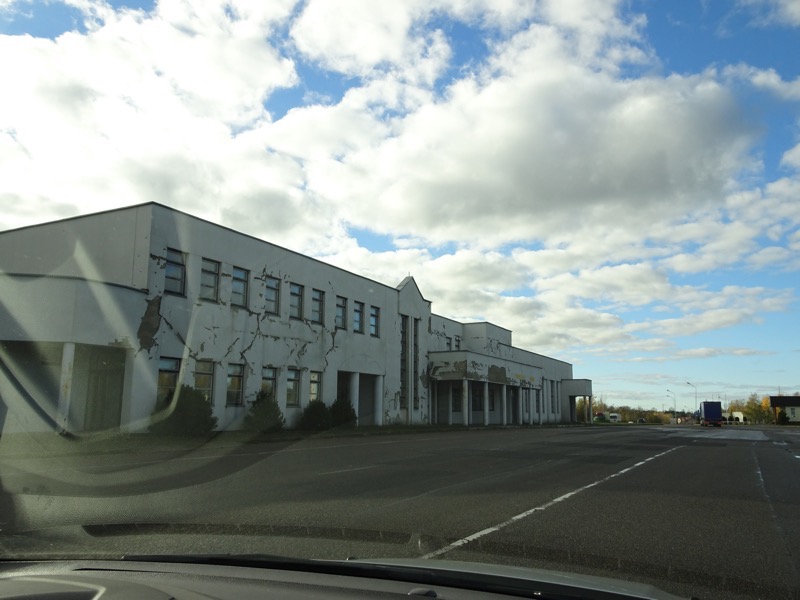
 Thankfully, we got to keep the pretty landscapes.
Thankfully, we got to keep the pretty landscapes.

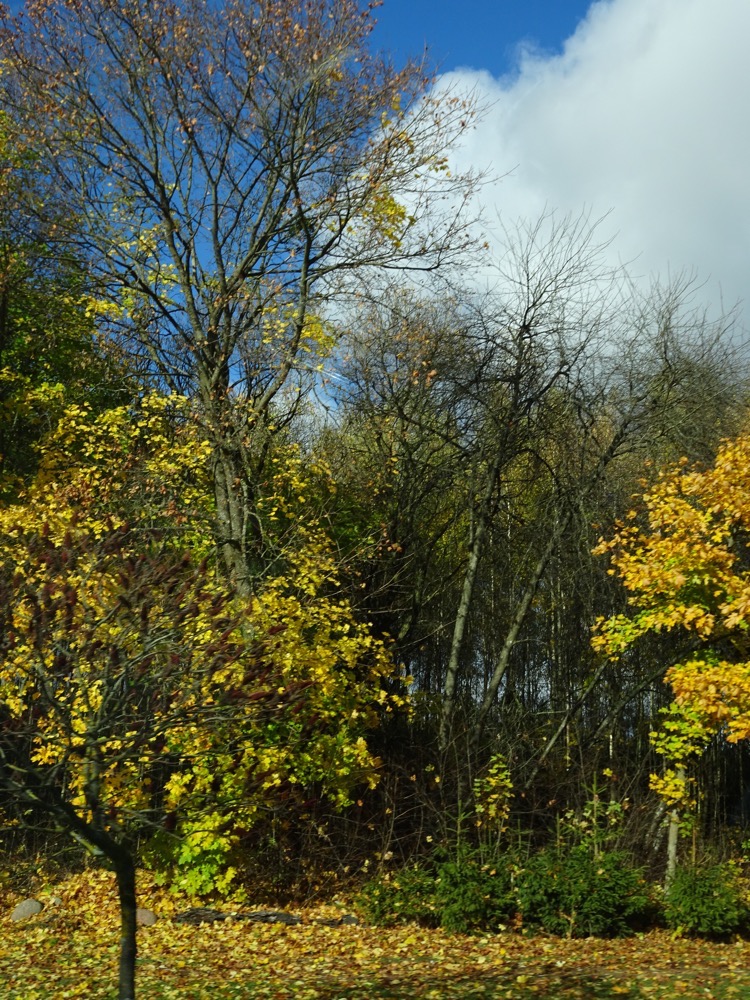
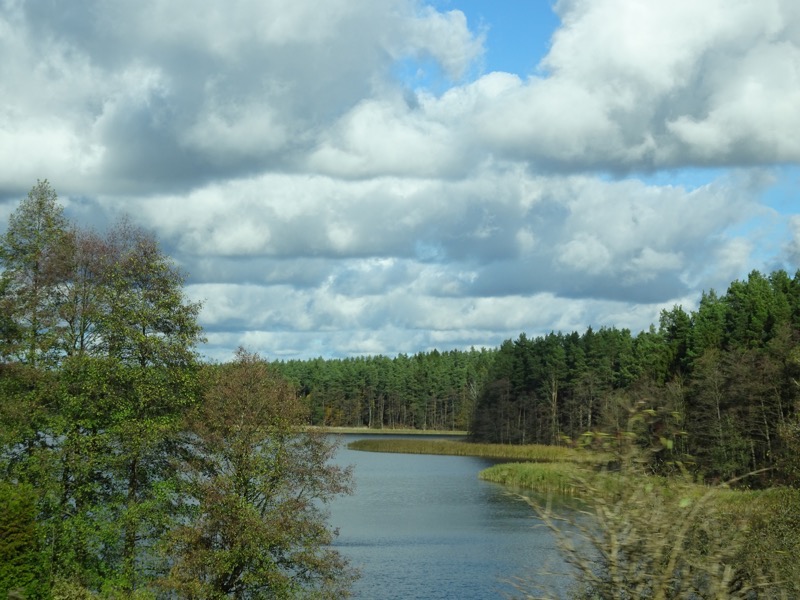
To break up our trip we had decided we would stop just after midday at the Wolf’s Lair. In German known as the ‘Wolfsschanze’. Basically, this was Hitler’s primary military headquarters on the Eastern Front for nearly three years of World War II.
The drive into the complex is skirted by dense forest, far from major roads and urban areas. Much of the forest surrounding the compound was heavily peppered in landmines during the war, as a defence against ground attacks. Would have been so pretty and yet so dangerous…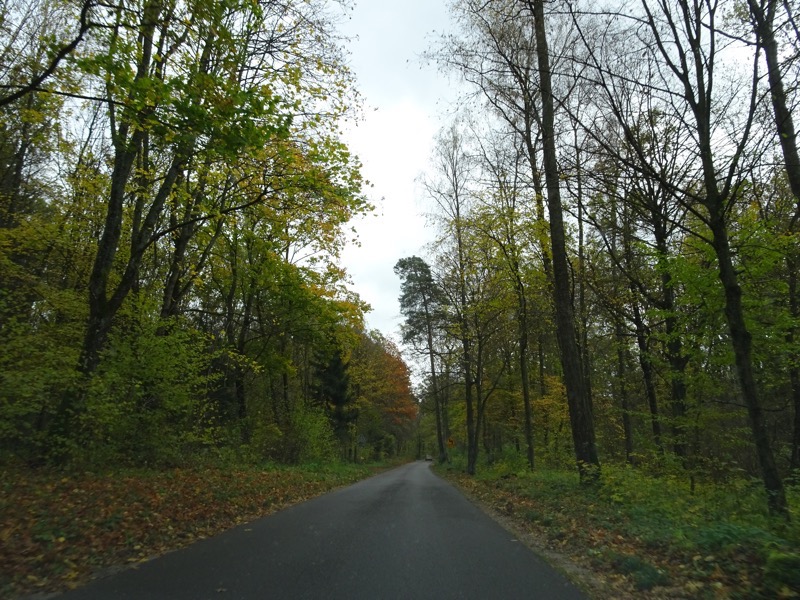 Hitler’s Wolf’s Lair complex is enormous – at roughly 6.5 km2 it was built by June 1941 to house the nearly 2,000 people who would come to live and work in the compound. Among the workers were twenty women who were Hitler’s official food tasters, like Margot Wölk. Margot was from a German family, born and raised in Berlin, married a man named Karl who was in the Germany army and she didn’t know if he was dead or alive. She ended up fleeing to Eastern Prussia when their home in Berlin was bombed and basically had no one to look out for her and found herself rounded up by the local mayor for duty as a food taster to Adolf Hitler?! Her story is remarkable if you read a bit further into it. Hitler’s intelligence sources were informing him that the British were planning an assassination attempt by food poisoning which fed Hitler’s perfectly just fear that people were trying to assassinate him, hence the food tasting team.
Hitler’s Wolf’s Lair complex is enormous – at roughly 6.5 km2 it was built by June 1941 to house the nearly 2,000 people who would come to live and work in the compound. Among the workers were twenty women who were Hitler’s official food tasters, like Margot Wölk. Margot was from a German family, born and raised in Berlin, married a man named Karl who was in the Germany army and she didn’t know if he was dead or alive. She ended up fleeing to Eastern Prussia when their home in Berlin was bombed and basically had no one to look out for her and found herself rounded up by the local mayor for duty as a food taster to Adolf Hitler?! Her story is remarkable if you read a bit further into it. Hitler’s intelligence sources were informing him that the British were planning an assassination attempt by food poisoning which fed Hitler’s perfectly just fear that people were trying to assassinate him, hence the food tasting team.
(Wilczy Szaniec – Polish for Wolf’s Lair)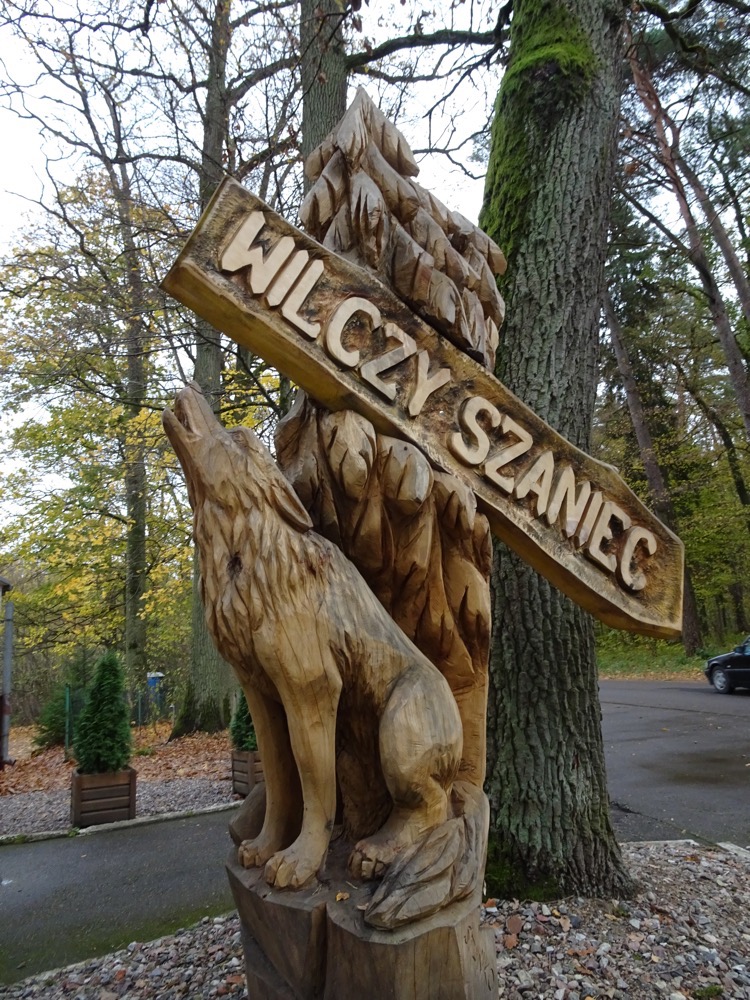
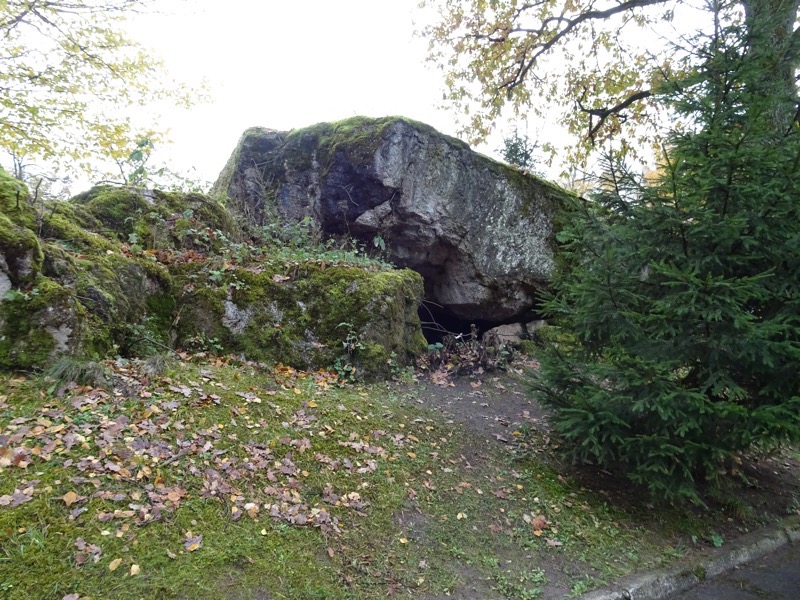
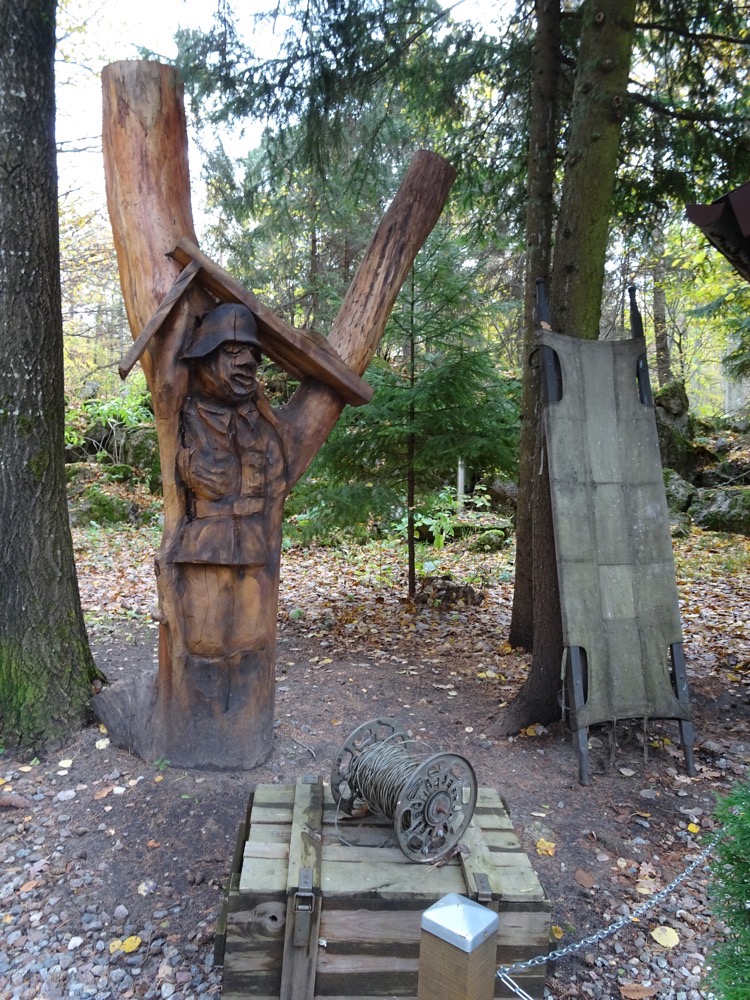
 RSD Command Centre – Reichssicherheitsdienst, a Nazi SS security command post that was responsible for all aspects of security for the complex.
RSD Command Centre – Reichssicherheitsdienst, a Nazi SS security command post that was responsible for all aspects of security for the complex.
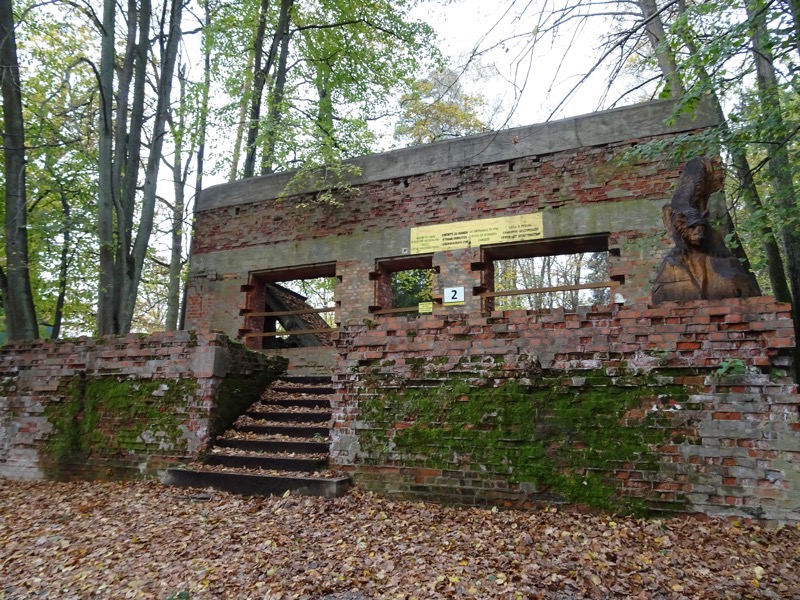 Security was arranged in three concentric circles around the compound:
Security was arranged in three concentric circles around the compound:
Security Zone 3 is the first zone encountered when entering the complex. It was the heavily fortified outer security zone which surrounded the two inner areas. It was defended by landmines I already mentioned and by the Führer Begleit Brigade (FBB), a special armoured security unit from Wehrmacht which was used to man multiple guard houses, watchtowers, and entry and exit checkpoints at the three entrance points.
Security Zone 2 was the next concentric circle in from the outer zone. It housed many lesser Reich Ministers such as Fritz Todt, Albert Speer, and Joachim von Ribbentrop. This zone also had quarters for the various other personnel that lived and worked in the Wolf’s Lair, as well as barracks and amenities for the officers of the RSD.
Security Zone 1 was the inner circle or ‘heart’ of the Wolf’s Lair. It was encircled by steel fencing and guarded by the Reichssicherheitsdienst (RSD) SS specialists. Inside this zone was Hitler’s Bunker and ten other camouflaged bunkers. Each bunker was constructed from steel-reinforced concrete that was over 2m thick. The bunkers in this area were for Hitler’s inner circle – including such infamous bastards as Hermann Göring, Martin Bormann, Wilhelm Keitel, and others.  Nearly all the bunkers seem to have basement air raid shelters or armament storage underneath them.
Nearly all the bunkers seem to have basement air raid shelters or armament storage underneath them.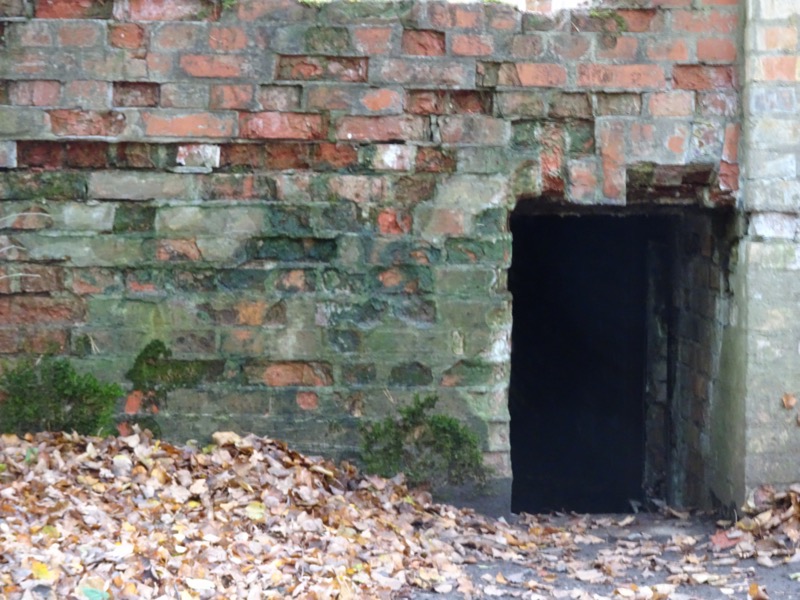 Inside the bunkers were a maze of corridors, conference rooms, workspaces and shelters.
Inside the bunkers were a maze of corridors, conference rooms, workspaces and shelters.
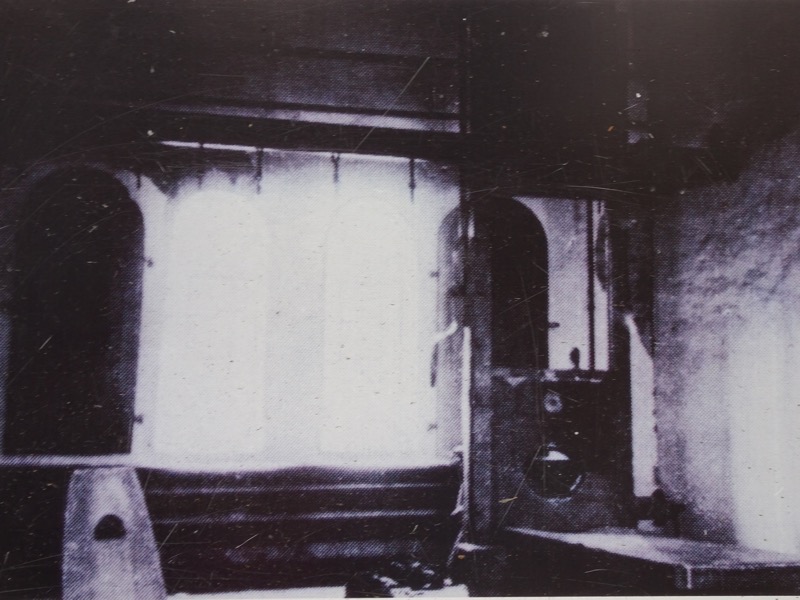
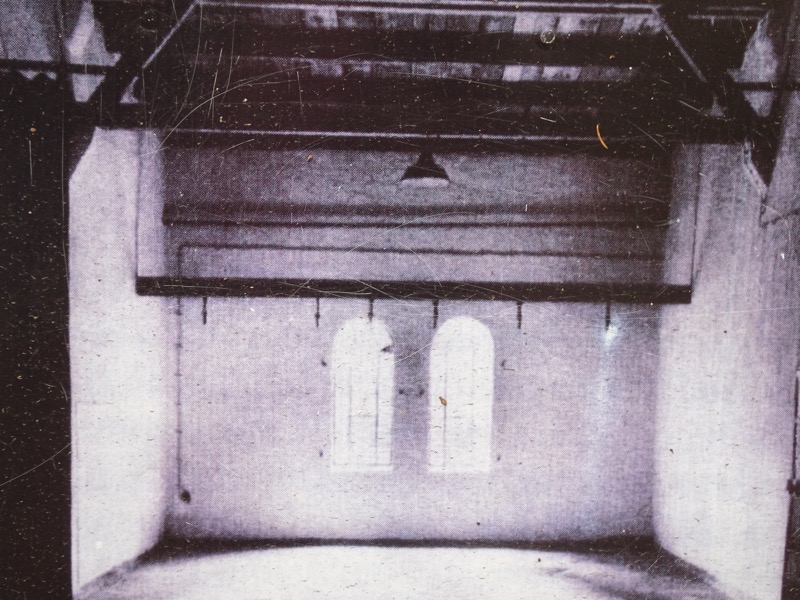
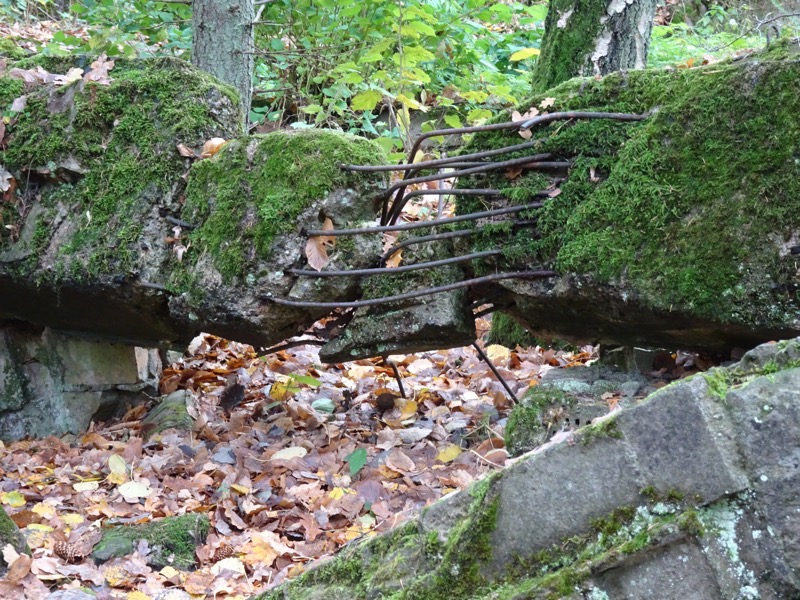 The Wolf’s Lair has several monuments and memorials that have been created to commemorate the people who were associated with this place in WWII, particularly those who did the difficult work of destroying it and making the surrounding areas safe from landmines.
The Wolf’s Lair has several monuments and memorials that have been created to commemorate the people who were associated with this place in WWII, particularly those who did the difficult work of destroying it and making the surrounding areas safe from landmines.
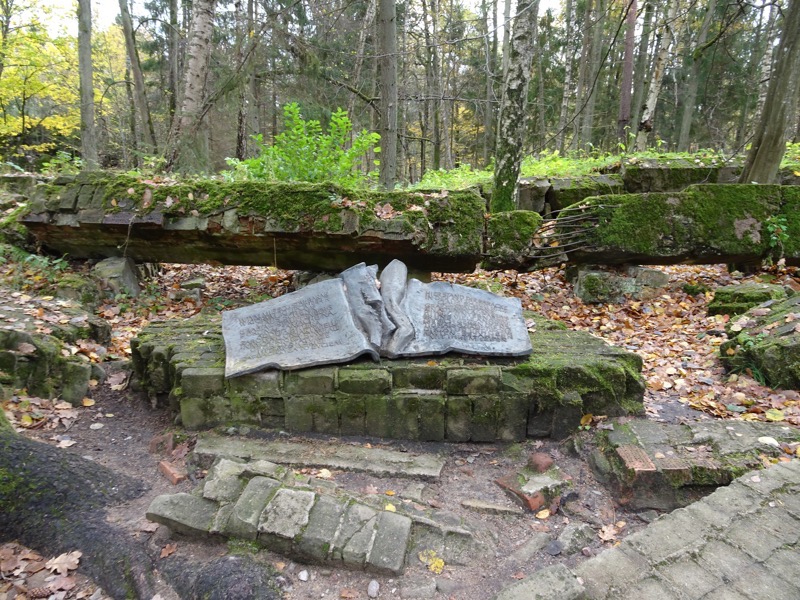


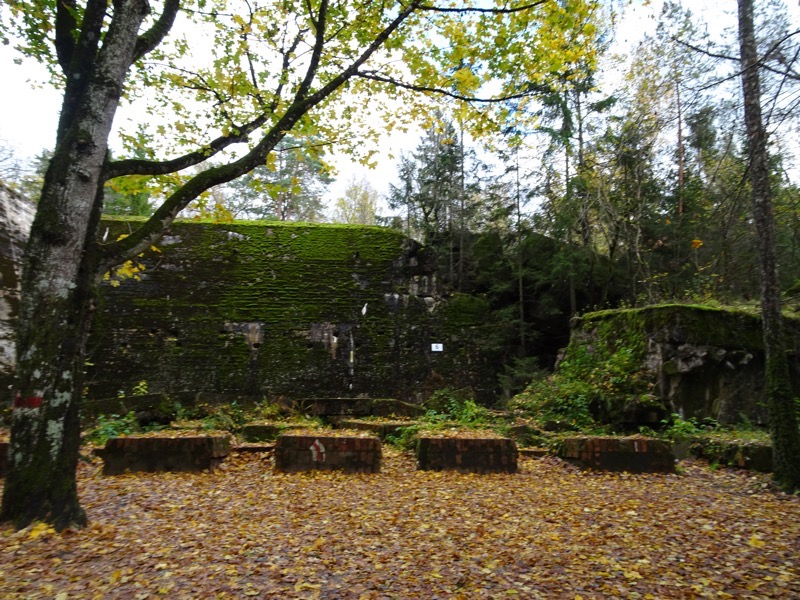 Bunker 6 held a conference room that was the site of the 20 July 1944 assassination attempt that was organized by a group of civilians, in cohorts with some acting and retired Wehrmacht officers whose goal was to kill Hitler, end the war, and establish a new Germany government. Staff officer Colonel Claus von Stauffenberg was the primary assassin and he carried a briefcase into what was a daily conference meeting. He was supposed to place it a few feet from where Hitler would hold his meeting, but unfortunately, on the day the attempt was to be made, the meeting location was changed to a different building due to refurbishment happening in the Führer’s Bunker *and* it was rescheduled to be earlier than usual – so the attempt was unsuccessful. The bomb went off as timed, and the interior of the Bunker 6 was destroyed, four people were killed, but Hitler sustained only slight injuries.
Bunker 6 held a conference room that was the site of the 20 July 1944 assassination attempt that was organized by a group of civilians, in cohorts with some acting and retired Wehrmacht officers whose goal was to kill Hitler, end the war, and establish a new Germany government. Staff officer Colonel Claus von Stauffenberg was the primary assassin and he carried a briefcase into what was a daily conference meeting. He was supposed to place it a few feet from where Hitler would hold his meeting, but unfortunately, on the day the attempt was to be made, the meeting location was changed to a different building due to refurbishment happening in the Führer’s Bunker *and* it was rescheduled to be earlier than usual – so the attempt was unsuccessful. The bomb went off as timed, and the interior of the Bunker 6 was destroyed, four people were killed, but Hitler sustained only slight injuries.
Before the bomb detonated, Colonel Stauffenberg and his co-conspirator, Lieutenant Werner von Haeften, had already left Wolf’s Lair to return to Berlin. They managed to pass through several of the security zones and after only a short delay at the RSD guard post just outside Zone 1, they were allowed to leave the site by car. News arrived in Berlin fairly quickly of the assassination attempt, and of Hitler’s survival. Poor Colonel Von Stauffenberg, his Lieutenant, and several co-conspirators were arrested and shot that same evening outside the Bendlerblock in Berlin.
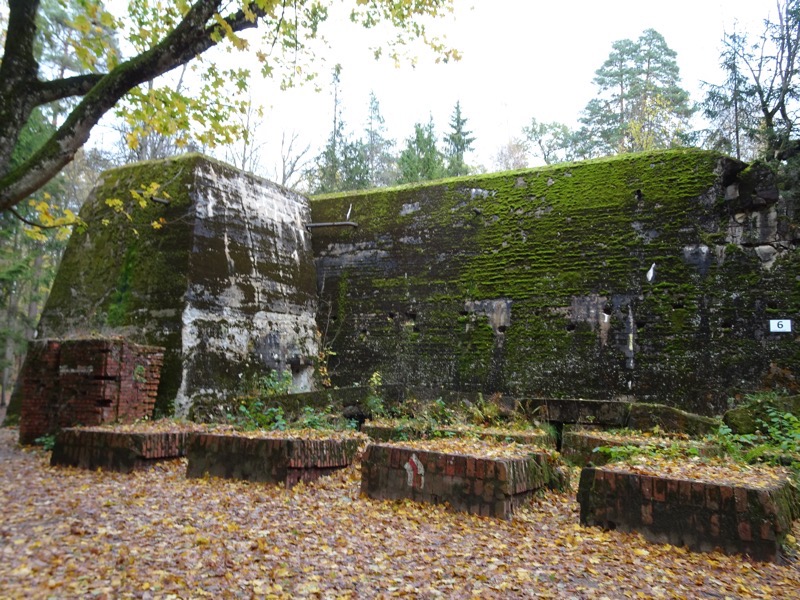 Reichsmarschall Hermann Göring surveying the conference room that was destroyed by the suitcase bomb left by Claus von Stauffenberg on 20 July 1944
Reichsmarschall Hermann Göring surveying the conference room that was destroyed by the suitcase bomb left by Claus von Stauffenberg on 20 July 1944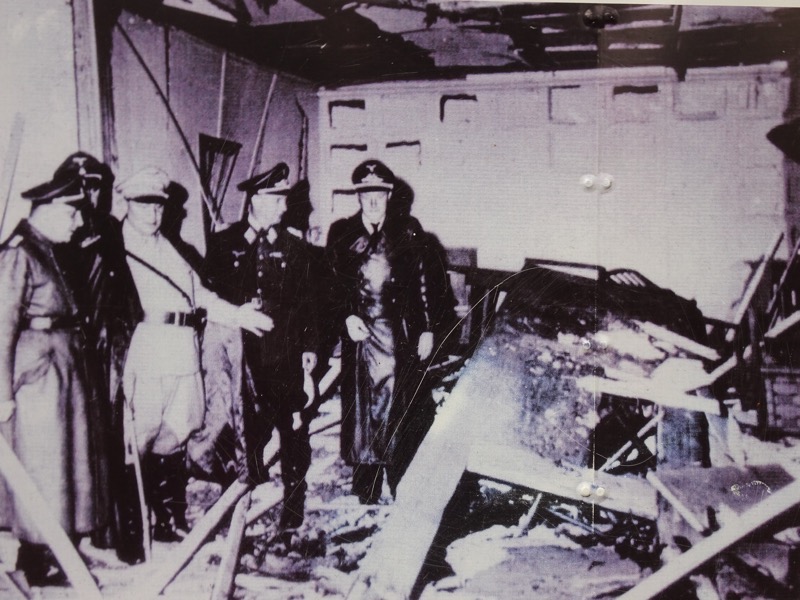

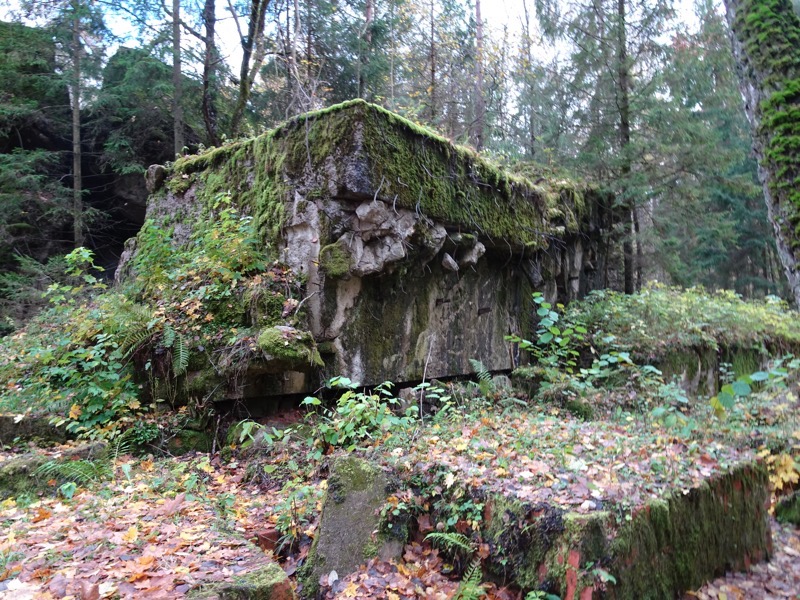
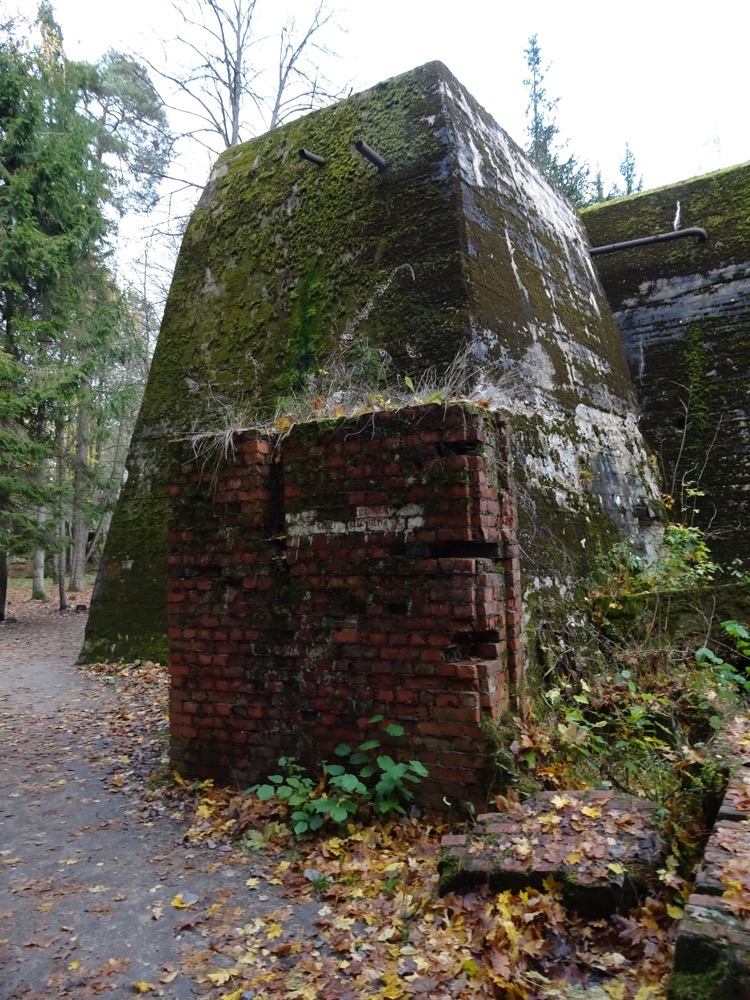
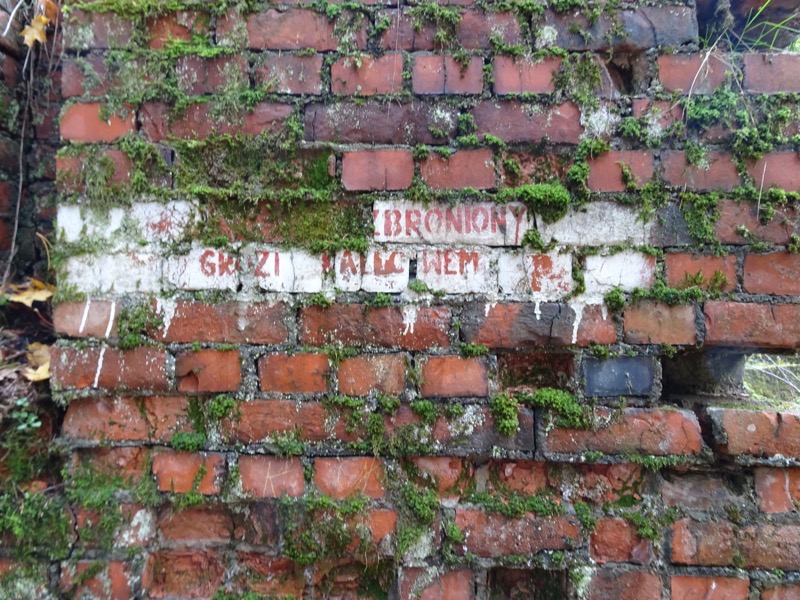 It struck me at Auschwitz-Birkenau and now again at Wolfsschanze just the sheer size and scope of the military industrial complex that was deployed by the Germans during World War II. It has been as eye-opening as the first time I went to Gallipoli – I had learned about the ANZACS and the Gallipoli military disaster during my formal education and had continued to study and gain knowledge o this topic throughout my entire life. But until I found myself looking down on ANZAC Cove and looking at the topography that the ANZAC diggers were attempting to overcome, the enormity and impossibility of it all did not really become a tangible and concrete concept in my mind.
It struck me at Auschwitz-Birkenau and now again at Wolfsschanze just the sheer size and scope of the military industrial complex that was deployed by the Germans during World War II. It has been as eye-opening as the first time I went to Gallipoli – I had learned about the ANZACS and the Gallipoli military disaster during my formal education and had continued to study and gain knowledge o this topic throughout my entire life. But until I found myself looking down on ANZAC Cove and looking at the topography that the ANZAC diggers were attempting to overcome, the enormity and impossibility of it all did not really become a tangible and concrete concept in my mind.
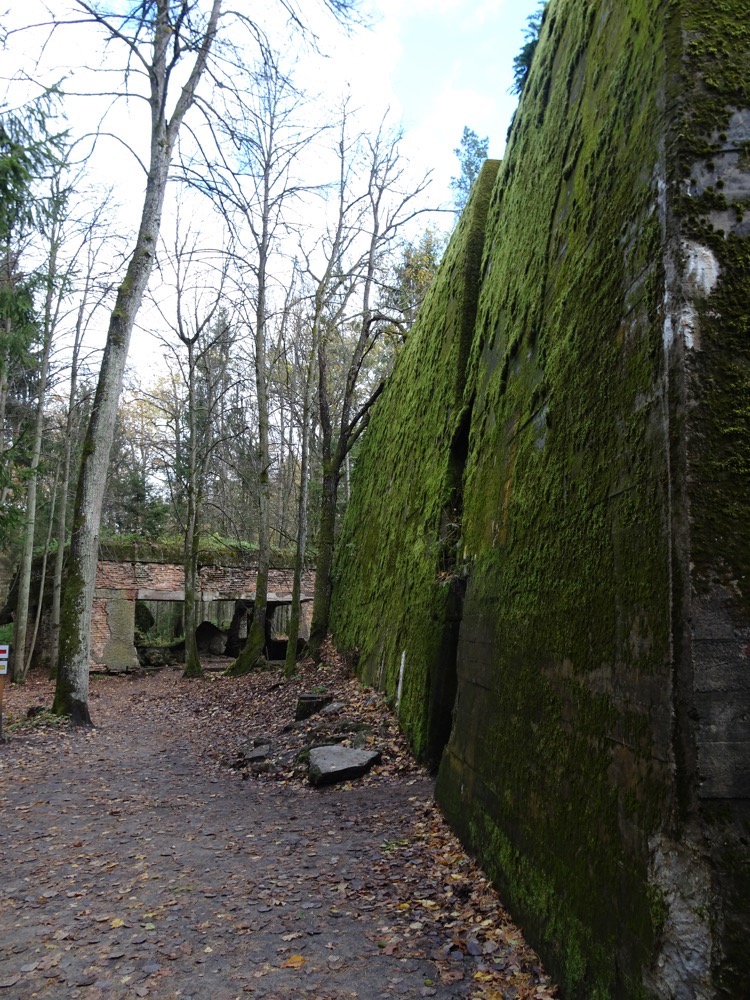 Likewise, having grown up in the ’70s and having been taught WWII history and continuing to learn more and more about the Holocaust over the years – the displacement and deportation of millions of people throughout Europe, the slave labour and abuses of the concentration camps, and of course the details of the truly horrific attempt to completely exterminate the European Jewish population in death camps – these things too have been academic concepts in my mind without concrete frame of reference to anchor them to.
Likewise, having grown up in the ’70s and having been taught WWII history and continuing to learn more and more about the Holocaust over the years – the displacement and deportation of millions of people throughout Europe, the slave labour and abuses of the concentration camps, and of course the details of the truly horrific attempt to completely exterminate the European Jewish population in death camps – these things too have been academic concepts in my mind without concrete frame of reference to anchor them to.
Now… having seen the enormity and scale of the just a portion of German military operation during WWII (and this has literally just been a small peek at what the Nazis had put in place), it has completely eclipsed my expectations and I am finding it difficult to verbalise just how monstrously immense the scale of their endeavour was, and the ruthless efficiency with which they appear to have attempted to deploy it. It’s… shocking. Truly shocking. I don’t know how something I have known about my entire life can be shocking. But it is. 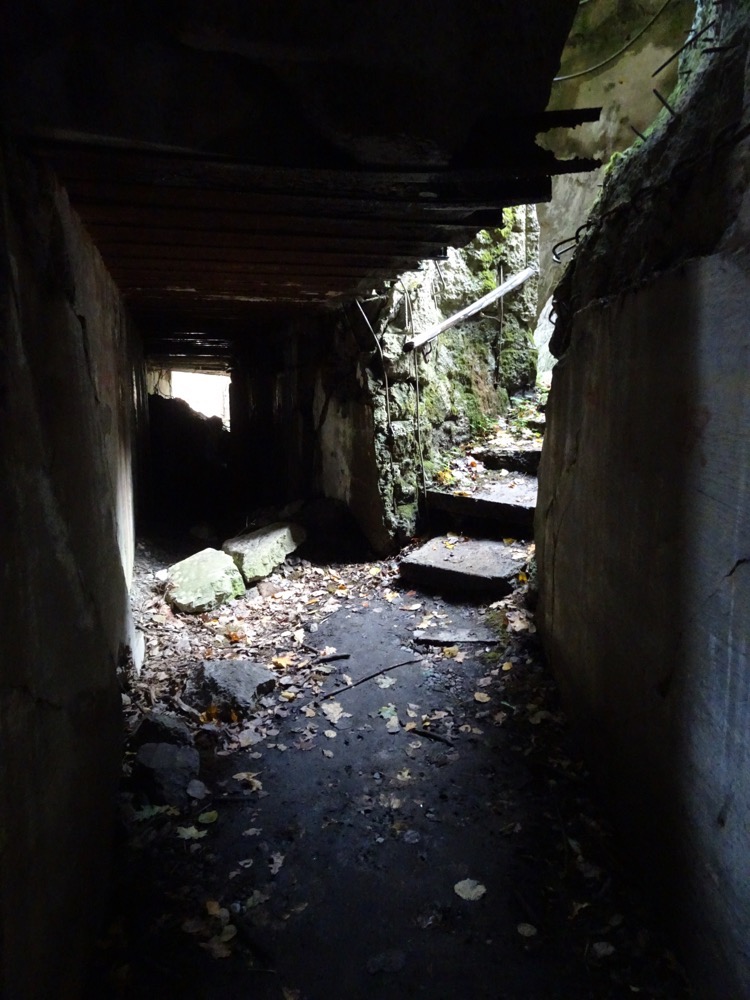 Bunker 8 was a Guest Bunker and Air Raid Shelter.
Bunker 8 was a Guest Bunker and Air Raid Shelter.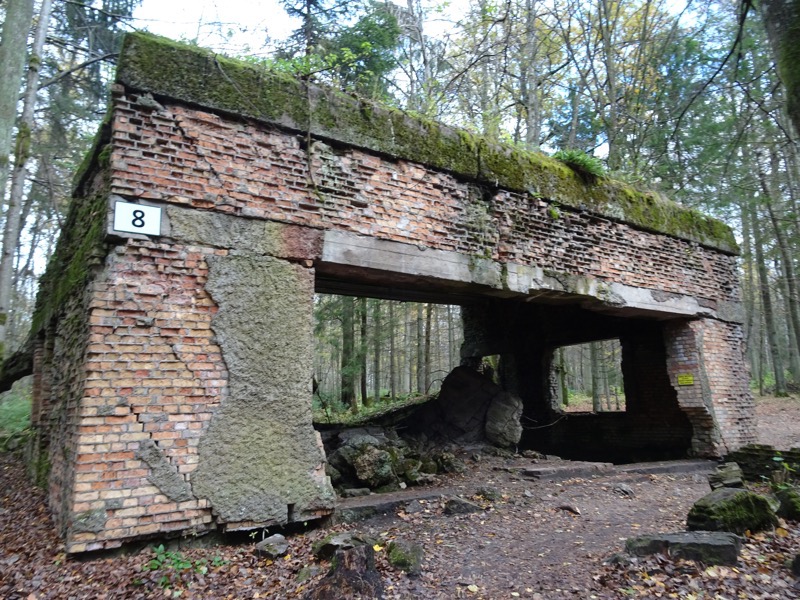
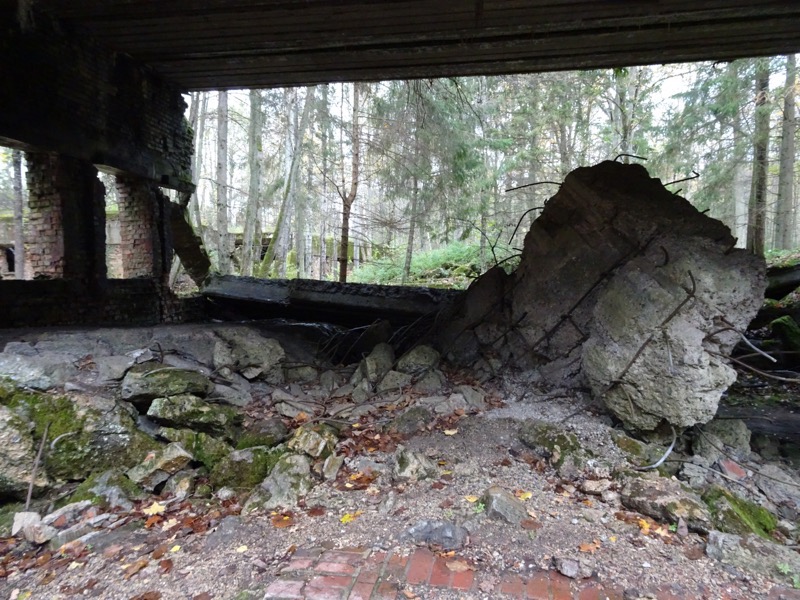
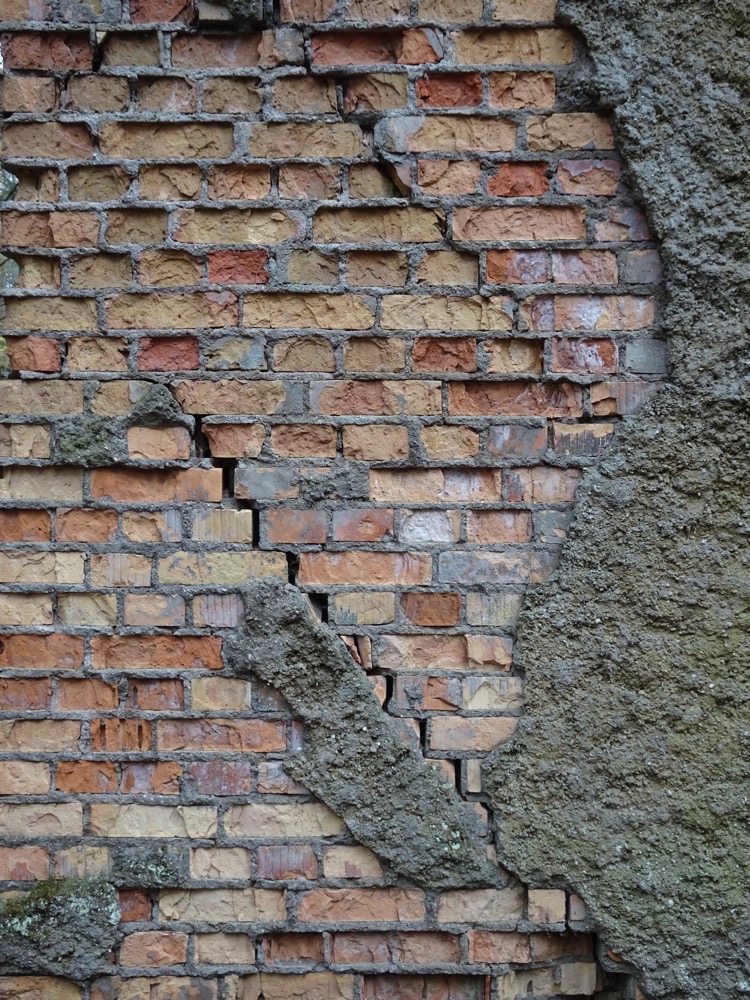 This enormous slab of concrete weighing who knows how many tonnes, looks like it is precariously balanced on just a few decaying bricks…
This enormous slab of concrete weighing who knows how many tonnes, looks like it is precariously balanced on just a few decaying bricks…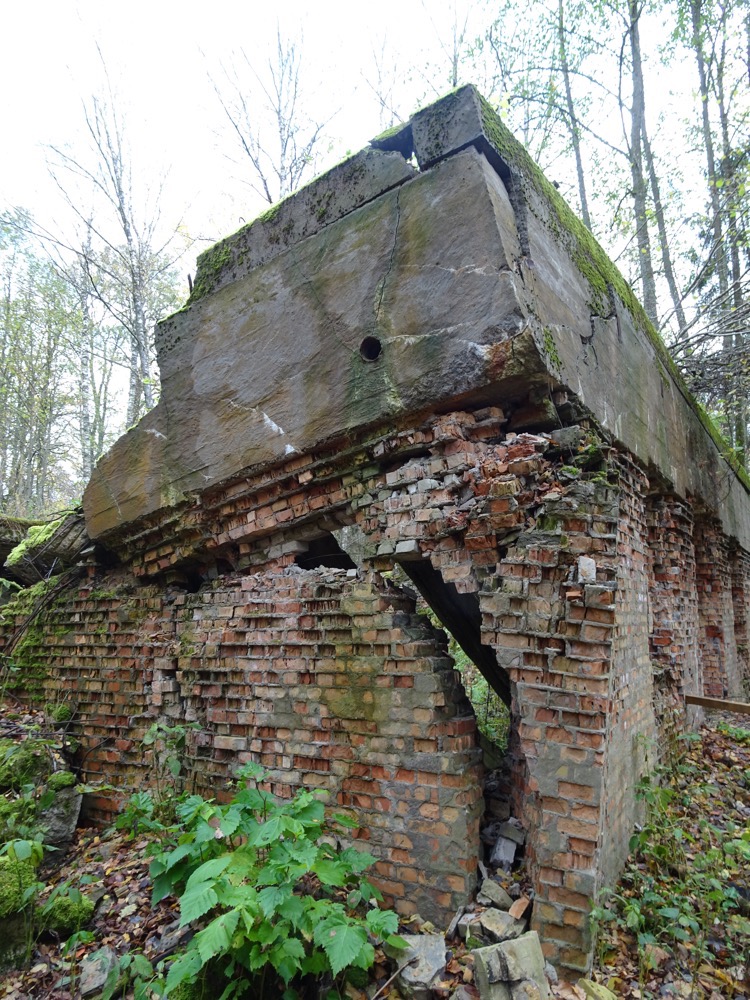

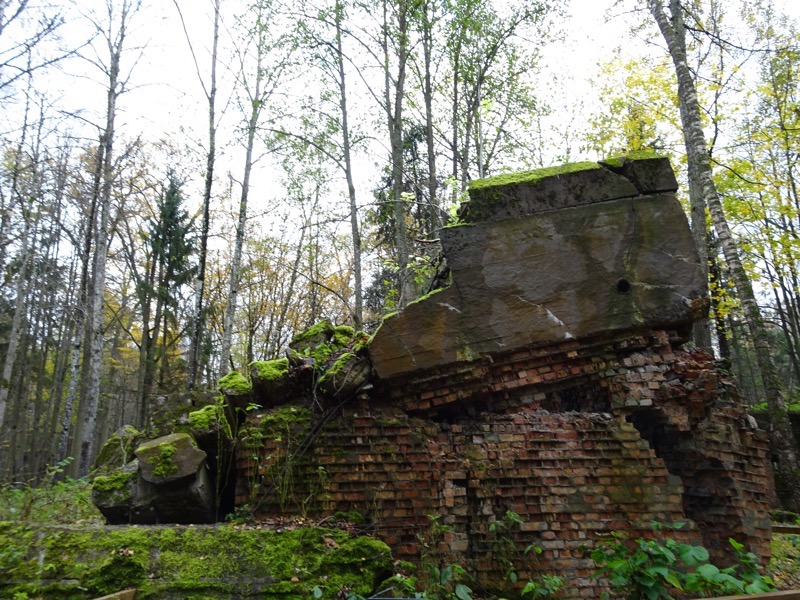 It’s not difficult to find a sombre beauty in the decay at Pripyat. Likewise, it is not difficult to find incredible textures, decaying walls and moss-covered walls at Wolf’s Lair that are similarly beautiful in their own way.
It’s not difficult to find a sombre beauty in the decay at Pripyat. Likewise, it is not difficult to find incredible textures, decaying walls and moss-covered walls at Wolf’s Lair that are similarly beautiful in their own way.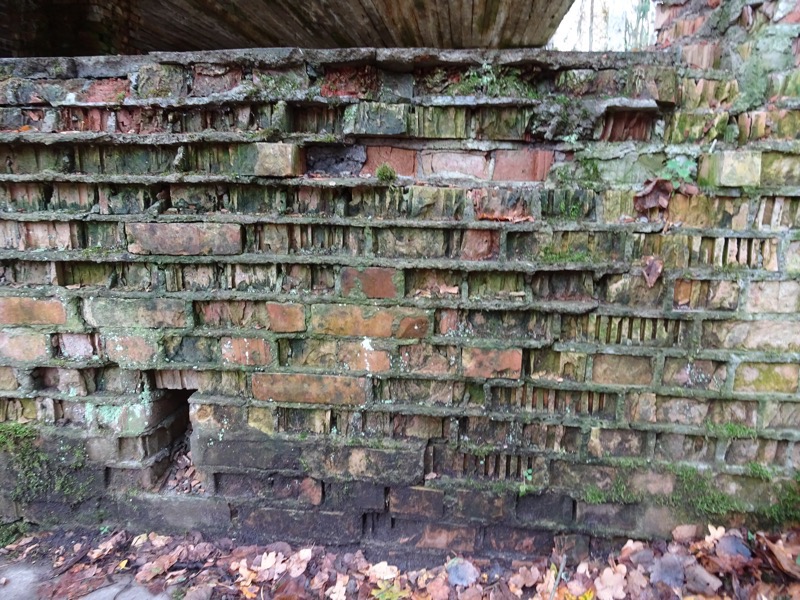

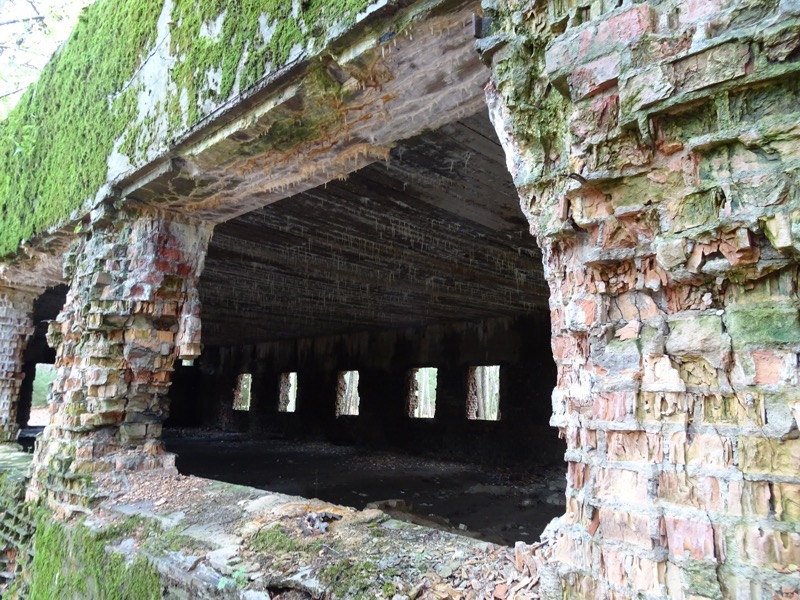
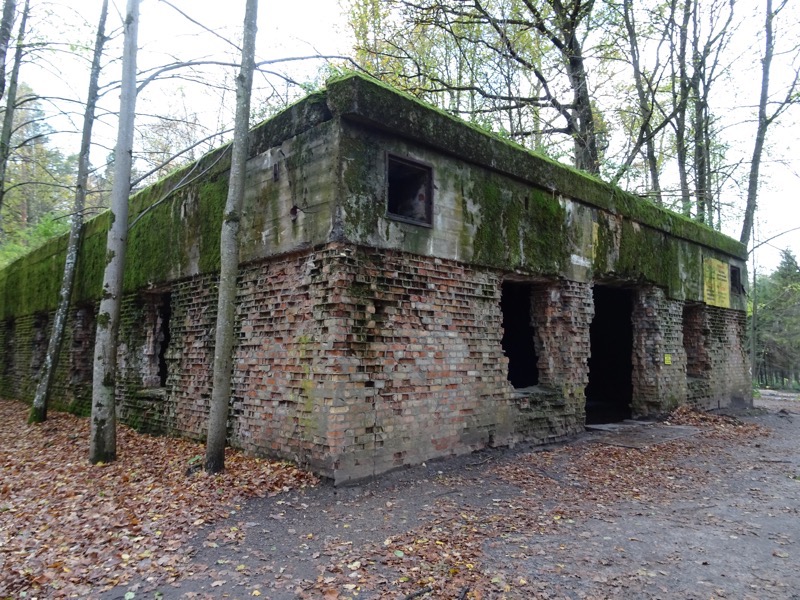
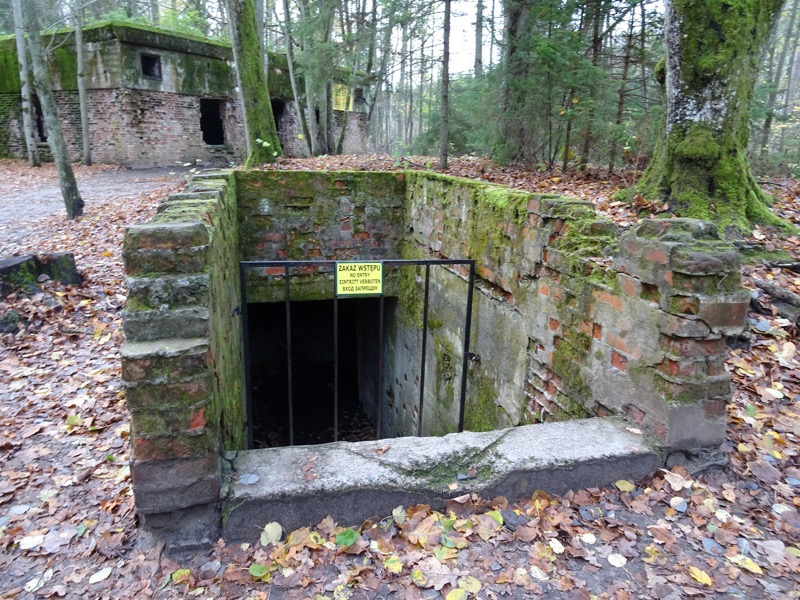 Bunker 11: Headquarters of Johann Rattenhuber, who was the Chief of the SS and head of Hitler’s security department. Also, fun fact – his headquarters doubled as the Post Office.
Bunker 11: Headquarters of Johann Rattenhuber, who was the Chief of the SS and head of Hitler’s security department. Also, fun fact – his headquarters doubled as the Post Office. 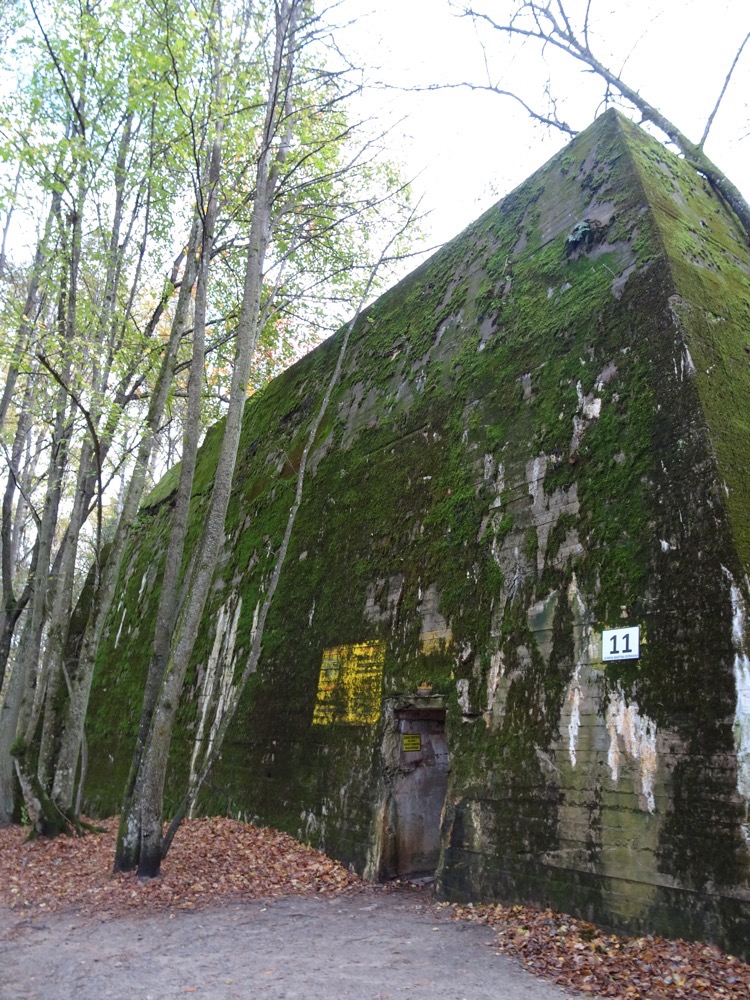


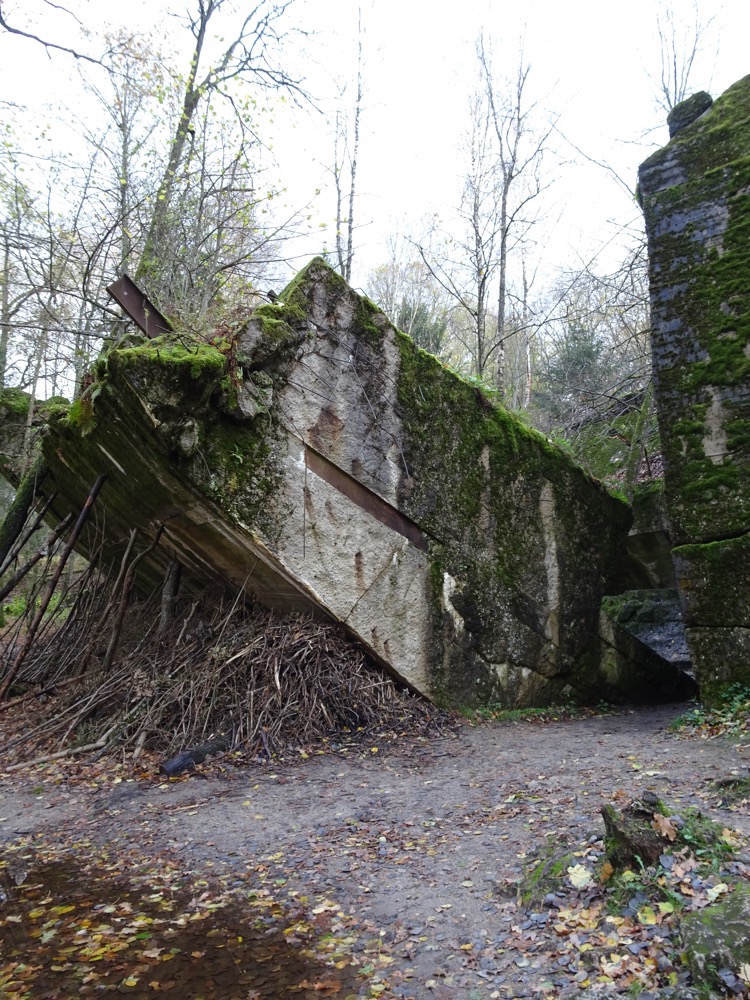 The bunkers were split wide open by explosives when the Red Army reached Eastern Prussia during the Baltic Offensive of 1944. Hitler left Wolf’s Lair for the last time on 20 November 1944 as the Soviet armies advanced. The Red Army took the site without firing a shot two days later, on the 22nd of November. Shortly after, directives were issued to destroy the complex and the demolition took place some months later in January 1945. Literally tonnes of explosives were used. Each bunker requiring approximately 8,000 kg of TNT to blast through the reinforced concrete. Given that most of these buildings have large portions still intact, even that amount of explosive was only enough to partially destroy these enormous reinforced bunkers.
The bunkers were split wide open by explosives when the Red Army reached Eastern Prussia during the Baltic Offensive of 1944. Hitler left Wolf’s Lair for the last time on 20 November 1944 as the Soviet armies advanced. The Red Army took the site without firing a shot two days later, on the 22nd of November. Shortly after, directives were issued to destroy the complex and the demolition took place some months later in January 1945. Literally tonnes of explosives were used. Each bunker requiring approximately 8,000 kg of TNT to blast through the reinforced concrete. Given that most of these buildings have large portions still intact, even that amount of explosive was only enough to partially destroy these enormous reinforced bunkers.
After that, efforts were started to clear each of the Wolf Lair’s security zones of the landmines that had been left behind. It took over a decade to clear more than 54,000 mines that had been scattered around the complex and in the security zones and wasn’t given the ‘all clear’ until 1955.
Bunker 13 – Hitler’s personal air raid shelter and bunker.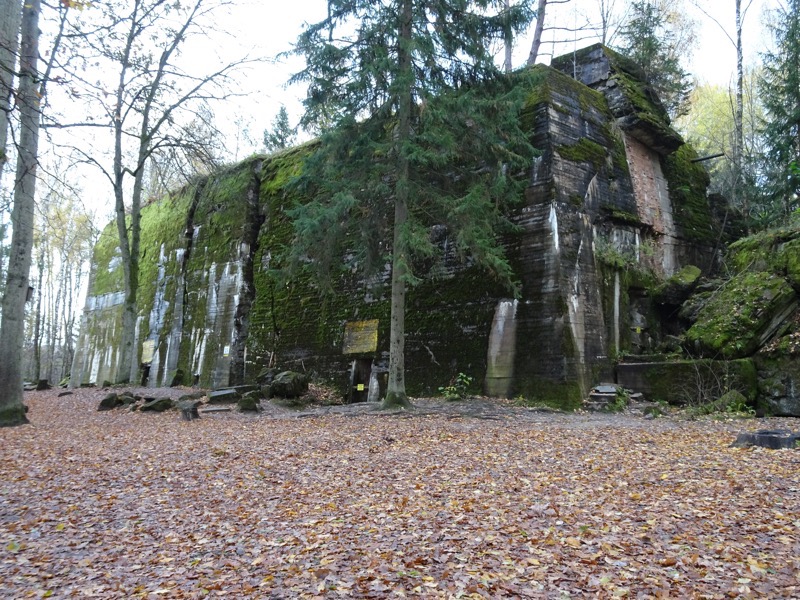
Each day, Hitler would take a walk alone with his dog at 09:00 in the morning before looking at the mail (which came by air or by train). At 12:00 he would have a situation briefing, which was normally held in Wilhelm Keitel’s or Alfred Jodl’s bunkers. These meetings would usually run for about two hours, after which he would have lunch at 14:00 in the dining hall. Witnesses recall that Hitler was a man of routine and habits and he invariably sat in the same chair, always between Alfred Jodl and Otto Dietrich. Wilhelm Keitel, Martin Bormann, and Hermann Göring’s personal adjutant, General Karl Bodenschatz would sit opposite him.
After lunch, Hitler would work on non-military matters and in the late afternoon, coffee would be served around 17:00 before a second military briefing with Alfred Jodl at 18:00. Dinner each day would start at 19:30 and could last up to two hours (I can’t stop thinking about the twenty women who were ‘kept’ here as his food tasters!), after which they would often watch films in the cinema. Yes, one of these big bunker style buildings was a cinema – I guess they needed somewhere to watch all those Leni Riefenstahl propaganda films (they also had a gambling hall/casino here in one as well). Hitler would usually retire to his private quarters where he ‘gave monologues’ to his closest acquaintance, including the two female secretaries who travelled with him to the Wolf’s Lair. Sometimes Hitler and his entourage would listen to gramophone records after dinner – Beethoven, Wagner or other operas – in what sounds like a very civilized and precise way to go about your day… but in among the seemingly orderly lives that these people lived, here, among in these bunkers, decisions were made that effectively signed the death warrants of millions of people across the whole of Nazi-occupied Europe as it was here the ‘Final Solution’ was developed and implemented.

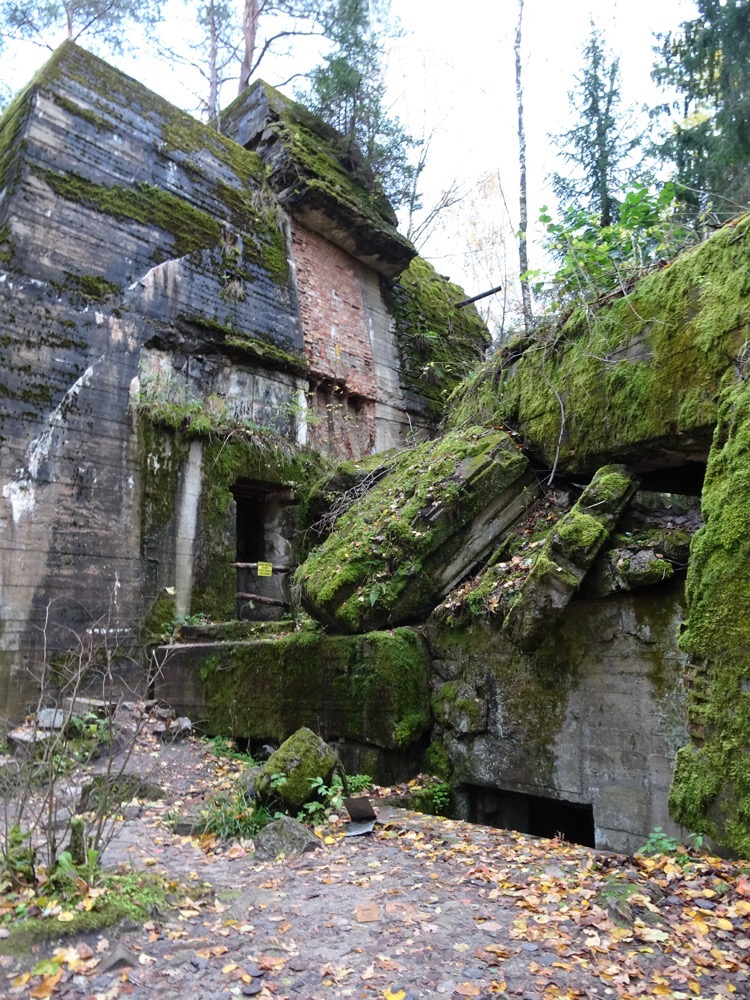

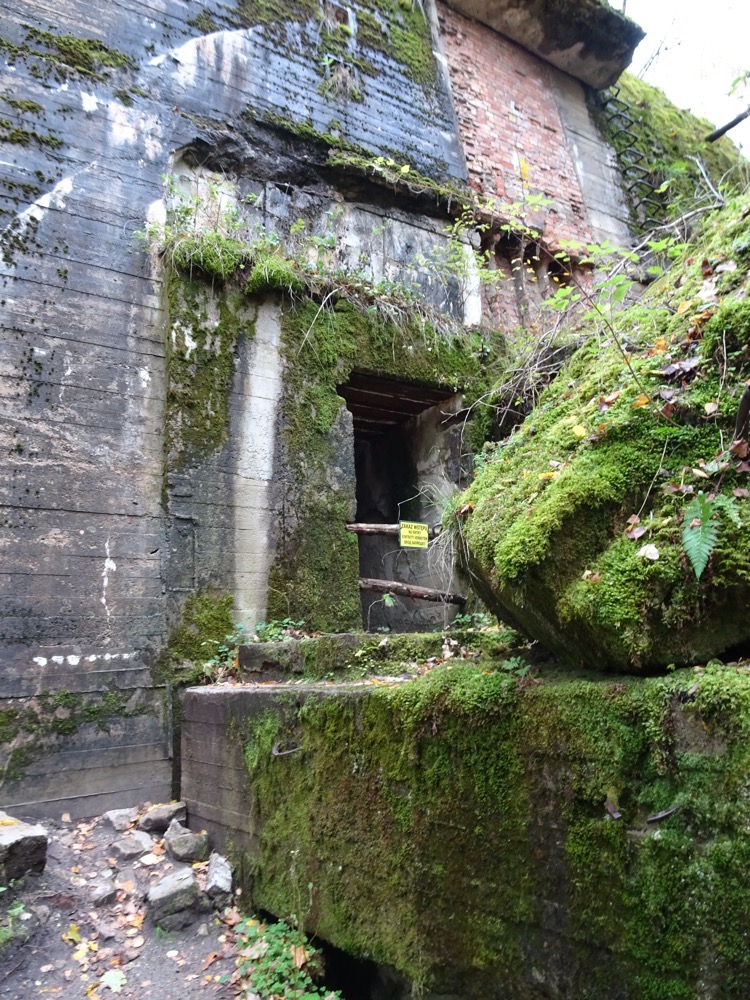

 Looking inside what was Bunker 13 from the rear.
Looking inside what was Bunker 13 from the rear.

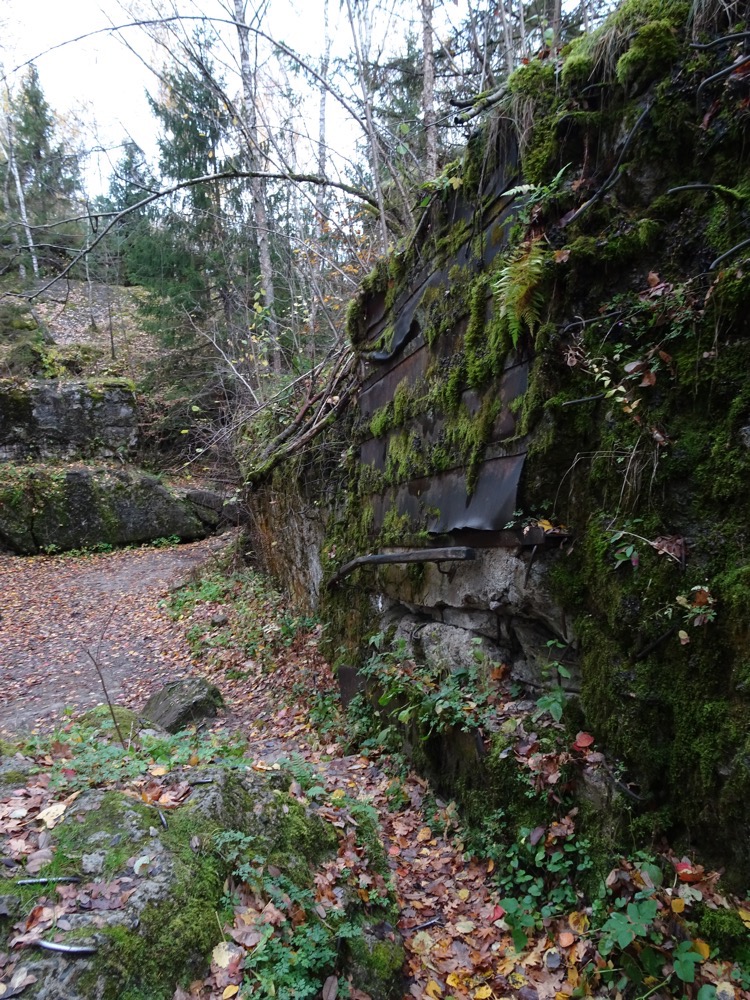
Building 12 – Radio and Telex Buildings
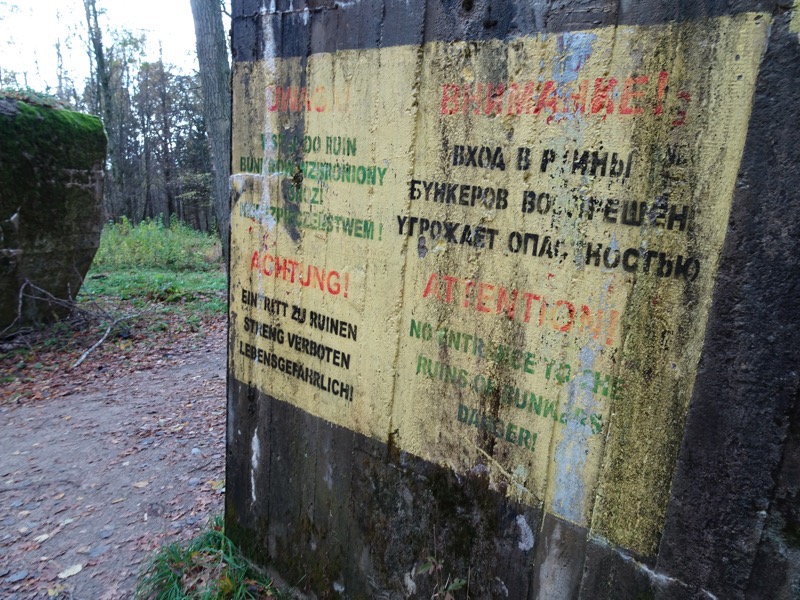 Bunker 20 – Martin Bormann’s personal air raid shelter for him and his staff. Bormann was Hitler’s personal secretary.
Bunker 20 – Martin Bormann’s personal air raid shelter for him and his staff. Bormann was Hitler’s personal secretary.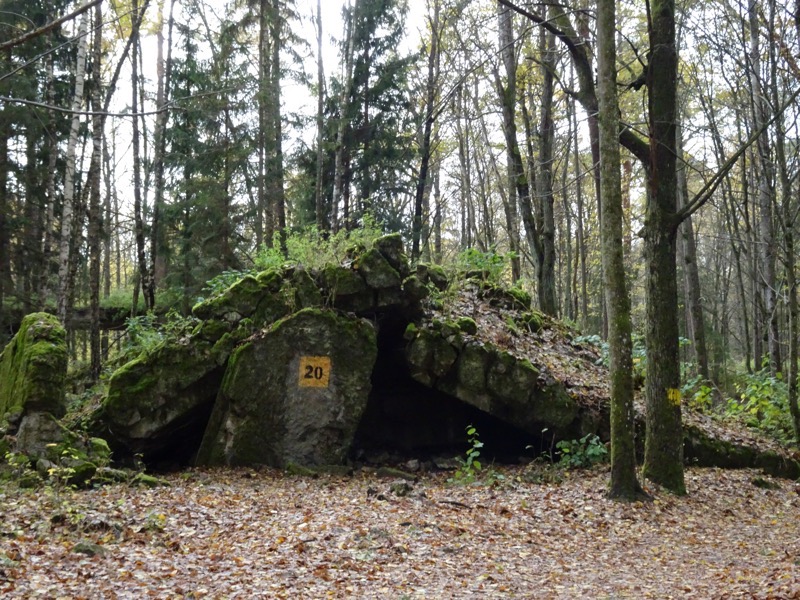 Bunker 16 was a building to house generators to provide power for the complex.
Bunker 16 was a building to house generators to provide power for the complex.
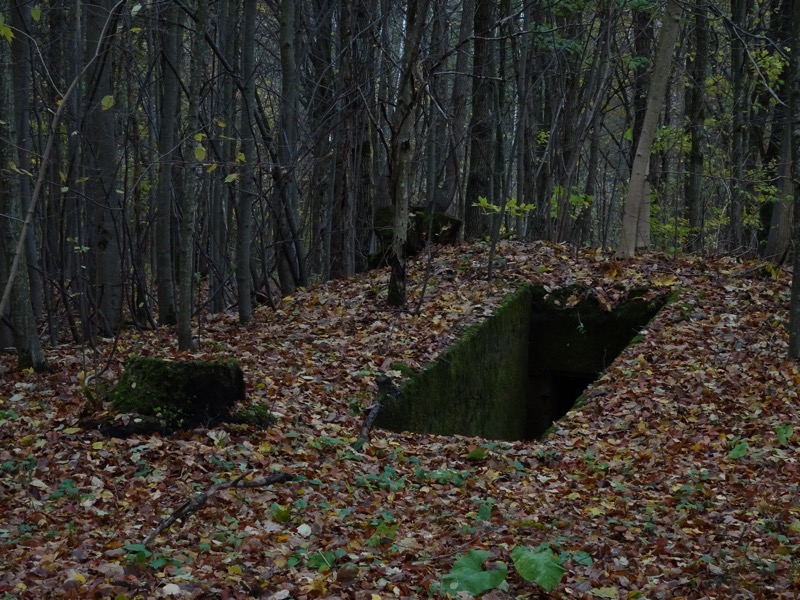 Hermann Goering’s Bunker:
Hermann Goering’s Bunker: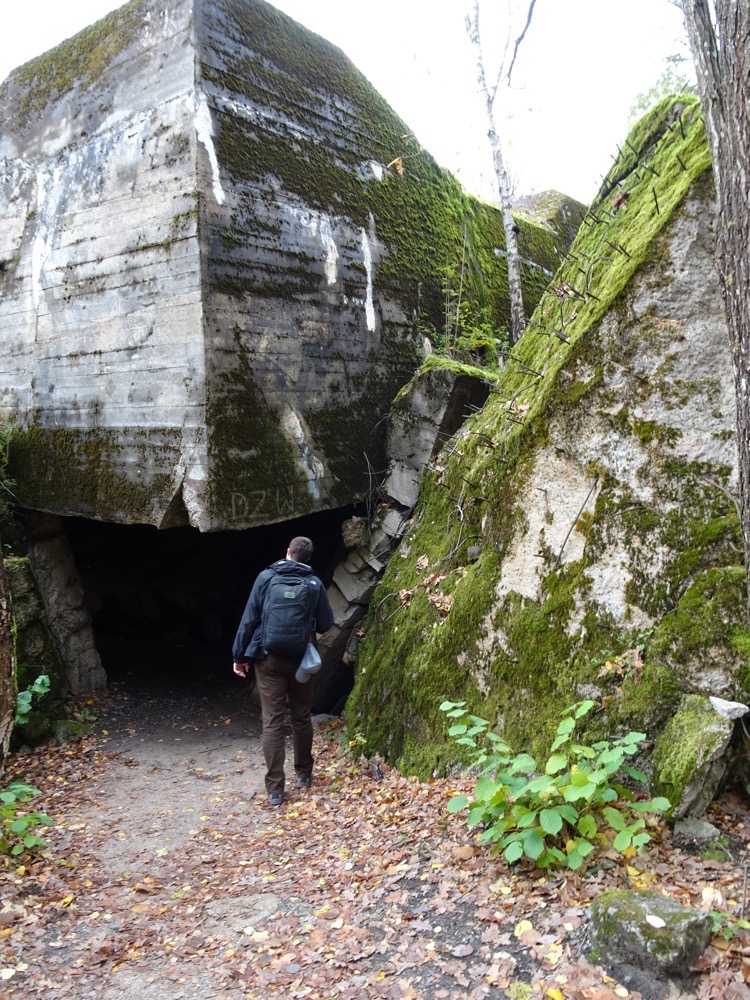 Walking under the ruins of Goering’s destroyed Bunker. It is cold, damp, and there is lots of thick rebar sticking out at all angles. Over our heads is a massive – just indescribably, massive and heavy – concrete slab over two metres thick. There are ‘no entrance’ signs everywhere but plenty of evidence that visitors have been walking through these spaces frequently.
Walking under the ruins of Goering’s destroyed Bunker. It is cold, damp, and there is lots of thick rebar sticking out at all angles. Over our heads is a massive – just indescribably, massive and heavy – concrete slab over two metres thick. There are ‘no entrance’ signs everywhere but plenty of evidence that visitors have been walking through these spaces frequently.
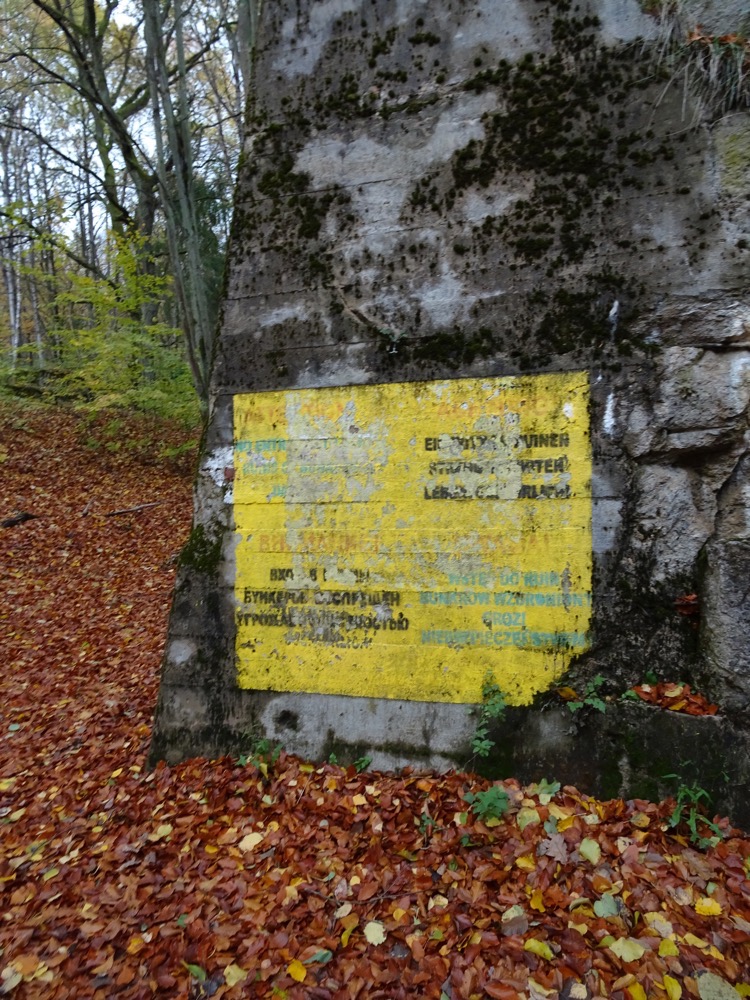 The concrete walls were indeed well thicker than 2-5m… yale for scale.
The concrete walls were indeed well thicker than 2-5m… yale for scale.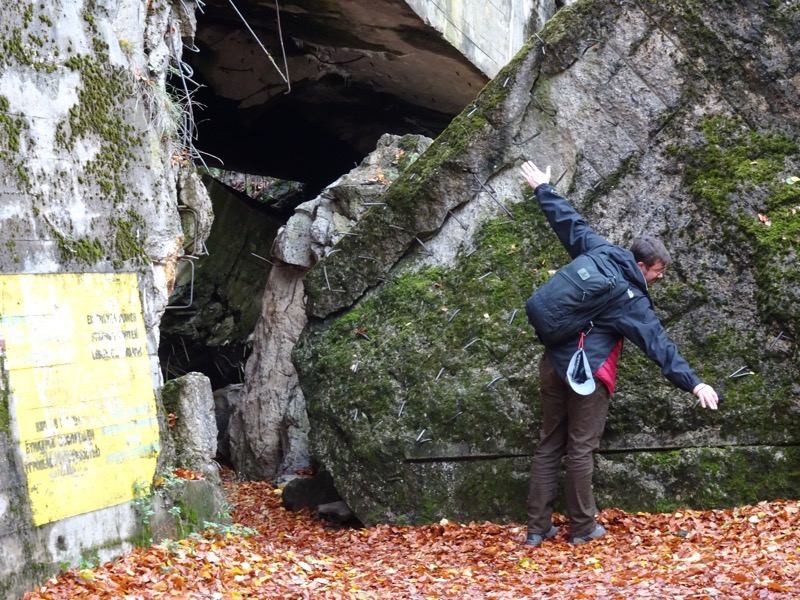 I had read that this place is not so great to visit in the summer – partly because of the crowds (though it apparently only sees 200,000 visitors a year, which is not that many compared to say, the five million plus visitors that see the Sistine Chapel each year), but also because of the foliage. In summer all the trees are still covered in their leaves, which obscure the size and shapes of the enormous bunkers. This was quite deliberate, Hitler was paranoid about the likelihood of an air bombing raid so the thick tree cover in the middle of the forest was designed to camouflage the entire complex. No major air offensive ever occurred here and it could be because the Western Allies were unaware of the Wolf’s Lair location entirely or were just unaware of its strategic importance – they have never disclosed whether they knew about it or not. The Soviet Red Army was certainly unaware of the complex’s location and scale when they discovered it during their advance towards Germany in late 1944. So anyway, from the leaf litter which is well over 20cm deep everywhere, I can imagine that in summer you would find it hard to make out the size, scale and even proximity of these buildings to each other, in the summertime.
I had read that this place is not so great to visit in the summer – partly because of the crowds (though it apparently only sees 200,000 visitors a year, which is not that many compared to say, the five million plus visitors that see the Sistine Chapel each year), but also because of the foliage. In summer all the trees are still covered in their leaves, which obscure the size and shapes of the enormous bunkers. This was quite deliberate, Hitler was paranoid about the likelihood of an air bombing raid so the thick tree cover in the middle of the forest was designed to camouflage the entire complex. No major air offensive ever occurred here and it could be because the Western Allies were unaware of the Wolf’s Lair location entirely or were just unaware of its strategic importance – they have never disclosed whether they knew about it or not. The Soviet Red Army was certainly unaware of the complex’s location and scale when they discovered it during their advance towards Germany in late 1944. So anyway, from the leaf litter which is well over 20cm deep everywhere, I can imagine that in summer you would find it hard to make out the size, scale and even proximity of these buildings to each other, in the summertime. Hermann Goering’s House
Hermann Goering’s House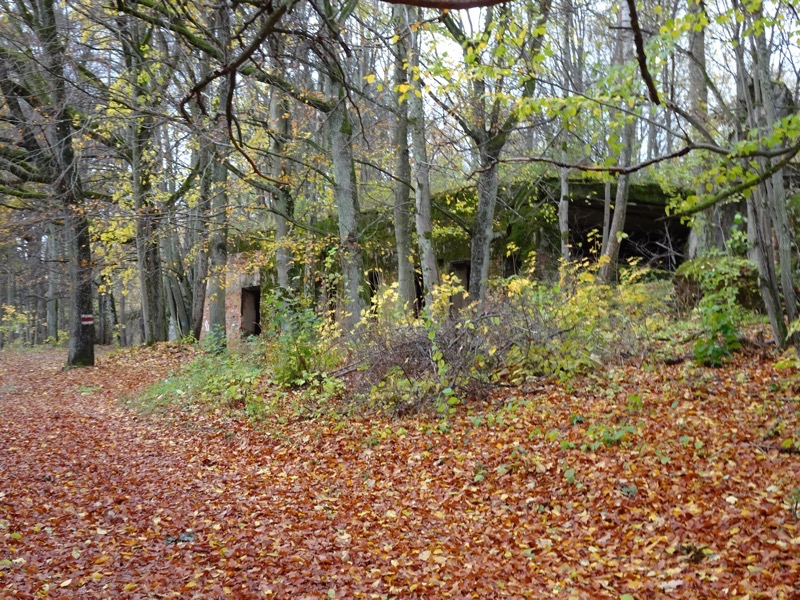

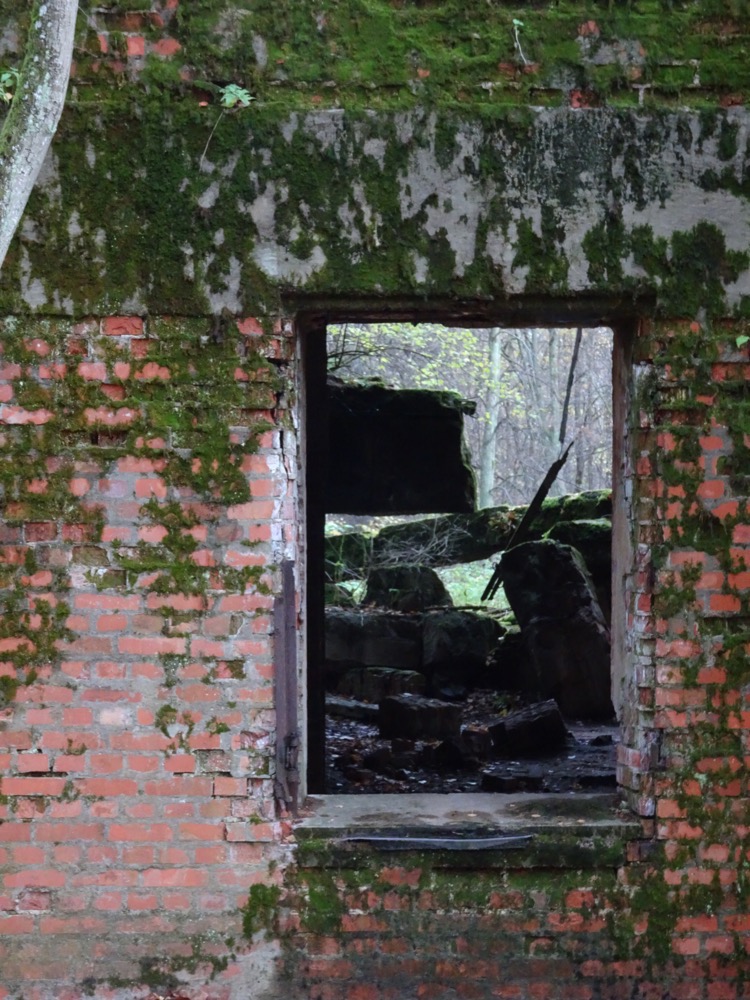
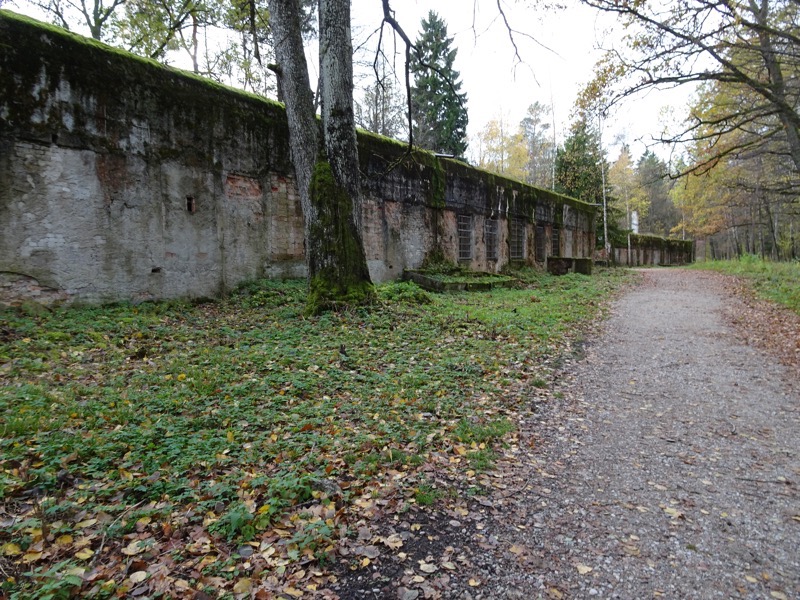
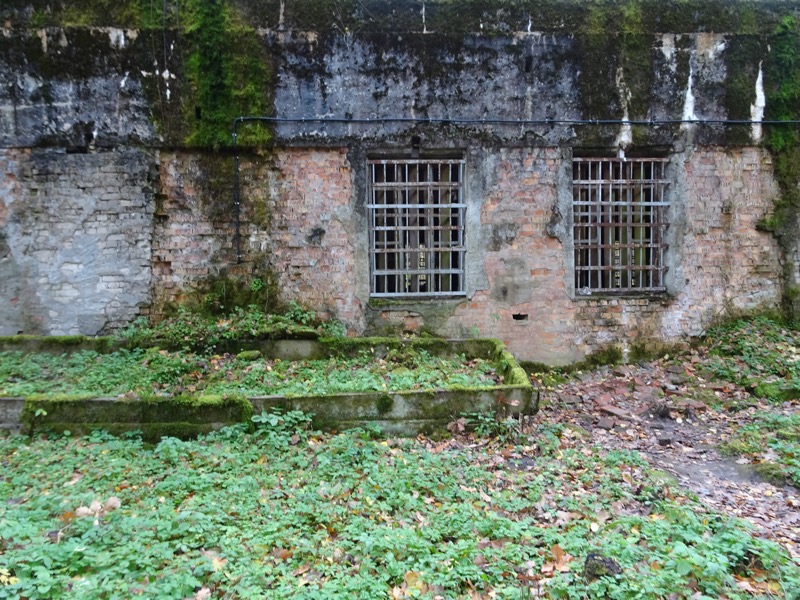 Ventilation shaft.
Ventilation shaft.
 Recreated checkpoint – there were only three entrances to the complex, and each one had a checkpoint at security zone.
Recreated checkpoint – there were only three entrances to the complex, and each one had a checkpoint at security zone.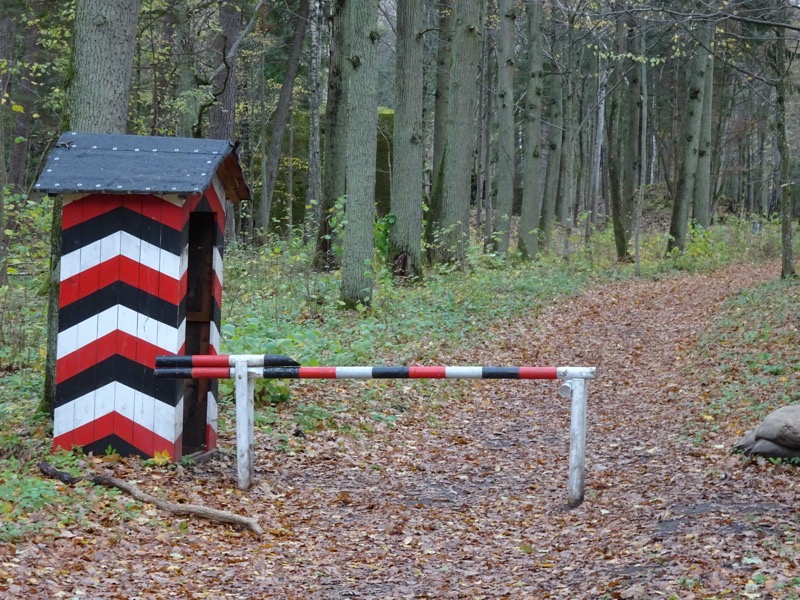 As we drove away from the Wolf’s Lair and my speed landscape photography attempted and failed to capture the forest, I couldn’t help but think that this area was once full of 54,000 landmines. Blurred and chaotic seems to work in this instance.
As we drove away from the Wolf’s Lair and my speed landscape photography attempted and failed to capture the forest, I couldn’t help but think that this area was once full of 54,000 landmines. Blurred and chaotic seems to work in this instance. The roads became noticeable worse as we were heading through tiny little villages making out way back to the major highways on our way to Gdansk. We were hurtling along doing an average of 90kmph on some of the shittiest single lane back roads ever – I was literally holding my boobs some of the way, because I didn’t know I was going to need a sports bra to go for a drive in the countryside! Mind you, the crap conditions of the road doesn’t slow the locals down one bit – they were overtaking us at alarming breakneck speeds.
The roads became noticeable worse as we were heading through tiny little villages making out way back to the major highways on our way to Gdansk. We were hurtling along doing an average of 90kmph on some of the shittiest single lane back roads ever – I was literally holding my boobs some of the way, because I didn’t know I was going to need a sports bra to go for a drive in the countryside! Mind you, the crap conditions of the road doesn’t slow the locals down one bit – they were overtaking us at alarming breakneck speeds.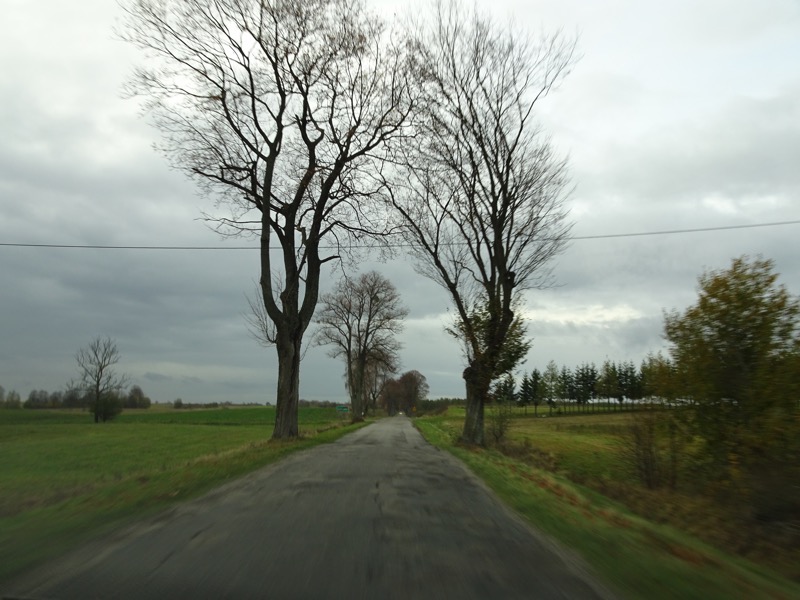 Honestly – we were doing just over 90kmph when this video was taken…
Honestly – we were doing just over 90kmph when this video was taken…
Eventually, we made our way back to the highway and then had to figure out how to get our car into the centre of Gdansk’s predominantly pedestrianised Old Town where our accommodation, the Aparthotel Neptun, is located. It was a little bit tricksy – you can approach the Old Town from many sides by car, but you can’t drive through the middle of it, so if your stupid GPS sends you to the wrong side and then suggests you drive the 100m to your hotel, right through the middle of people taking an evening stroll down the Long Market, you really need to back out and then fight your way around to try and enter from a different direction. We only got pulled over by Police, once, so we thought we did okay.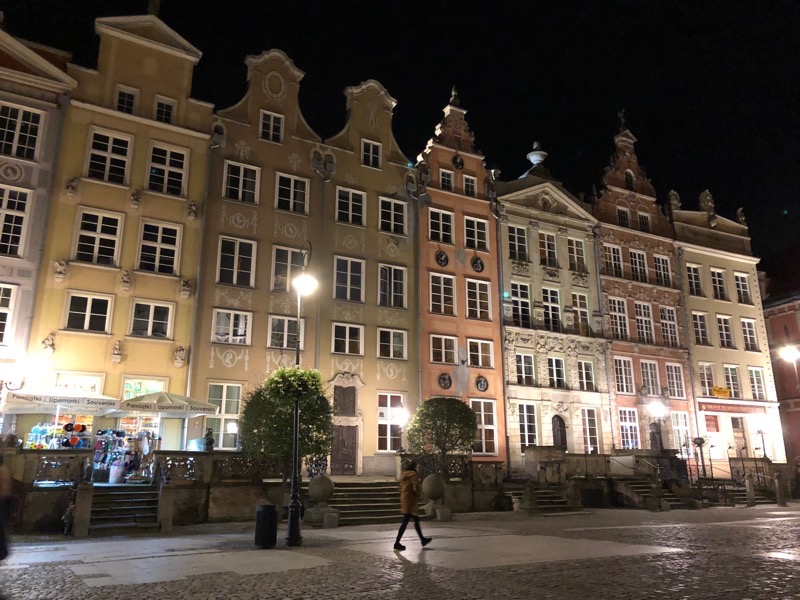 We checked in (nice hotel, actually) and then went straight back out again to find some dinner, as lunch was a dodgy service station hotdog many hours and several hundred kilometres ago. We wandered the Long Market and ended up at a restaurant called the ‘Latający Holender’ where we were met with some of the best food, but worst customer service in Poland… which is saying something really because between here, Krakow, and Warsaw, I don’t think we have met any hospitality or retail staff who were in any way welcoming, hospitable or even a little bit friendly. It’s kinda to be expected I guess – end of the tourist season, god knows I’d be over the bloody tourists too… but take heed waitpeople – winter is coming, and then we will see who is missing the tourists, their foreign currencies and their tipping habits!
We checked in (nice hotel, actually) and then went straight back out again to find some dinner, as lunch was a dodgy service station hotdog many hours and several hundred kilometres ago. We wandered the Long Market and ended up at a restaurant called the ‘Latający Holender’ where we were met with some of the best food, but worst customer service in Poland… which is saying something really because between here, Krakow, and Warsaw, I don’t think we have met any hospitality or retail staff who were in any way welcoming, hospitable or even a little bit friendly. It’s kinda to be expected I guess – end of the tourist season, god knows I’d be over the bloody tourists too… but take heed waitpeople – winter is coming, and then we will see who is missing the tourists, their foreign currencies and their tipping habits!
What was I saying? Dinner. Right. It was quite good actually and dining out now we are back in Poland, is cheap, cheap, cheap! I rarely used to photograph food for my blog, but then I found myself saying, ‘What was that thing we tried in Buenos Aires at that restaurant after we went to the place…?’ So now I am making more of an effort – so I can hunt down recipes back home for things we liked too.
After a bit of pfaffing around with tables, ‘Sit wherever you like’… we then take a seat and then it felt like the server was rolling his eyes at us and a ‘Why are they sitting there?’ type attitude ensued..?! We then waited for nearly ten minutes for menus … about halfway through what seemed an interminably long wait for a menu I said, ‘I think they are hoping we will give up and leave, but they have underestimated my current mood!’ We then waited again for ages to get drinks… part of this sense of waiting stemmed from watching the servers all gathering not far from our table and seemingly hanging out and chatting with each other instead of filling drink orders and seating customers, etc?! I dunno, the disdain was coming off them in waves – but hopefully not just in our direction. 😛
I ordered for an appetiser – Tiger prawns cooked in butter, onion, chili, fresh parsley, white wine and served with garlic bread… it was pretty fabulous. and yale ordered the Goulash soup – which was rather more watery and somewhat oilier than he had hoped. So that one was a bit hit and miss.
and yale ordered the Goulash soup – which was rather more watery and somewhat oilier than he had hoped. So that one was a bit hit and miss.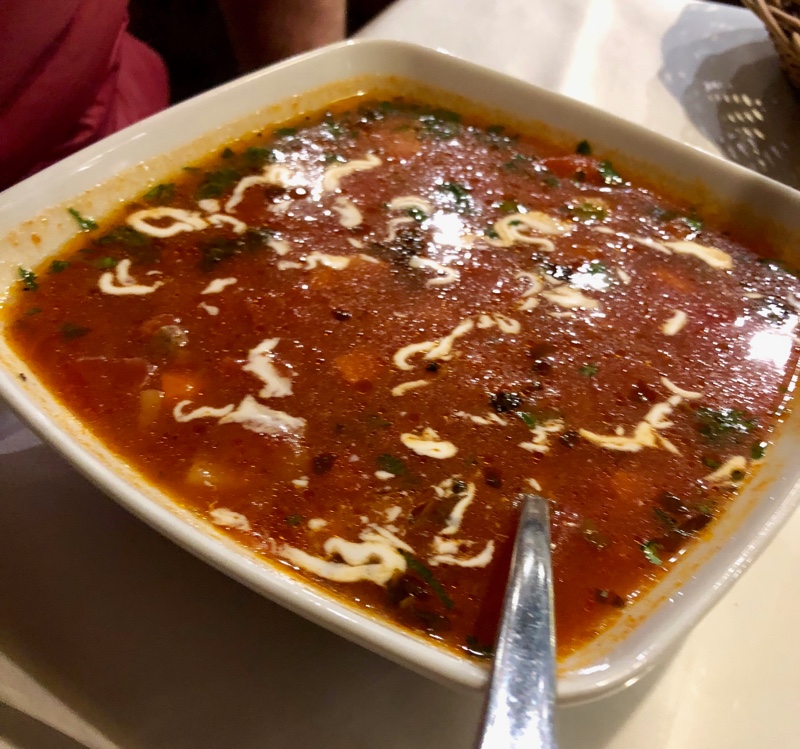 For a main, I ordered the Grilled salmon with roasted potatoes, green asparagus, butter sauce and caviar. Again, lovely though I usually prefer my salmon slightly more medium.
For a main, I ordered the Grilled salmon with roasted potatoes, green asparagus, butter sauce and caviar. Again, lovely though I usually prefer my salmon slightly more medium.
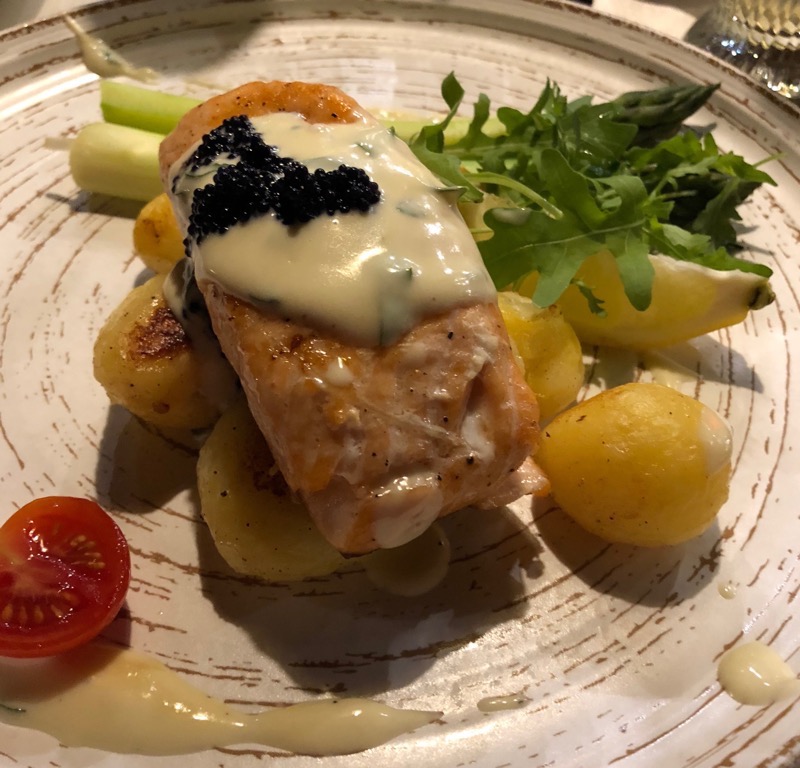 And yale seemed to commit some sort of unwritten ordering faux pas by having the audacity to order two dishes (he’s a big guy, he gets hungry), of Meat Dumplings, stuffed with beef and pork meat, smoked bacon, onion, arugula, and tomatoes. And a main dish called, Desk of Polish Sausage, comprising of a selection of Polish sausage served with bread, pickled cucumber, mustard and horseradish.
And yale seemed to commit some sort of unwritten ordering faux pas by having the audacity to order two dishes (he’s a big guy, he gets hungry), of Meat Dumplings, stuffed with beef and pork meat, smoked bacon, onion, arugula, and tomatoes. And a main dish called, Desk of Polish Sausage, comprising of a selection of Polish sausage served with bread, pickled cucumber, mustard and horseradish.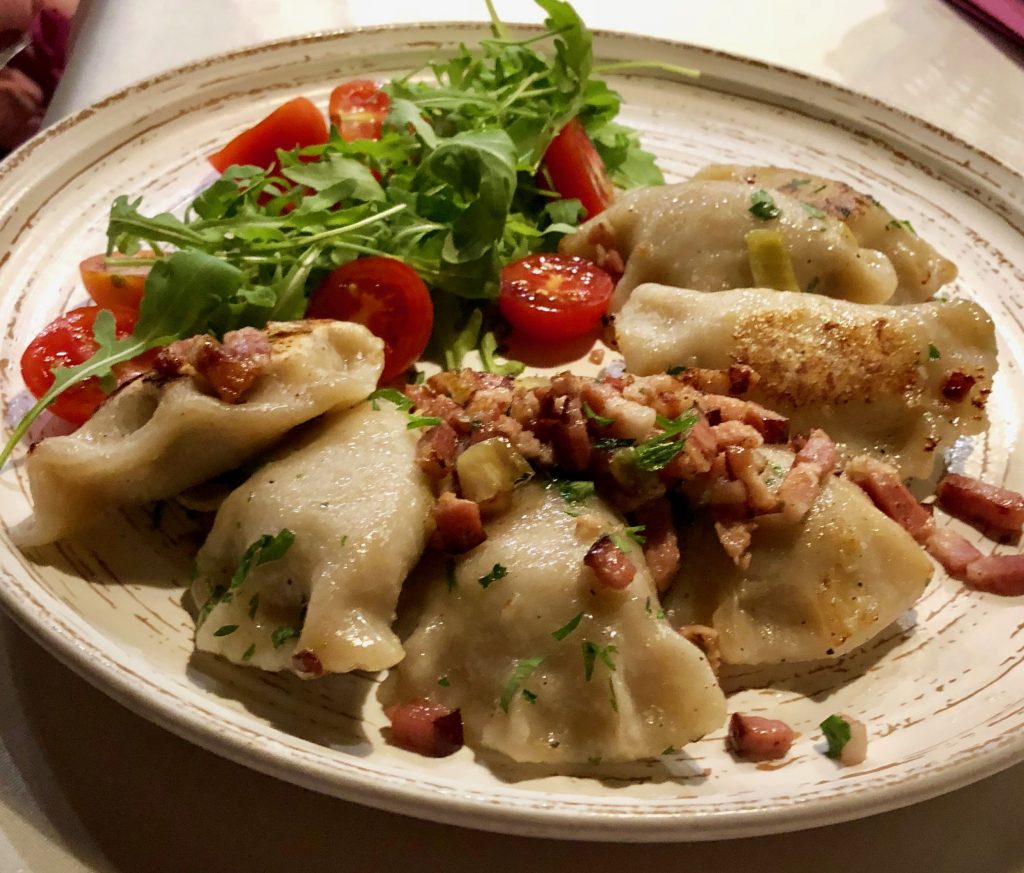 Well didn’t the little man have a ‘Two dinners? How could you? Wait, how will I serve them?’ moment over that. Like I said, weird service. Great food.
Well didn’t the little man have a ‘Two dinners? How could you? Wait, how will I serve them?’ moment over that. Like I said, weird service. Great food.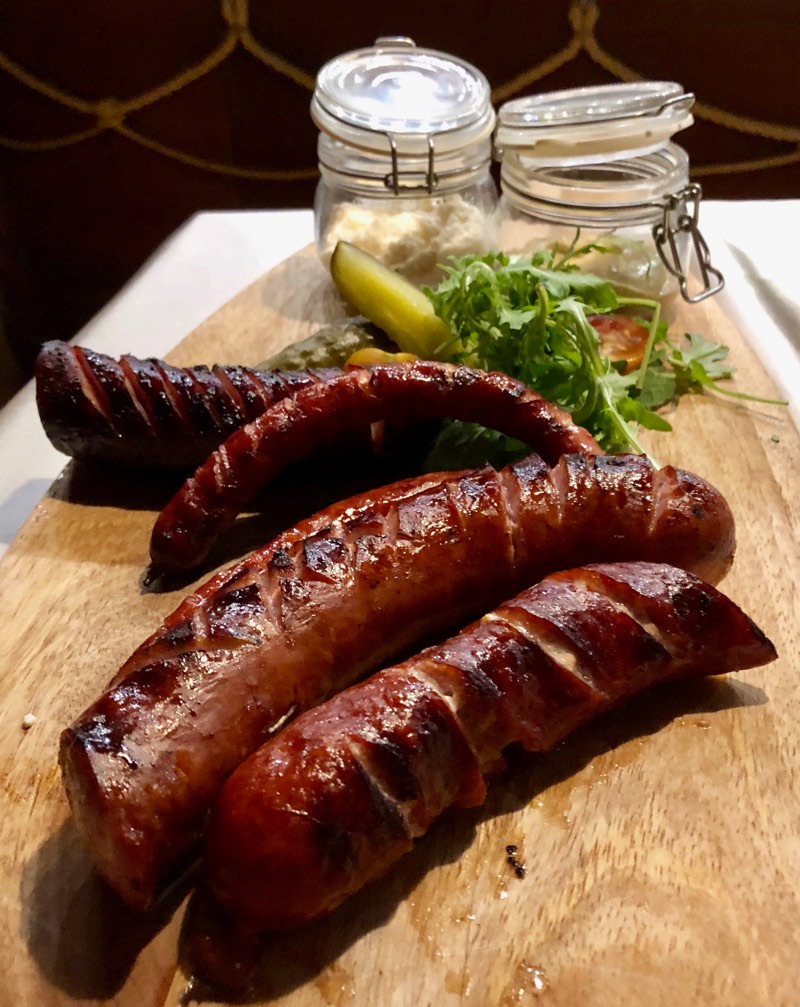 A few happy ciders later and we didn’t much care either way for the server’s attitude anyway. Dinner was nice, but I wouldn’t recommend it unless you like being treated like an inconvenience by the staff. 😛
A few happy ciders later and we didn’t much care either way for the server’s attitude anyway. Dinner was nice, but I wouldn’t recommend it unless you like being treated like an inconvenience by the staff. 😛
What a long, long day. Tomorrow – Gdansk!

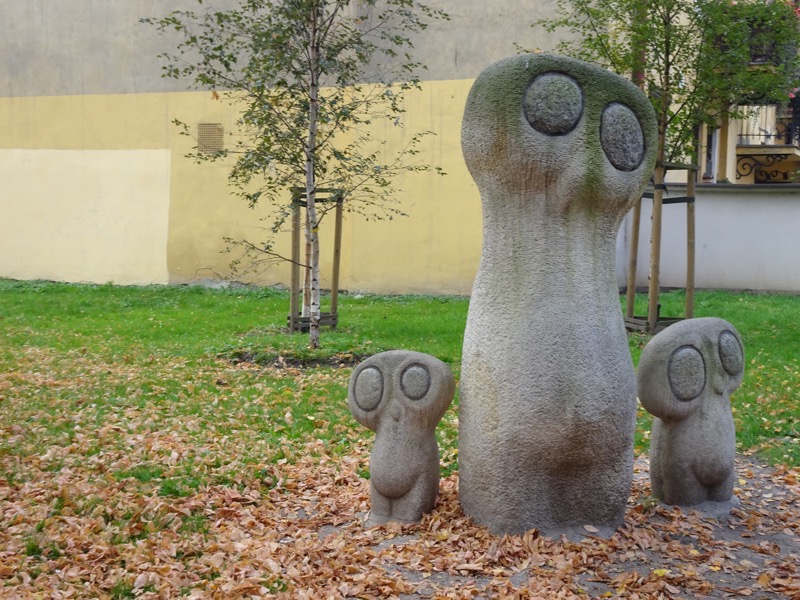 Walking up to Wawel Castle…
Walking up to Wawel Castle… We were planning on visiting the historic district of Wawel Castle just for the morning. It is located pretty much in the centre of Kraków and was built by King Kazimierz III, also known as Casimir III the Great, in the 13th and 14th centuries. The castle is actually a large complex made up of a number of Medieval/Renaissance/ Baroque buildings around a very large Italian style courtyard making it one of the largest in Poland. Most of the Wawel Royal Castle and the Wawel Hill area are considered the most culturally/historically significant areas in the entire country. Sometimes I feel like I am travelling the world ticking off UNESCO World Heritage Sites, as this is another one of them
We were planning on visiting the historic district of Wawel Castle just for the morning. It is located pretty much in the centre of Kraków and was built by King Kazimierz III, also known as Casimir III the Great, in the 13th and 14th centuries. The castle is actually a large complex made up of a number of Medieval/Renaissance/ Baroque buildings around a very large Italian style courtyard making it one of the largest in Poland. Most of the Wawel Royal Castle and the Wawel Hill area are considered the most culturally/historically significant areas in the entire country. Sometimes I feel like I am travelling the world ticking off UNESCO World Heritage Sites, as this is another one of them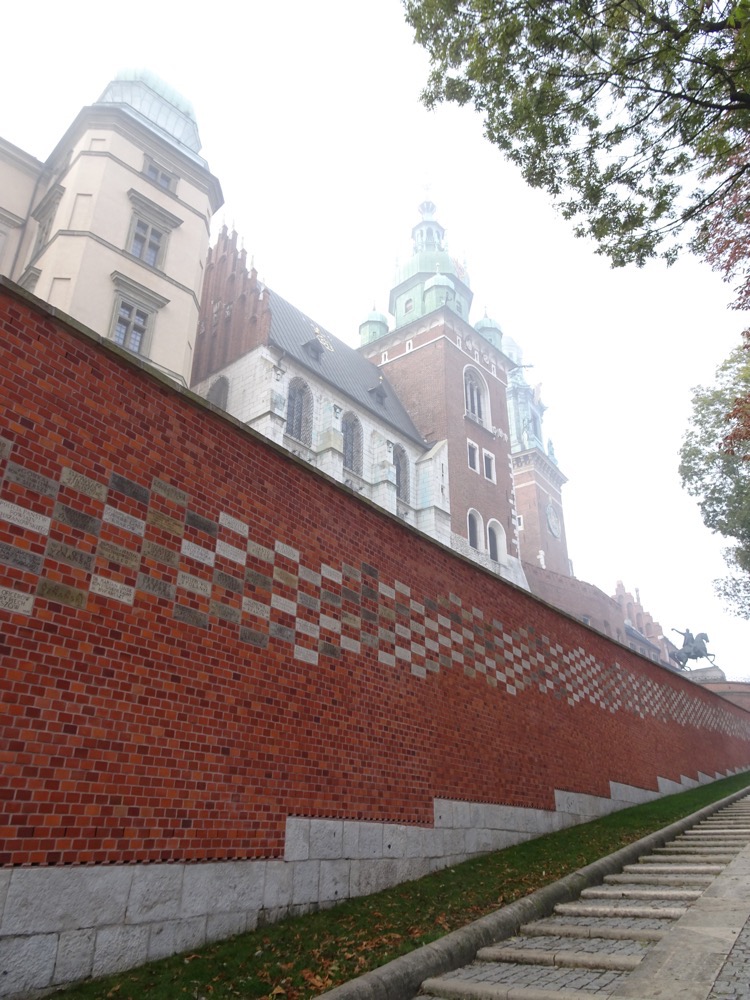
 Buying tickets proved quite the experience. There was a (thankfully, short) queue of about 20 people waiting to buy tickets to enter the caste. We couldn’t figure out why the line was moving so slowly. Turns out you don’t just buy a ticket to the Castle and wander on it following a structured flow through the museum, but rather you choose which sections of the castle you wish to see and then are told when you can go see them.
Buying tickets proved quite the experience. There was a (thankfully, short) queue of about 20 people waiting to buy tickets to enter the caste. We couldn’t figure out why the line was moving so slowly. Turns out you don’t just buy a ticket to the Castle and wander on it following a structured flow through the museum, but rather you choose which sections of the castle you wish to see and then are told when you can go see them.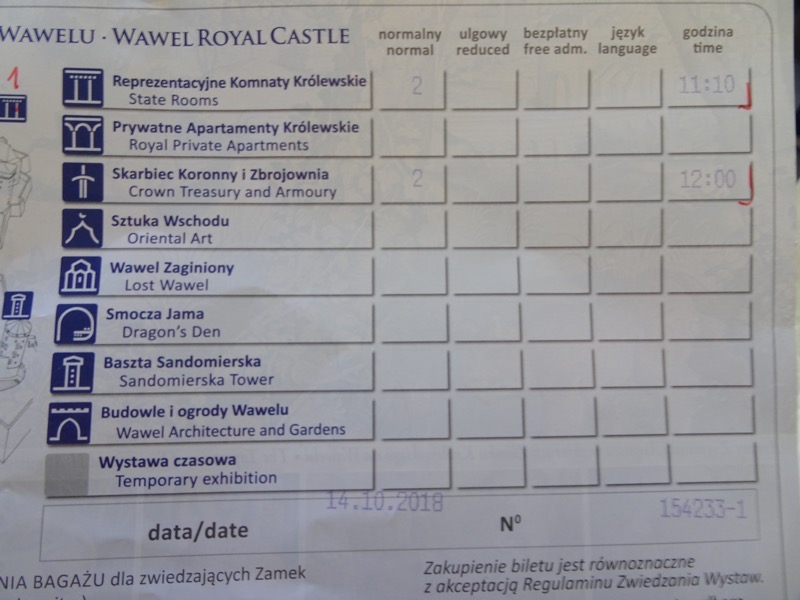 So we arrive around 10:00, go wait in line for a rather complex ticketing system and find ourselves unable to enter anywhere for another 20 minutes. :/ I understand the concept is probably about crowd control during the busiest of summer periods but none of this information is easily available online (it is once you know to look for it), and you can’t buy tickets in advance, and of course, there is only one person serving all the somewhat confused visitors. We were told if we wanted to visit the Royal Apartments we wouldn’t get an entry time until 14:00, and once inside we saw plenty of people loitering around the courtyard waiting for their appointed times to go in.
So we arrive around 10:00, go wait in line for a rather complex ticketing system and find ourselves unable to enter anywhere for another 20 minutes. :/ I understand the concept is probably about crowd control during the busiest of summer periods but none of this information is easily available online (it is once you know to look for it), and you can’t buy tickets in advance, and of course, there is only one person serving all the somewhat confused visitors. We were told if we wanted to visit the Royal Apartments we wouldn’t get an entry time until 14:00, and once inside we saw plenty of people loitering around the courtyard waiting for their appointed times to go in.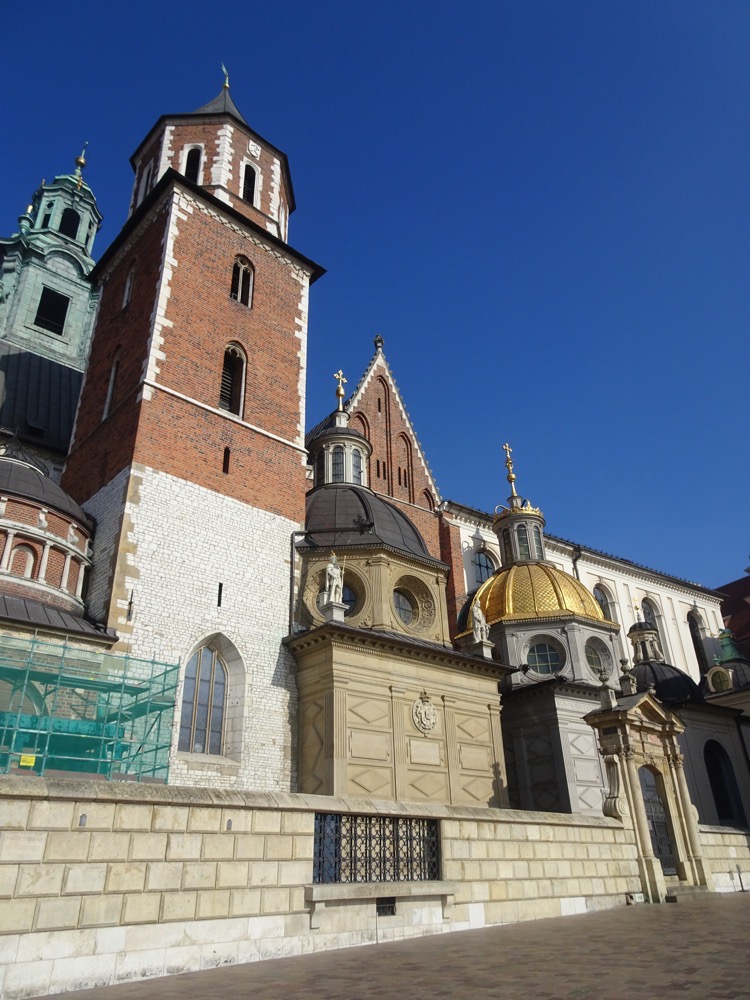 Forecourt:
Forecourt: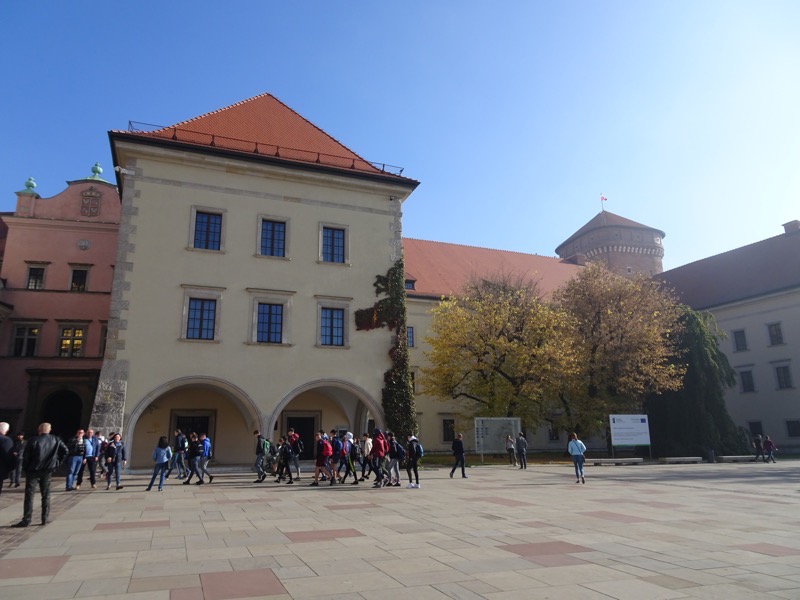
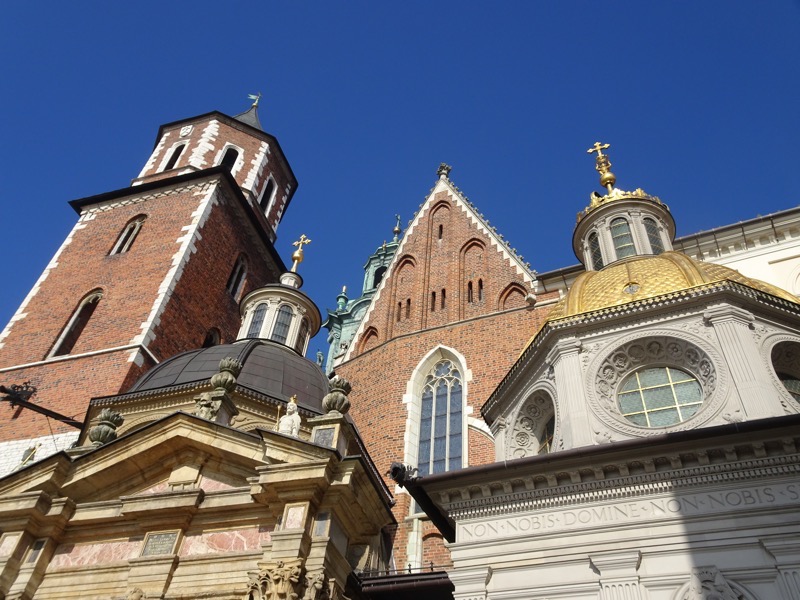
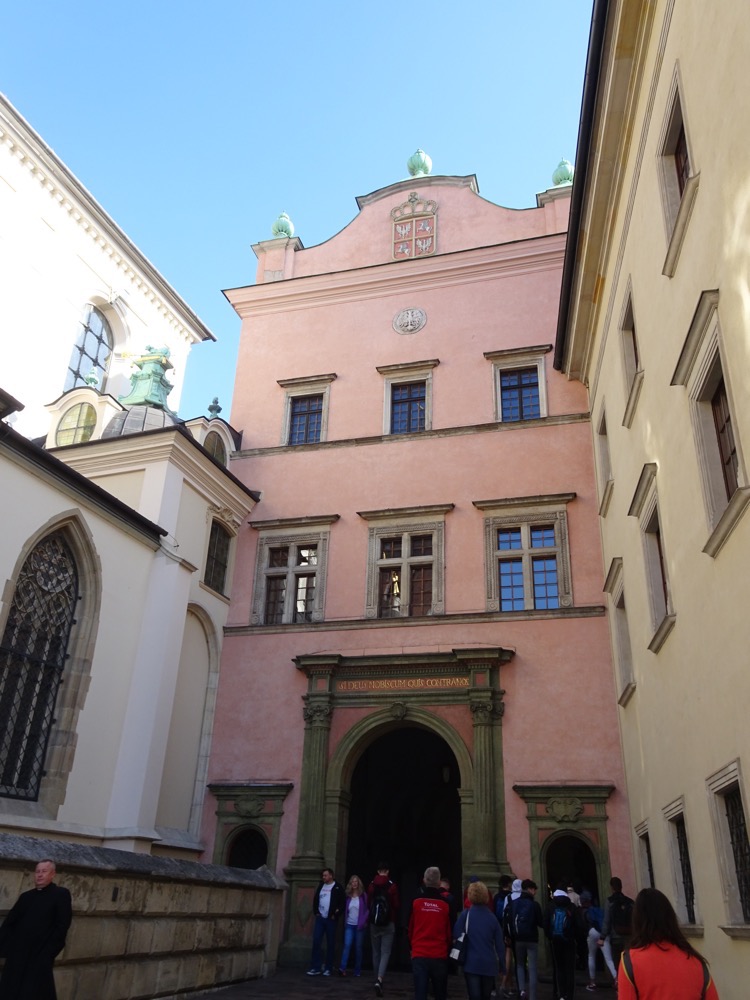 Main courtyard.
Main courtyard. And that, my friends, is pretty much the limit of the photos I was able to take at Wawel Castle. The castle contains an important collection of Renaissance art, some Ghirlandaio, Cranach, at least two Rubens, a Tintoretto, Tiepolo, and a few Dossi among others; lots of famous pieces, but NO PHOTOGRAPHY was allowed:
And that, my friends, is pretty much the limit of the photos I was able to take at Wawel Castle. The castle contains an important collection of Renaissance art, some Ghirlandaio, Cranach, at least two Rubens, a Tintoretto, Tiepolo, and a few Dossi among others; lots of famous pieces, but NO PHOTOGRAPHY was allowed: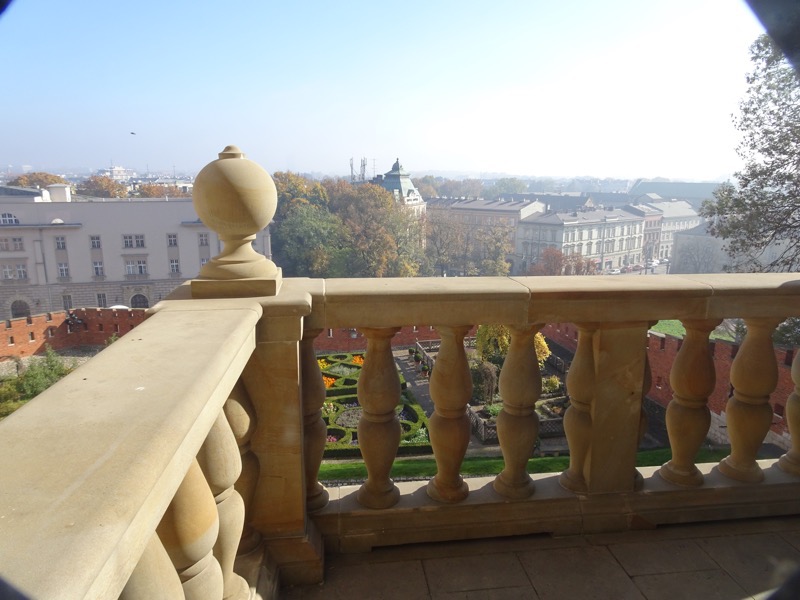
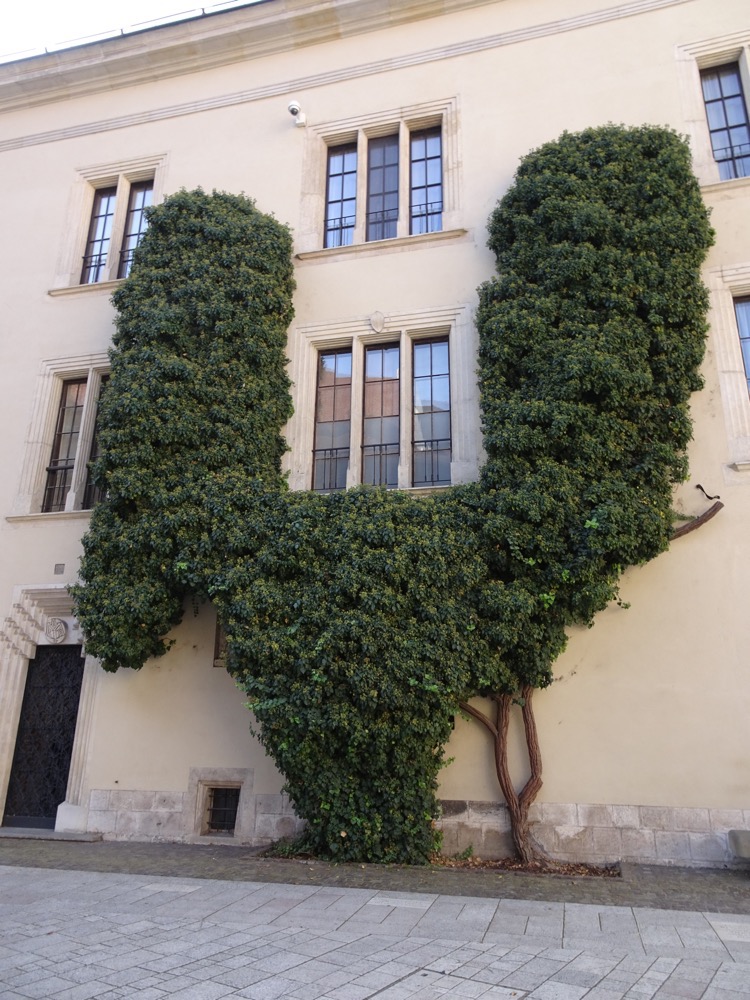 On more than one occasion we saw small groups entering rooms that we weren’t allowed to enter because they were on an organised tour. Museums should not be like this. It is a cluster. My advice for anyone planning on attending Wawel Castle is to set aside the entire day for it so you can visit on their scheduled time slots. I would probably also use a private tour operator to access the ‘non-public’ spaces… and I’d probably anticipate a disappointing visit anyway due to photography not being allowed, and the lack of decent books to make up for the whole photography is not allowed thing. :/
On more than one occasion we saw small groups entering rooms that we weren’t allowed to enter because they were on an organised tour. Museums should not be like this. It is a cluster. My advice for anyone planning on attending Wawel Castle is to set aside the entire day for it so you can visit on their scheduled time slots. I would probably also use a private tour operator to access the ‘non-public’ spaces… and I’d probably anticipate a disappointing visit anyway due to photography not being allowed, and the lack of decent books to make up for the whole photography is not allowed thing. :/ 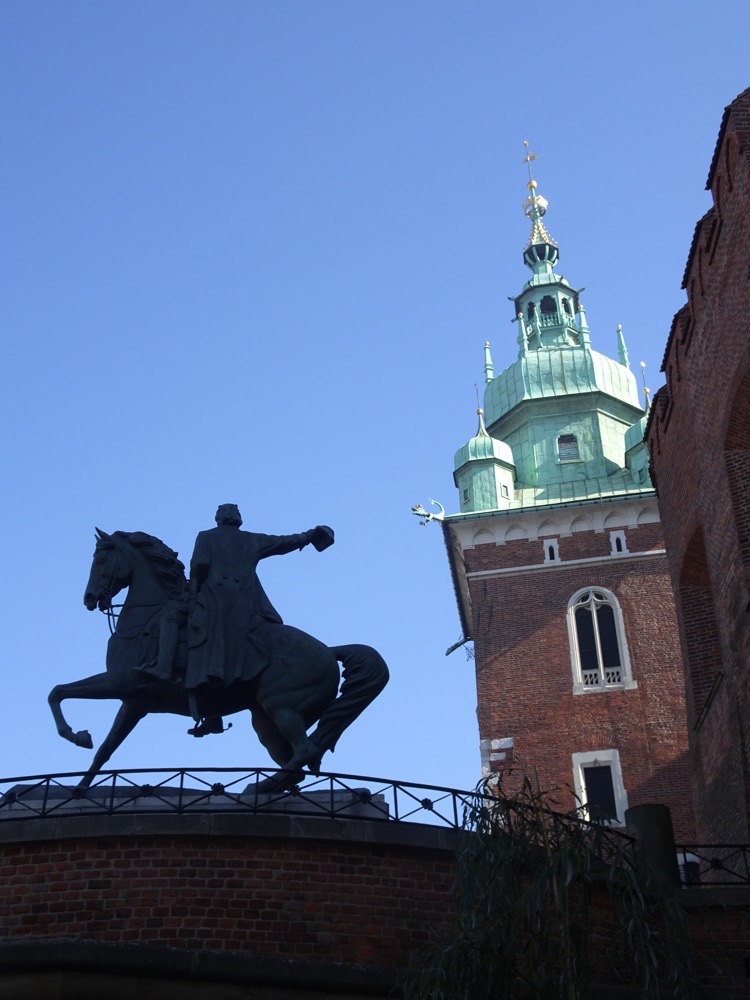
 Throughout the world, Auschwitz has become a symbol of terror, genocide and the Holocaust. The German forces occupying Poland during the Second World War established a concentration camp on the outskirts of the town of Oświęcim in 1940. The Germans called the town, ‘Auschwitz’ and that is the name by which the camp was known. Over the next years it was expanded into three main camps: Auschwitz I, Auschwitz II- Birkenau and Auschwitz III- Planowitz with more than 40 subcamps in the area. The first people to be brought to Auschwitz as prisoners and murdered here were Poles. They were soon followed by Soviet prisoners of war, Gypsies, and deportees from other nationalities. Beginning in 1942, however, Auschwitz became the setting of the most massive murder campaign in history, when the Nazis put into operation their plan to destroy the entire Jewish population of Europe. The great majority of Jews who were deported to Auschwitz – men, women and children – were sent immediately upon arrival to deal in the gas chambers of Birkenau.
Throughout the world, Auschwitz has become a symbol of terror, genocide and the Holocaust. The German forces occupying Poland during the Second World War established a concentration camp on the outskirts of the town of Oświęcim in 1940. The Germans called the town, ‘Auschwitz’ and that is the name by which the camp was known. Over the next years it was expanded into three main camps: Auschwitz I, Auschwitz II- Birkenau and Auschwitz III- Planowitz with more than 40 subcamps in the area. The first people to be brought to Auschwitz as prisoners and murdered here were Poles. They were soon followed by Soviet prisoners of war, Gypsies, and deportees from other nationalities. Beginning in 1942, however, Auschwitz became the setting of the most massive murder campaign in history, when the Nazis put into operation their plan to destroy the entire Jewish population of Europe. The great majority of Jews who were deported to Auschwitz – men, women and children – were sent immediately upon arrival to deal in the gas chambers of Birkenau.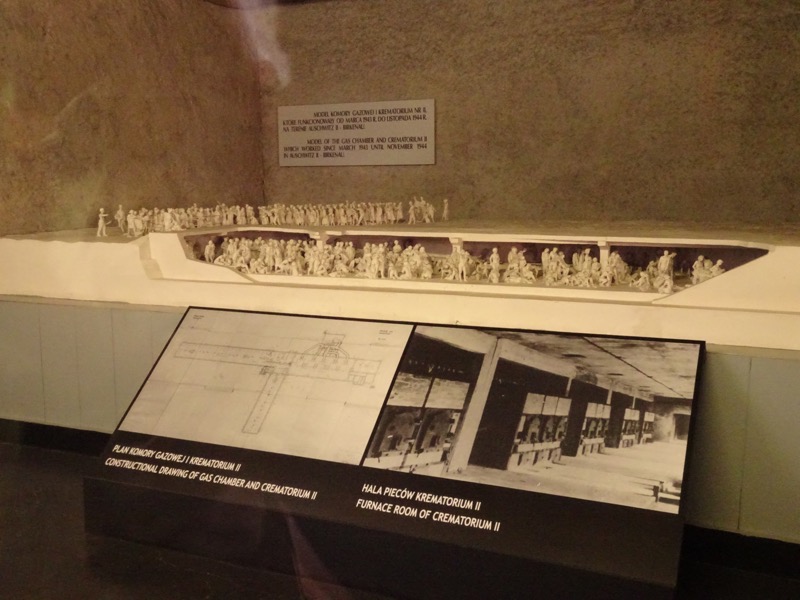
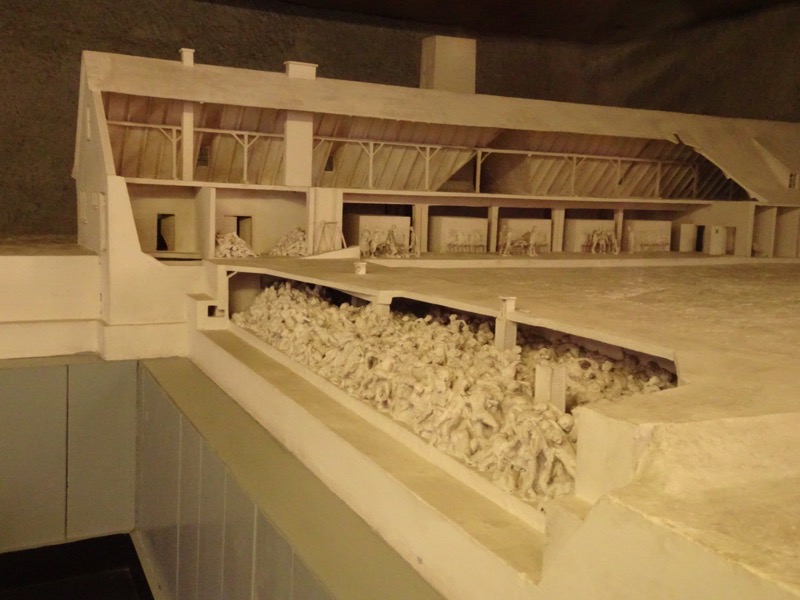
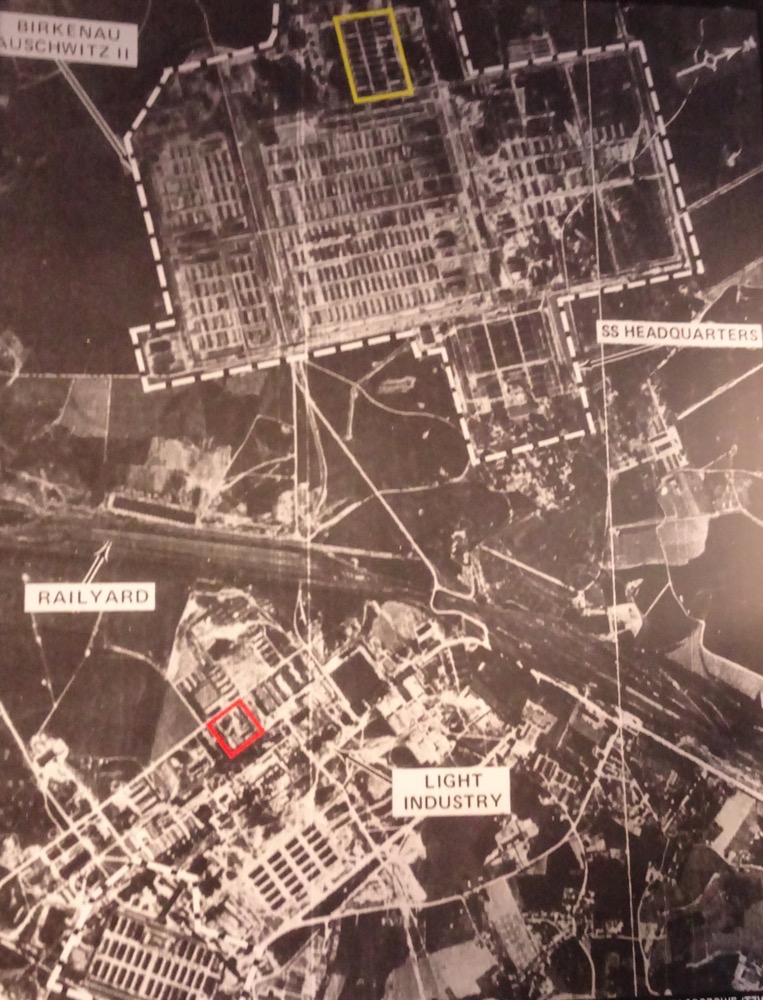 After the selection process on the railway platform, those who were going to be murdered in the gas chambers were assured that they were going to take a shower. They were divided from their belongings and made to strip naked. Fake showerheads were fixed to the ceiling of the gas chambers.
After the selection process on the railway platform, those who were going to be murdered in the gas chambers were assured that they were going to take a shower. They were divided from their belongings and made to strip naked. Fake showerheads were fixed to the ceiling of the gas chambers.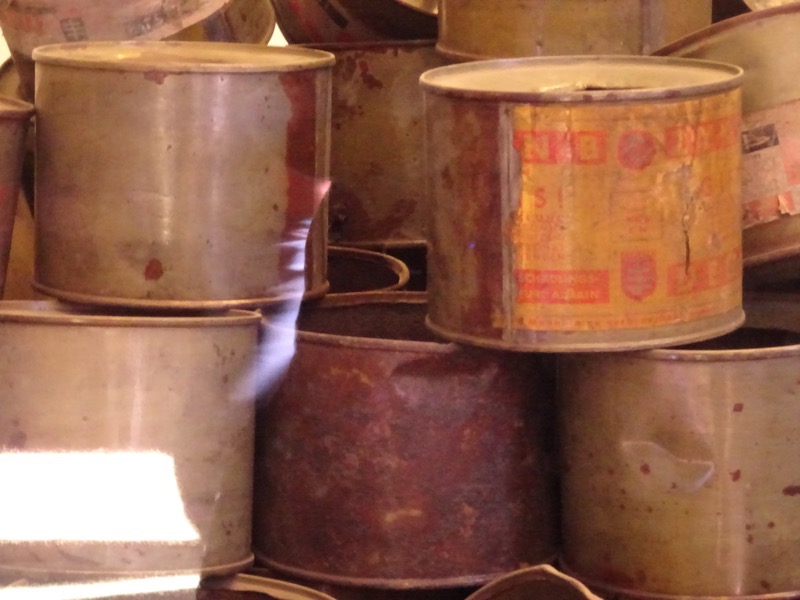
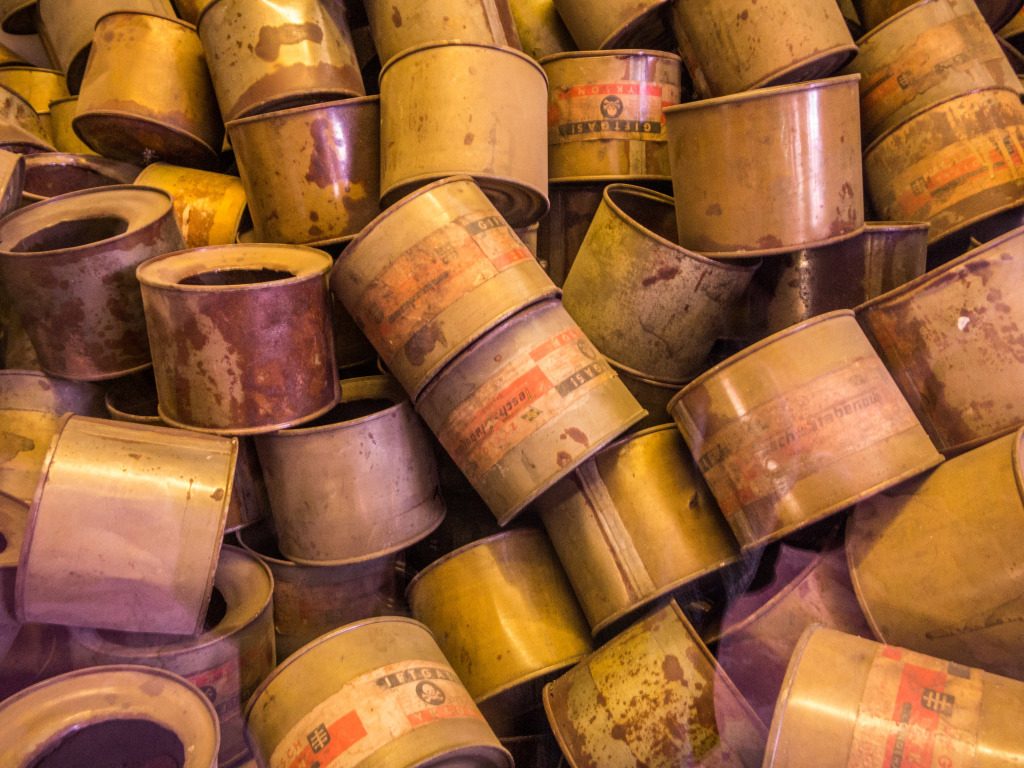 Piles of spectacles removed from deportees who were murdered in the gas chambers.
Piles of spectacles removed from deportees who were murdered in the gas chambers.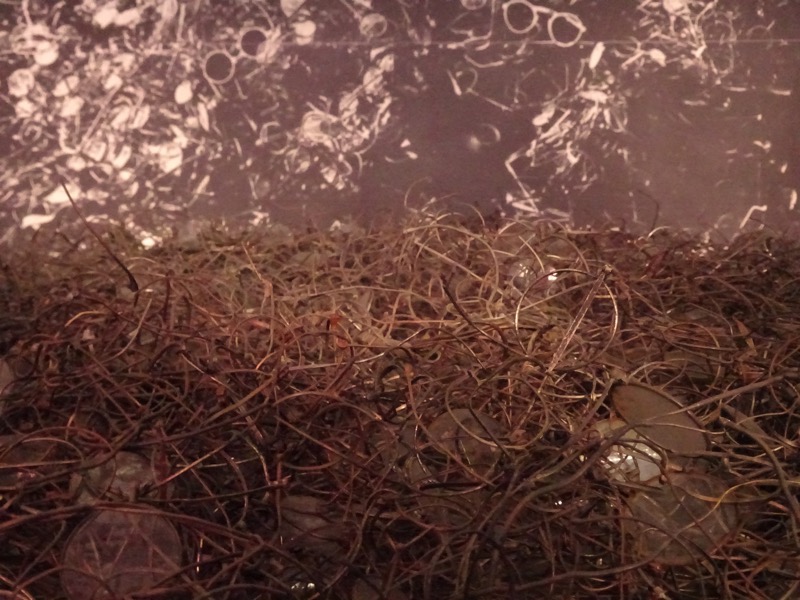

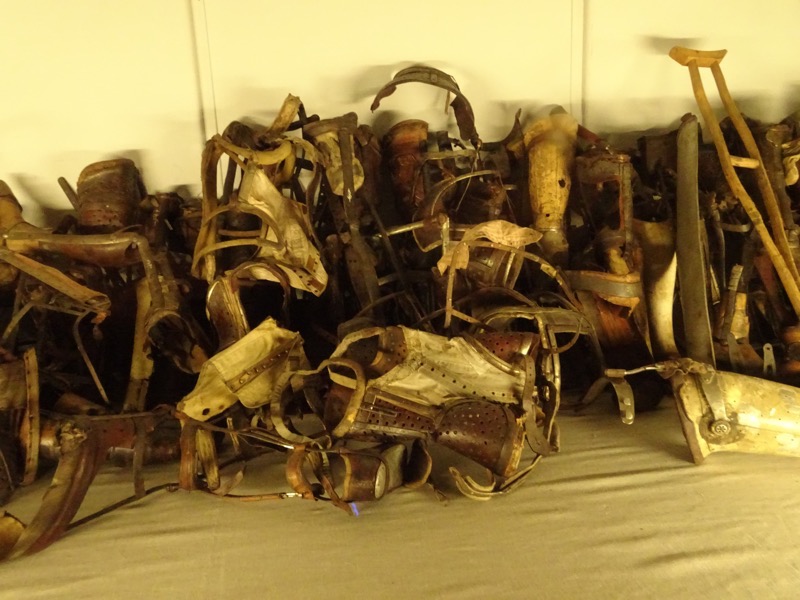 People arriving at the camps had many personal belongings with them that were taken and sorted, including household goods and kitchen items:
People arriving at the camps had many personal belongings with them that were taken and sorted, including household goods and kitchen items: Piles of suitcases each one once carrying the entire worldly goods of a deportee:
Piles of suitcases each one once carrying the entire worldly goods of a deportee: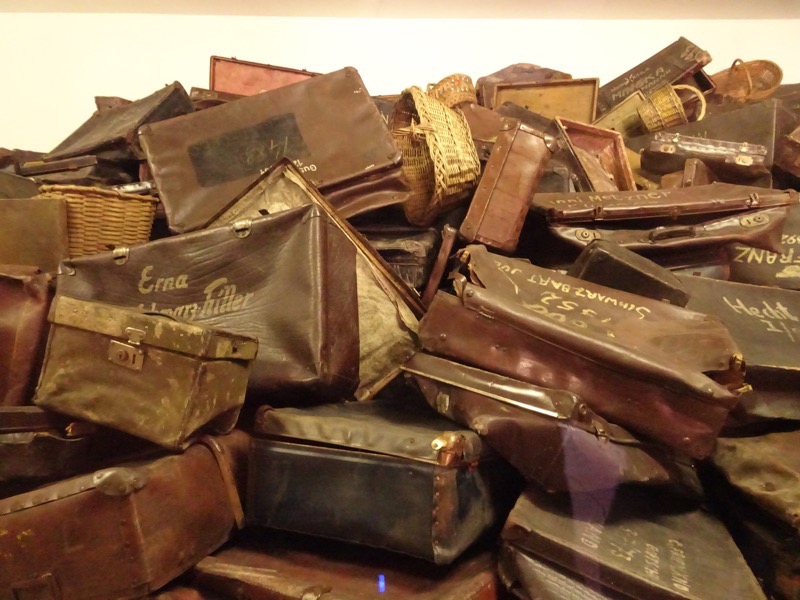
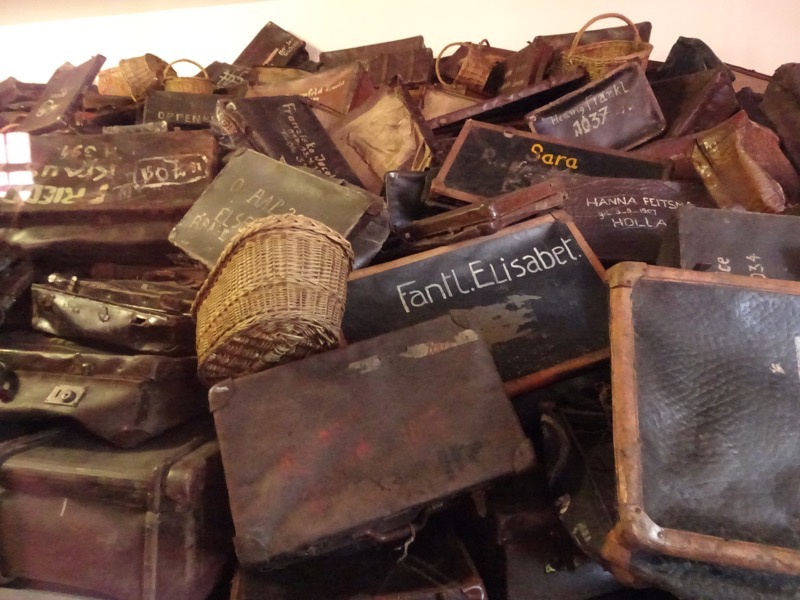 Mountains of shoes taken from the dead or about to be killed:
Mountains of shoes taken from the dead or about to be killed: The shoes of children who were murdered at the camps:
The shoes of children who were murdered at the camps: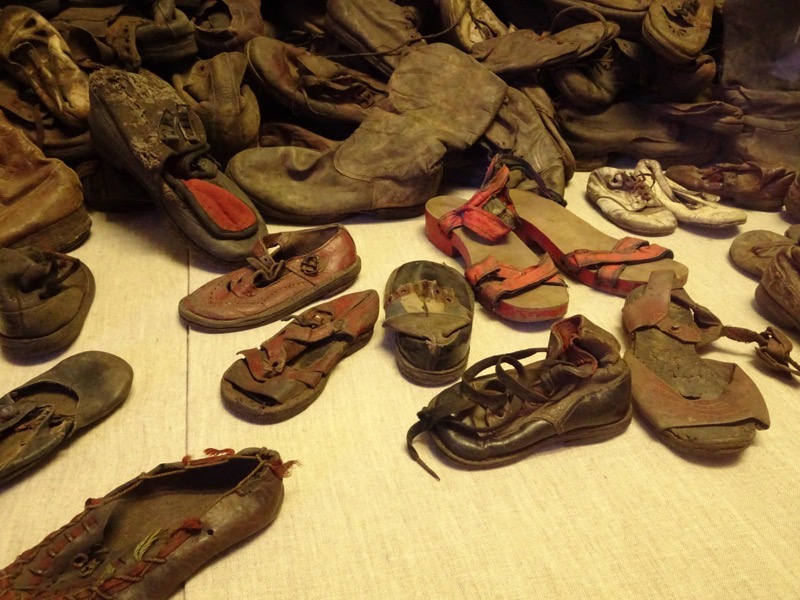 Personal brushes and shaving brushes:
Personal brushes and shaving brushes: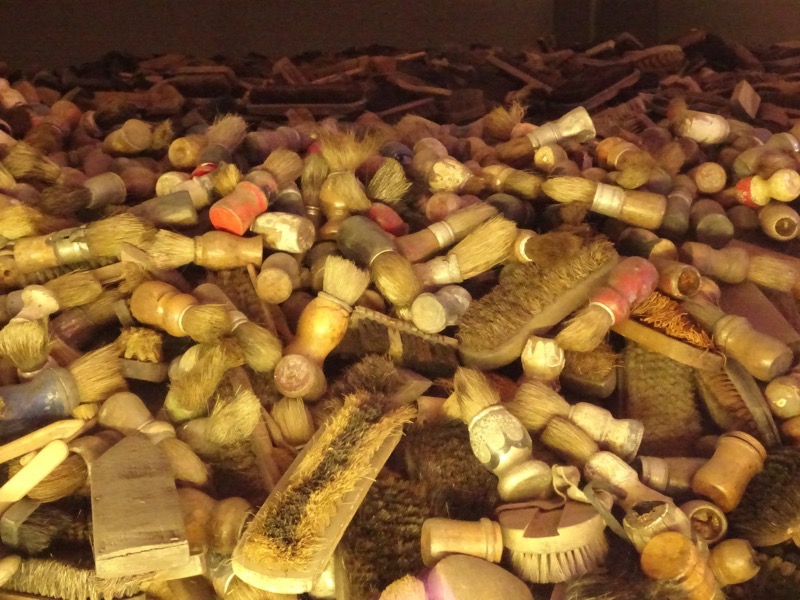
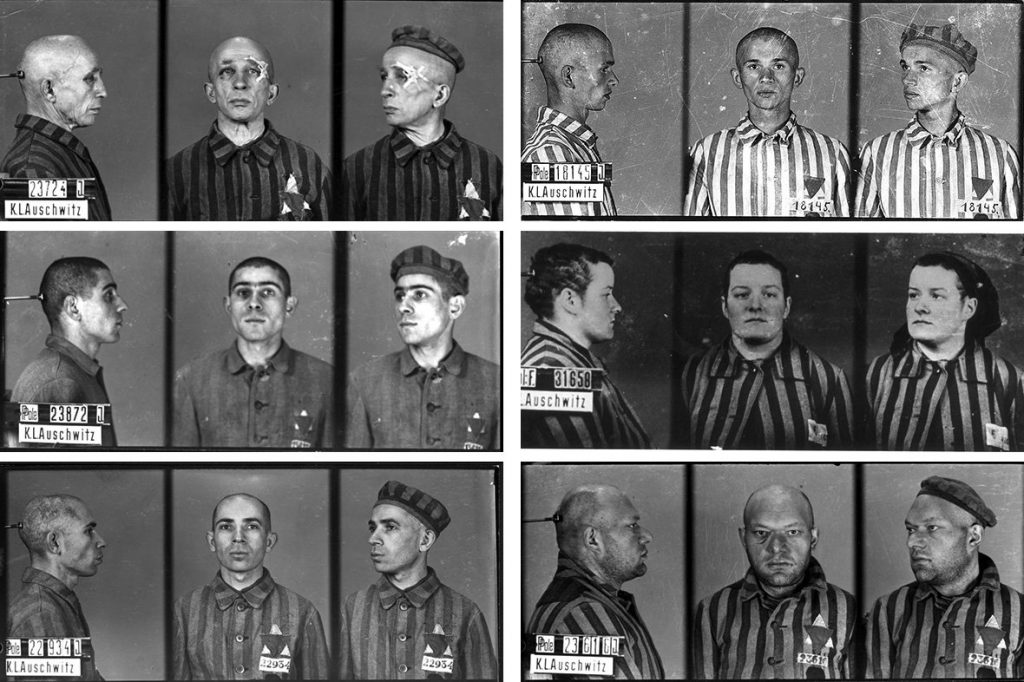
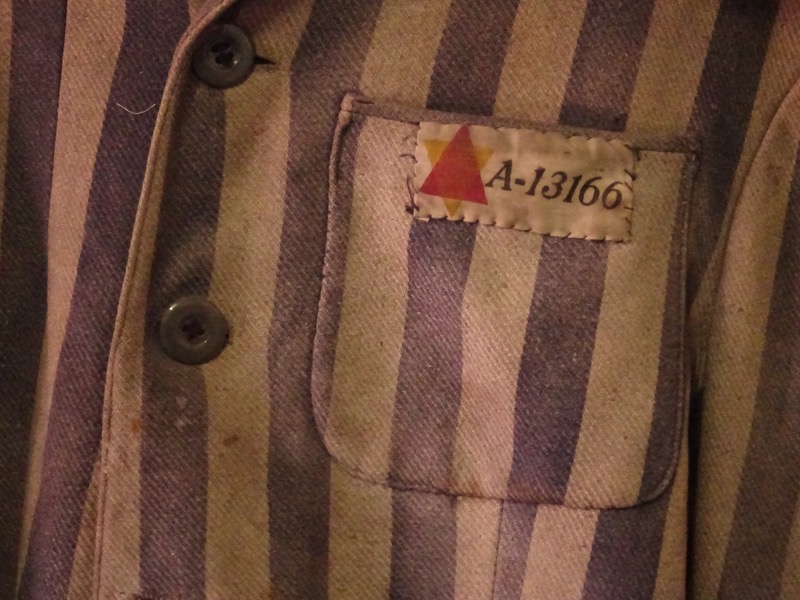 Each of these people had a family, an occupation, a home. Here, they were dehumanized and turned into a number only.
Each of these people had a family, an occupation, a home. Here, they were dehumanized and turned into a number only. 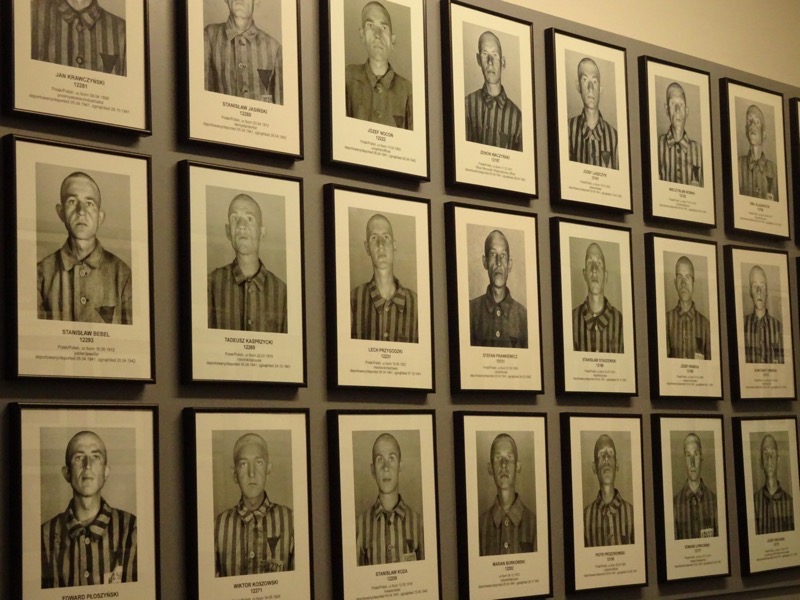
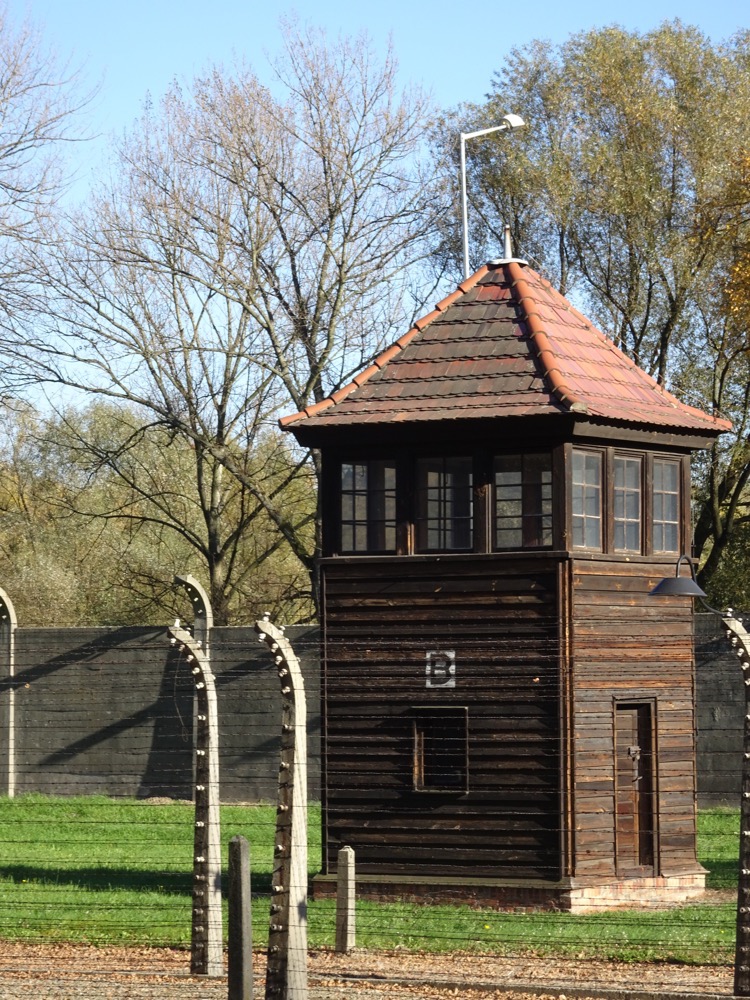
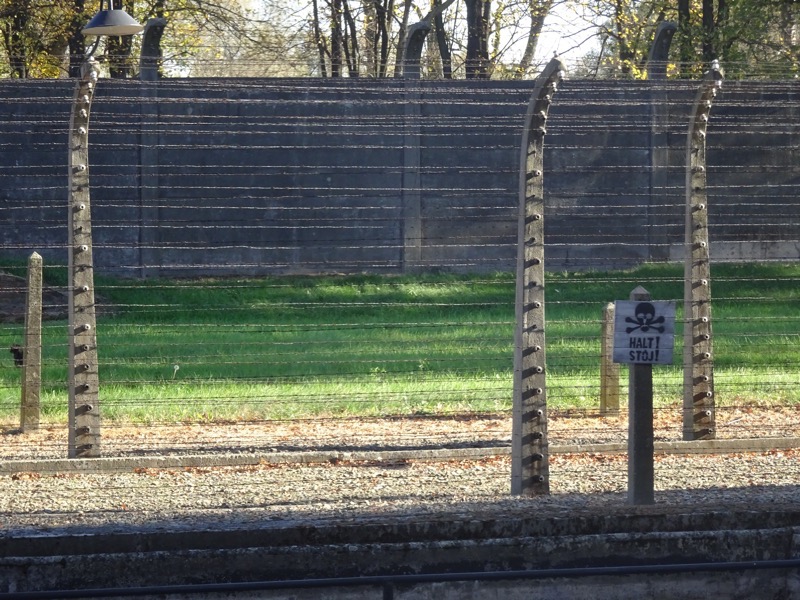
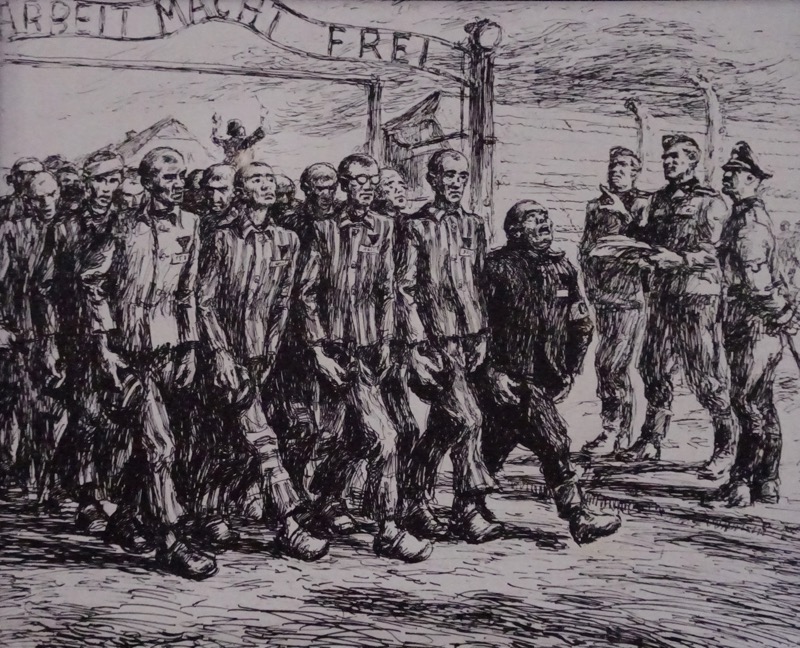

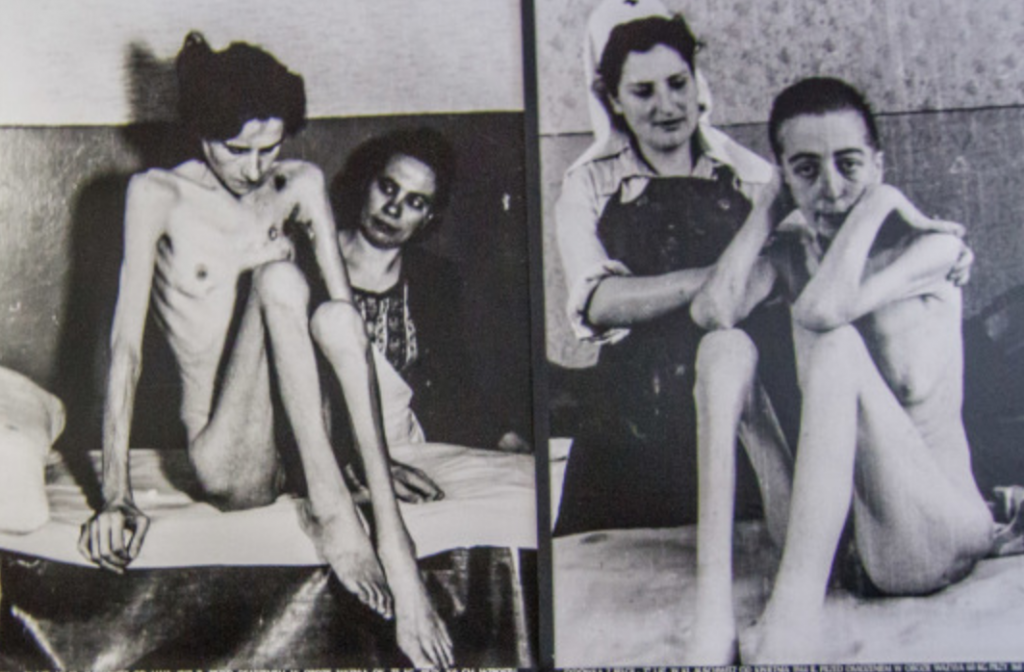
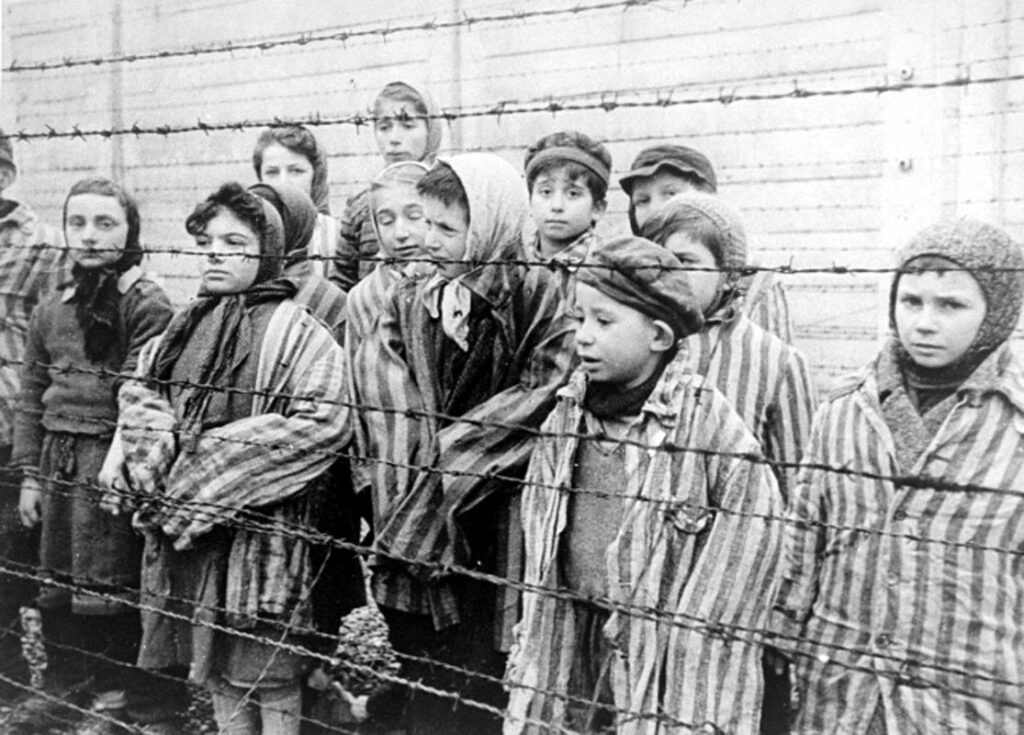
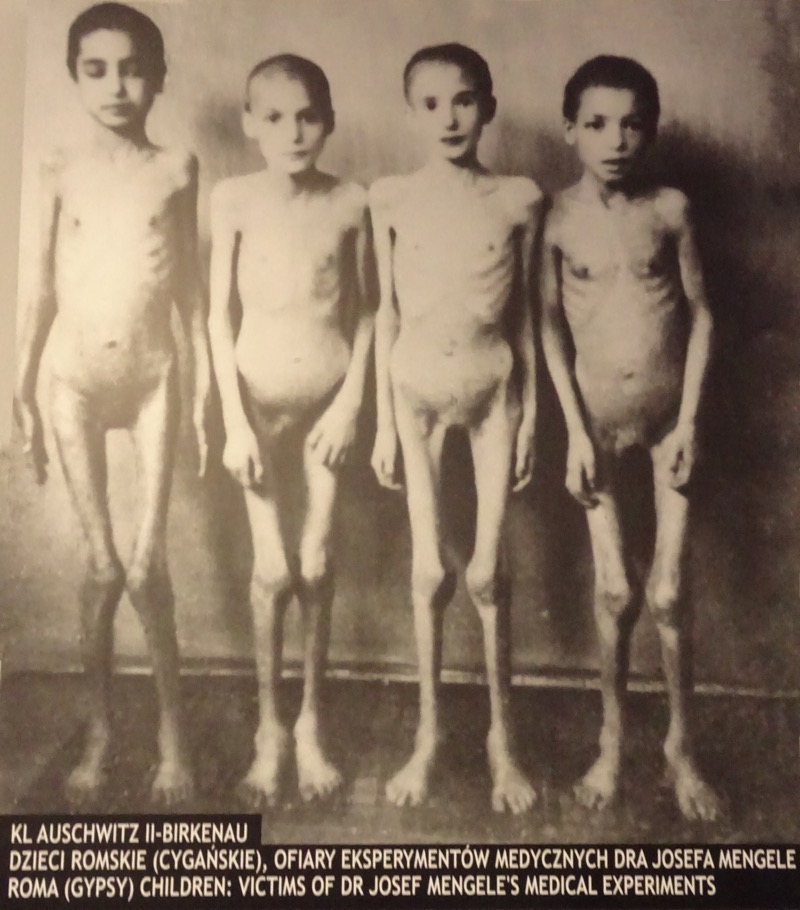
 Map of the Block 11 Punishment Unit. This was effectively the prison within the prison. If prisoner committed offences while in the camp, they could expect any sort of retribution – immediate execution, solitary confinement for a period of time, confinement to starvation with the intention of murdering the prisoner, or face a firing squad at an unknown future time. Note Section 22 in the left hand building – it has what is know as ‘standing cells’ where prisoners entered through a two foot door in a wall and were put in a cell approximatedly two foot square and six foot tall. Prisoners would be locked in this standing cell in complete darkness for indeterminate periods of time.
Map of the Block 11 Punishment Unit. This was effectively the prison within the prison. If prisoner committed offences while in the camp, they could expect any sort of retribution – immediate execution, solitary confinement for a period of time, confinement to starvation with the intention of murdering the prisoner, or face a firing squad at an unknown future time. Note Section 22 in the left hand building – it has what is know as ‘standing cells’ where prisoners entered through a two foot door in a wall and were put in a cell approximatedly two foot square and six foot tall. Prisoners would be locked in this standing cell in complete darkness for indeterminate periods of time.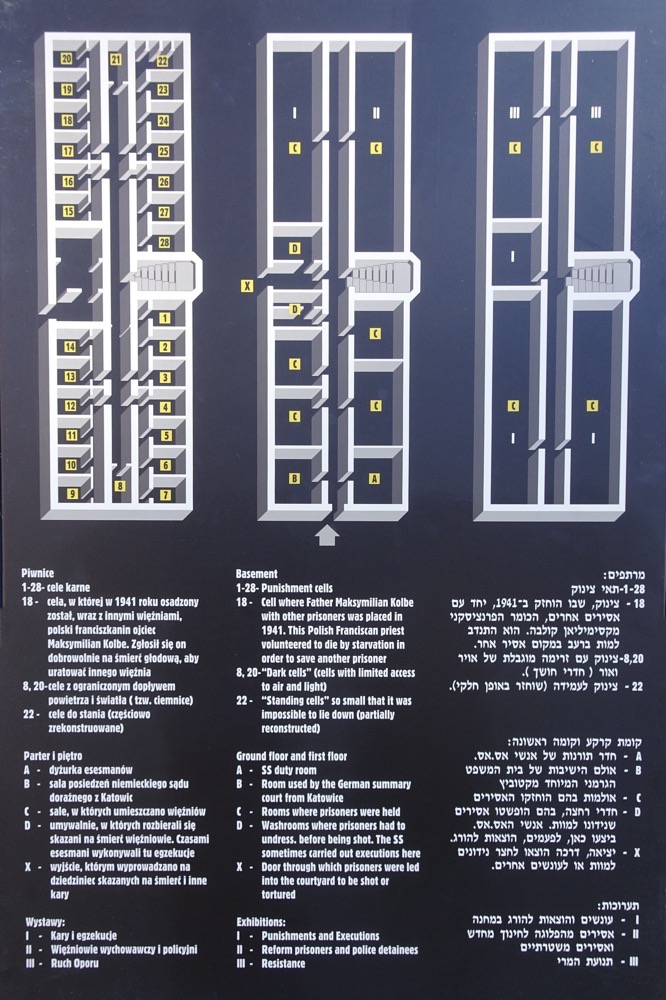 Prisoners were led to this wall for execution by firing squad.
Prisoners were led to this wall for execution by firing squad.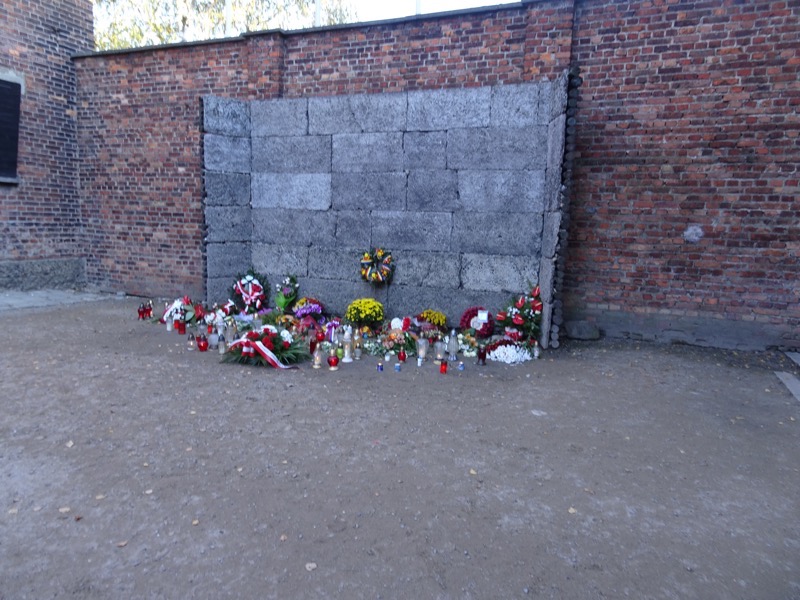
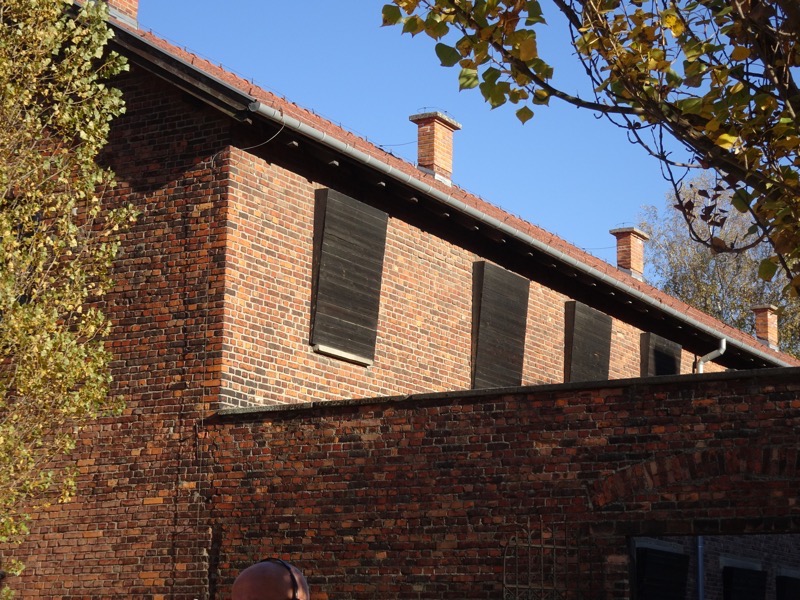 The barracks beside the execution courtyard were blocked from seeing what was happening during the executions. Prisoners avoided having anything to do with Block 11 and tried hard to stay away from it when going about their duties.
The barracks beside the execution courtyard were blocked from seeing what was happening during the executions. Prisoners avoided having anything to do with Block 11 and tried hard to stay away from it when going about their duties.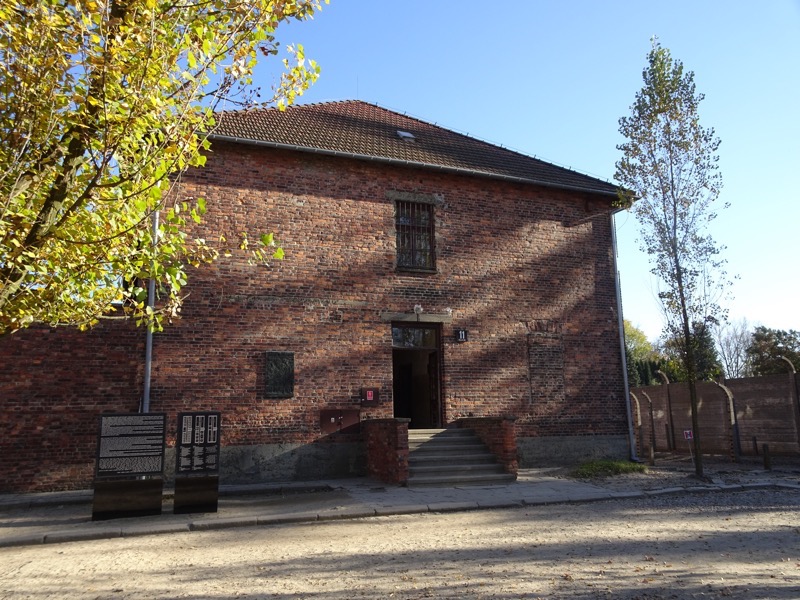 A guardhouse used by SS officials for shelter during the harsh roll-calls that prisoners were forced to endure:
A guardhouse used by SS officials for shelter during the harsh roll-calls that prisoners were forced to endure:
 In the centre of Auschwitz KL, the SS officer in charge would hold a roll call in the courtyard above. The roll call contained reports on the number of prisoners present. If there seemed to be anyone missing, prisoners had to continue to stand at attention until the SS were satisfied – regardless of the weather, sometimes for up to twelve hours or more. To intimidate the prisoners, the SS would also conduct public hangings in full view of the roll-call area. The largest such execution was carried out on 19 July 1943 when twelve Poles suspected of helping three other prisoners escape, and of maintaining contacts with the outside world, were hanged together on a purpose-built gallows.
In the centre of Auschwitz KL, the SS officer in charge would hold a roll call in the courtyard above. The roll call contained reports on the number of prisoners present. If there seemed to be anyone missing, prisoners had to continue to stand at attention until the SS were satisfied – regardless of the weather, sometimes for up to twelve hours or more. To intimidate the prisoners, the SS would also conduct public hangings in full view of the roll-call area. The largest such execution was carried out on 19 July 1943 when twelve Poles suspected of helping three other prisoners escape, and of maintaining contacts with the outside world, were hanged together on a purpose-built gallows.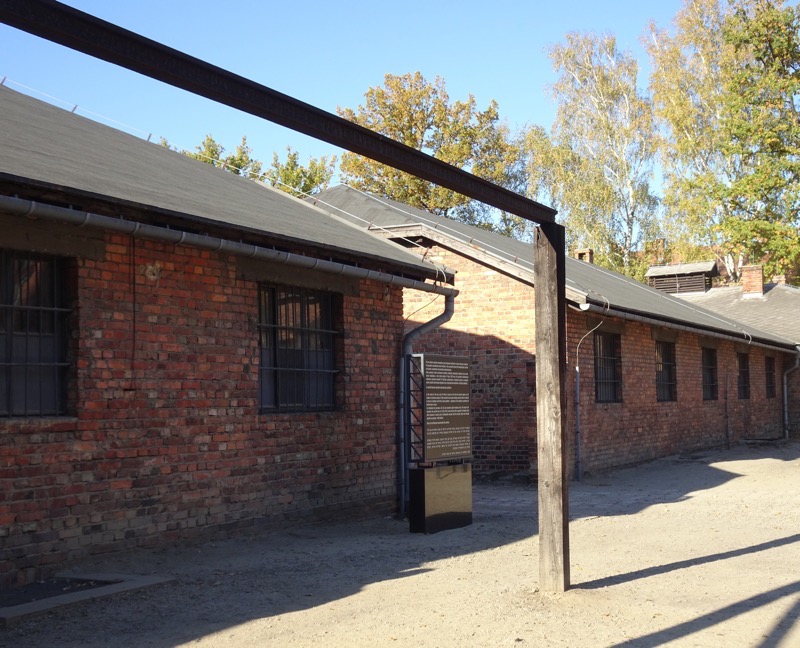



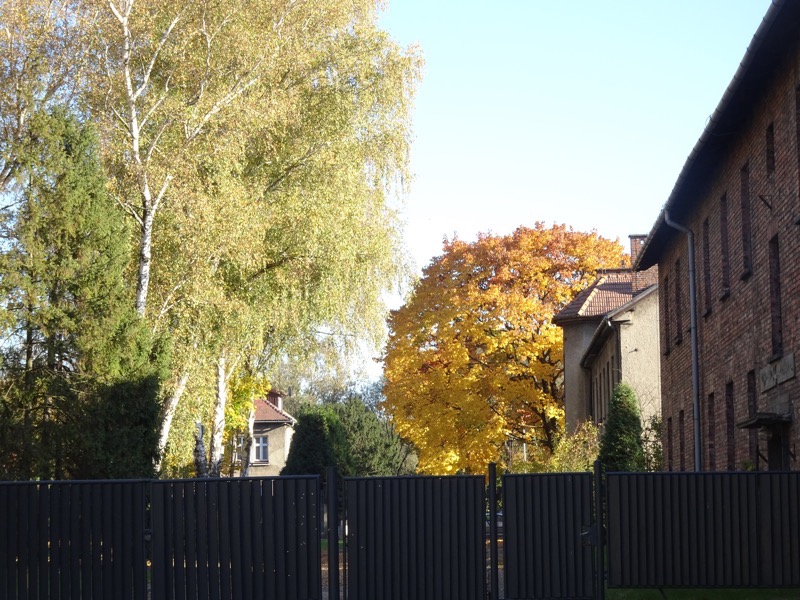 Later, after the war, and after the trials for war crimes, a special gallows was built here and Rudolph Höss was hanged on 16 April 1947, after a trial before the Polish Supreme National Tribunal. Fittingly he was executed at Auschwitz, in between of his former home and the gas chambers. It is not possible to believe that the Höss family didn’t hear, smell and see the airborne ash remains of the prisoners emerging from the chimneys, who met their fate in the gas chambers.
Later, after the war, and after the trials for war crimes, a special gallows was built here and Rudolph Höss was hanged on 16 April 1947, after a trial before the Polish Supreme National Tribunal. Fittingly he was executed at Auschwitz, in between of his former home and the gas chambers. It is not possible to believe that the Höss family didn’t hear, smell and see the airborne ash remains of the prisoners emerging from the chimneys, who met their fate in the gas chambers.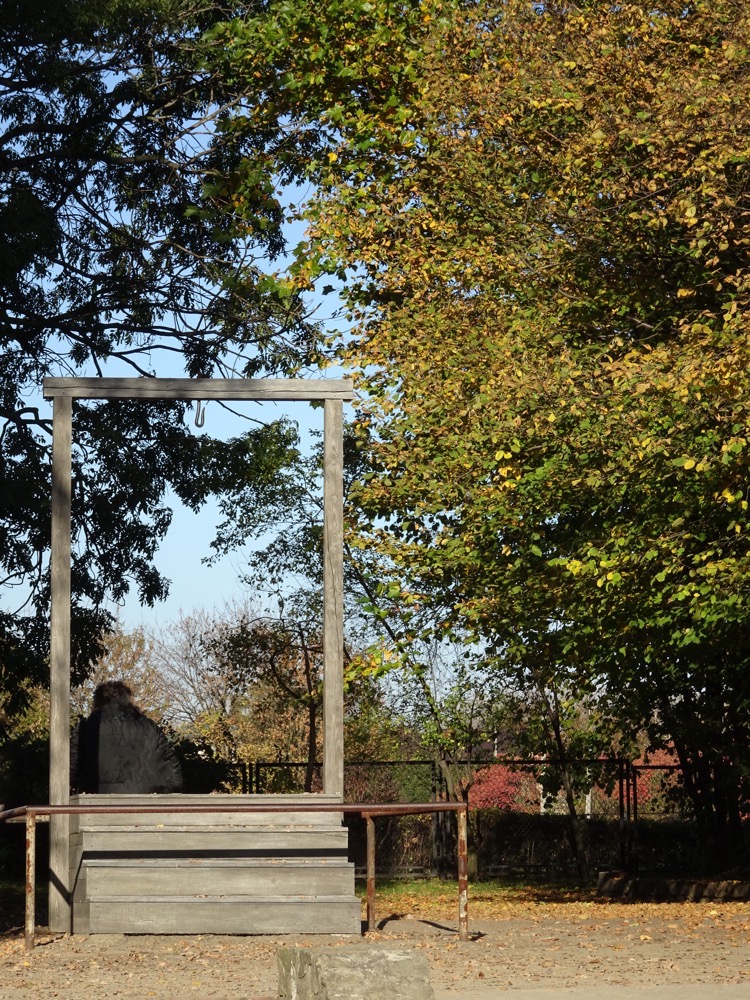
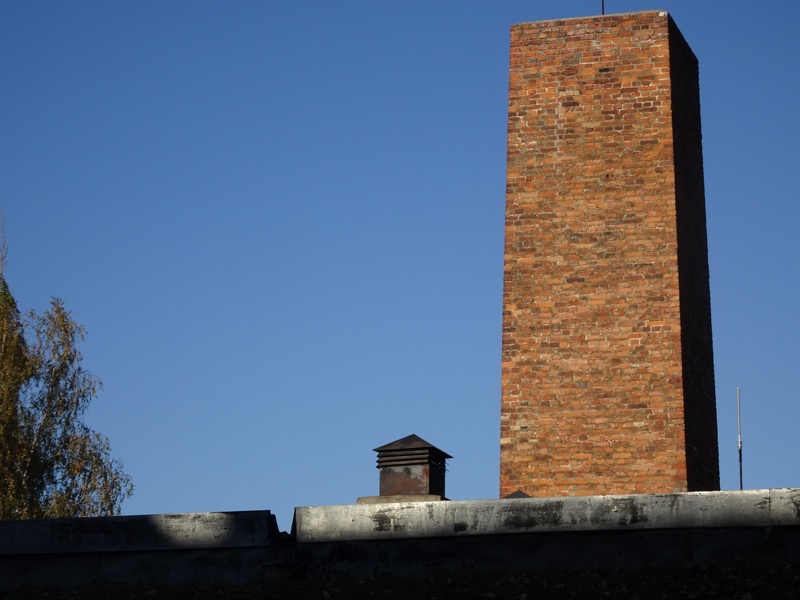
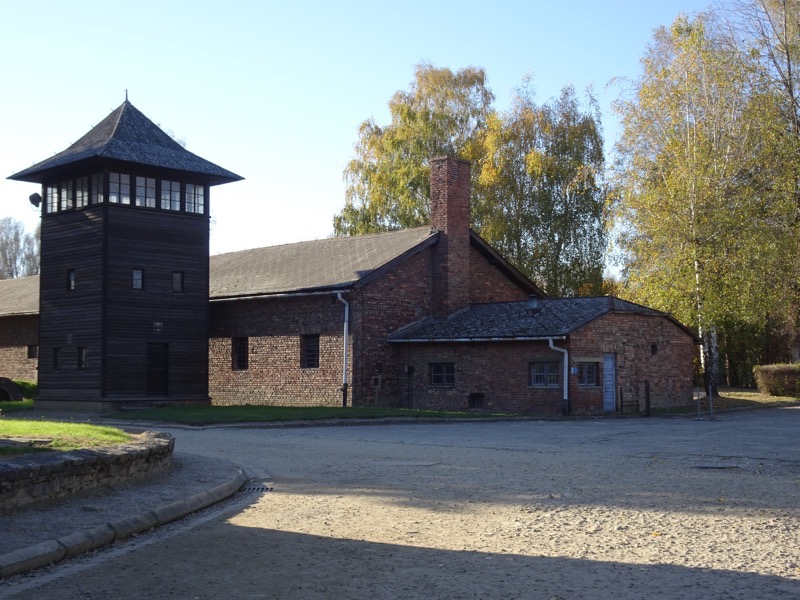 The small gas chamber at KL (Konzentrationslager) Auschwitz:
The small gas chamber at KL (Konzentrationslager) Auschwitz: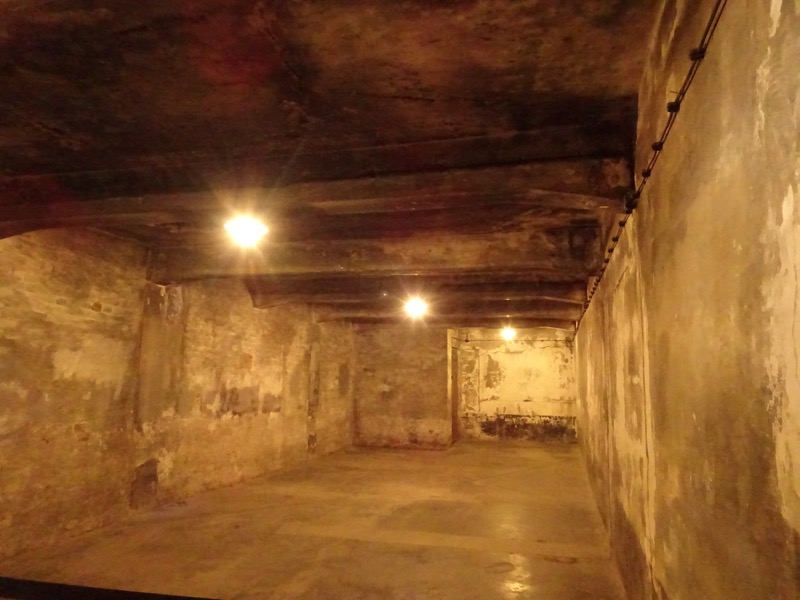
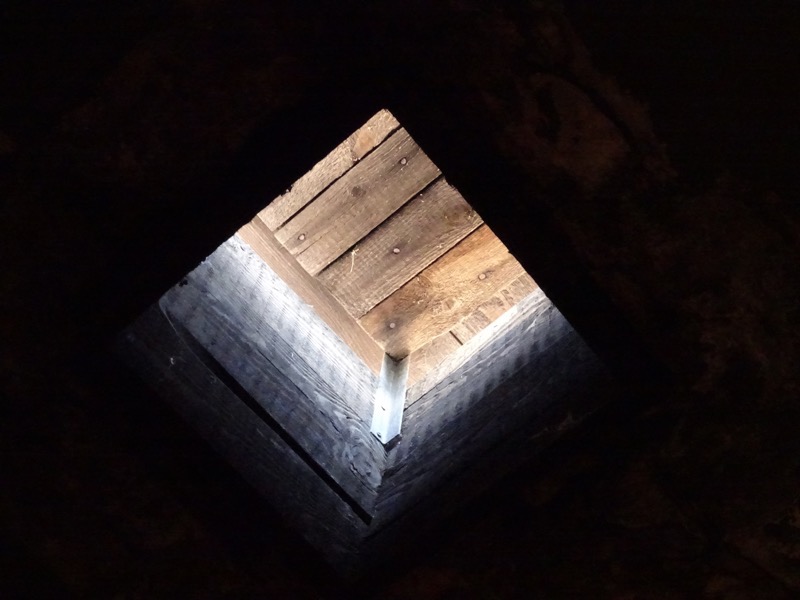 The creamation works directly beside the gas chamber.
The creamation works directly beside the gas chamber.
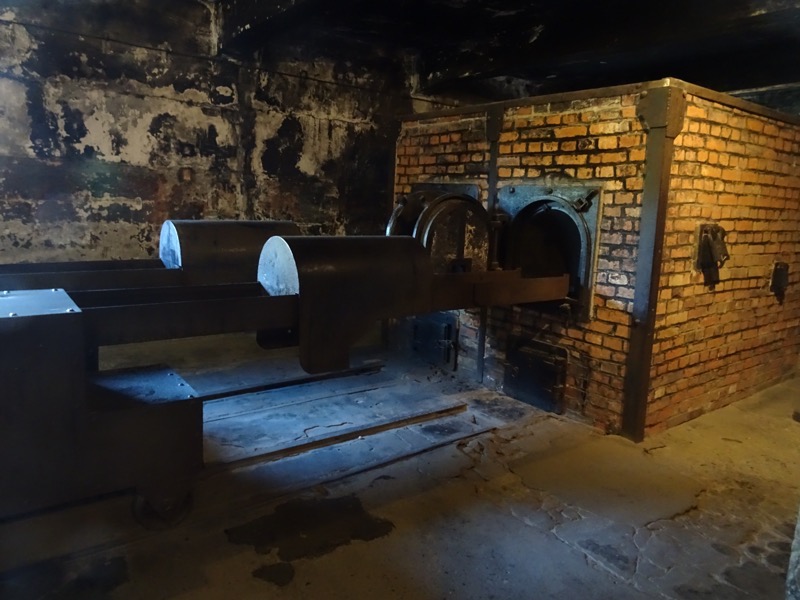 All of which is only divided from the worker/prisoner barracks by two rows of patrolled barbed wire. The prisoners must have also know the fates of those who entered the chambers.
All of which is only divided from the worker/prisoner barracks by two rows of patrolled barbed wire. The prisoners must have also know the fates of those who entered the chambers.
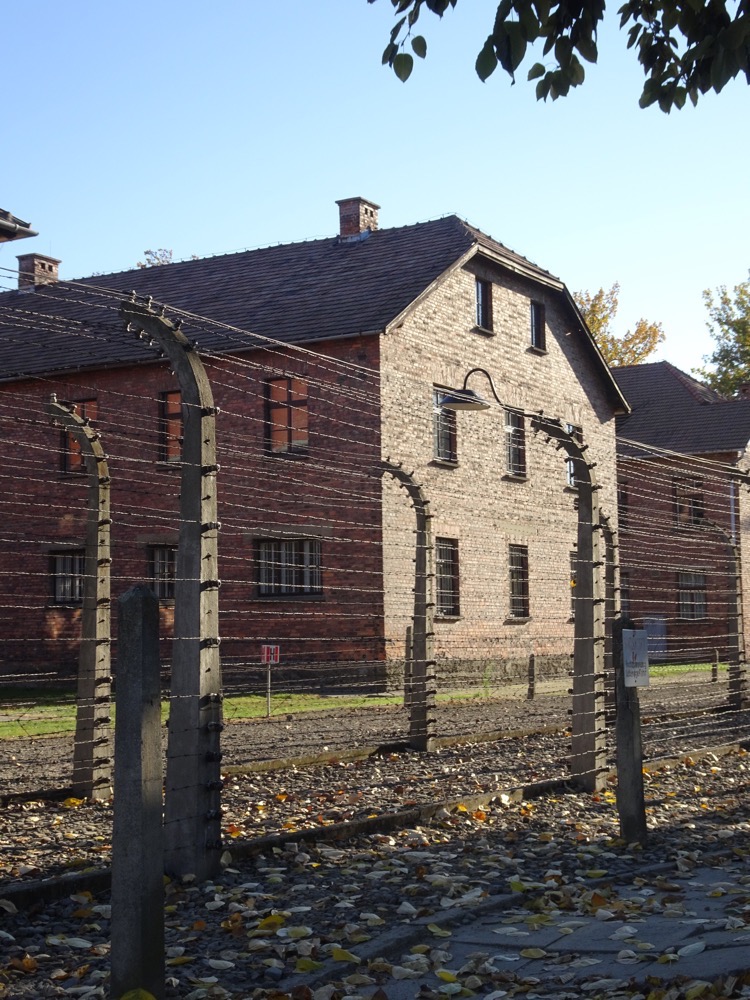 It was at this point we had a break in our tour and I took the opportunity to talk to our guide, Marta, who I had noticed handled the appalling and traumatizing material that she was imparting in a professional, yet very sensitive manner. She was managing to share some truly harrowing content with us in a matter of fact manner, and I wanted to commend her on what I thought must be a difficult and delicate balance between educating visitors and yet now allowing the recitation of bland facts to overwhelm the truly unbelievably vile events that occurred here. I was also curious to know how long she had been guiding visitors through Auschwitz, how many times each day would she go through the complex and how did she manage to not allow the horrific nature of the events that she was constantly discussing not to affect her personally on a psychological level? It turns out that Marta is not actually one of the main tour guides. She is a historian and curator at the museum and she only takes tours on rare occasions.
It was at this point we had a break in our tour and I took the opportunity to talk to our guide, Marta, who I had noticed handled the appalling and traumatizing material that she was imparting in a professional, yet very sensitive manner. She was managing to share some truly harrowing content with us in a matter of fact manner, and I wanted to commend her on what I thought must be a difficult and delicate balance between educating visitors and yet now allowing the recitation of bland facts to overwhelm the truly unbelievably vile events that occurred here. I was also curious to know how long she had been guiding visitors through Auschwitz, how many times each day would she go through the complex and how did she manage to not allow the horrific nature of the events that she was constantly discussing not to affect her personally on a psychological level? It turns out that Marta is not actually one of the main tour guides. She is a historian and curator at the museum and she only takes tours on rare occasions.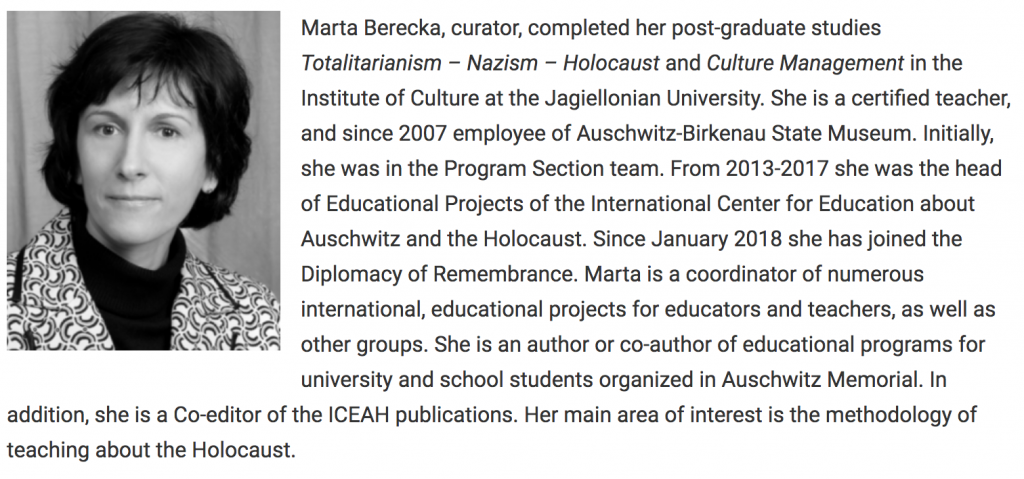

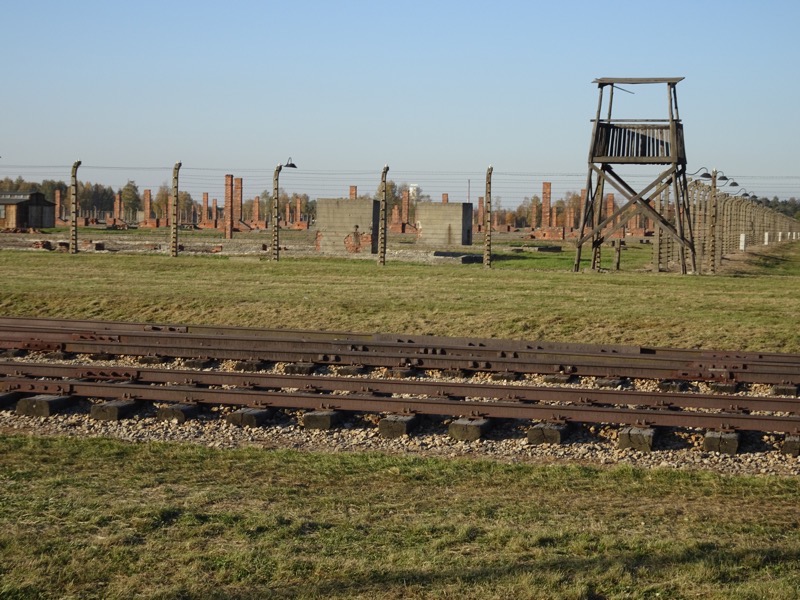
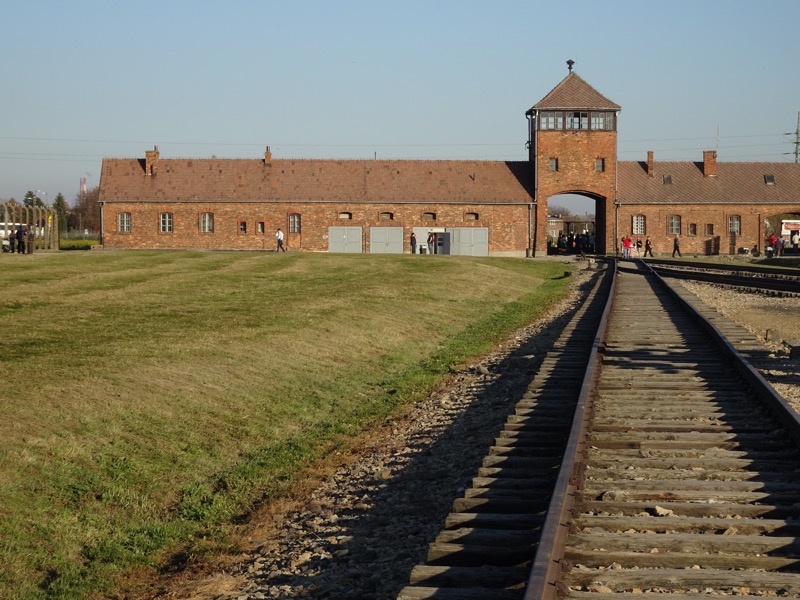
 It was during this part of the tour that the sheer scale of the camp hits visitors hard. One hundred and eighty hectares of organised misery, degradation and for most, eventual death.
It was during this part of the tour that the sheer scale of the camp hits visitors hard. One hundred and eighty hectares of organised misery, degradation and for most, eventual death.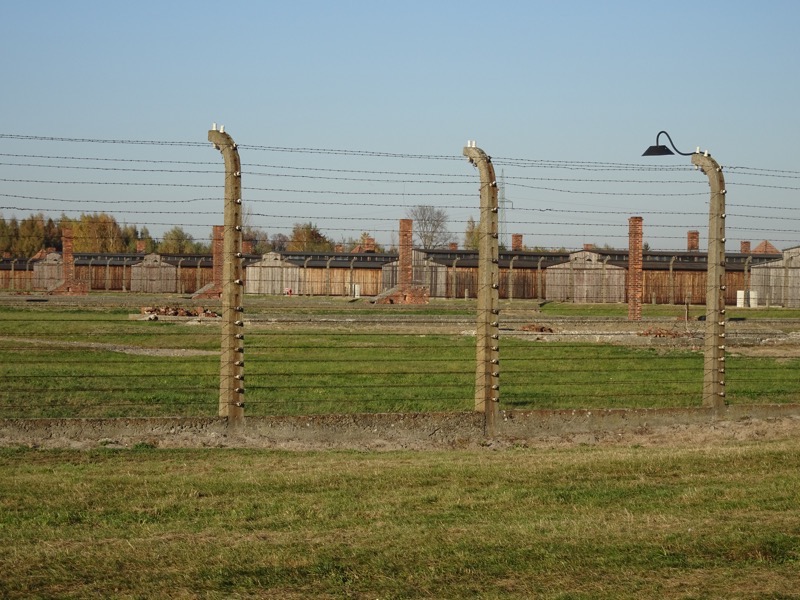 A replica of the railway cars which were used to transport most of the deportees to Auschwitz-Birkenau. Eighty to one hundred people were crammed into these cars for journeys lasting days with no food, no water and no toileting facilities. Tens of thousands of people arrived at the camp in cars just like this one.
A replica of the railway cars which were used to transport most of the deportees to Auschwitz-Birkenau. Eighty to one hundred people were crammed into these cars for journeys lasting days with no food, no water and no toileting facilities. Tens of thousands of people arrived at the camp in cars just like this one.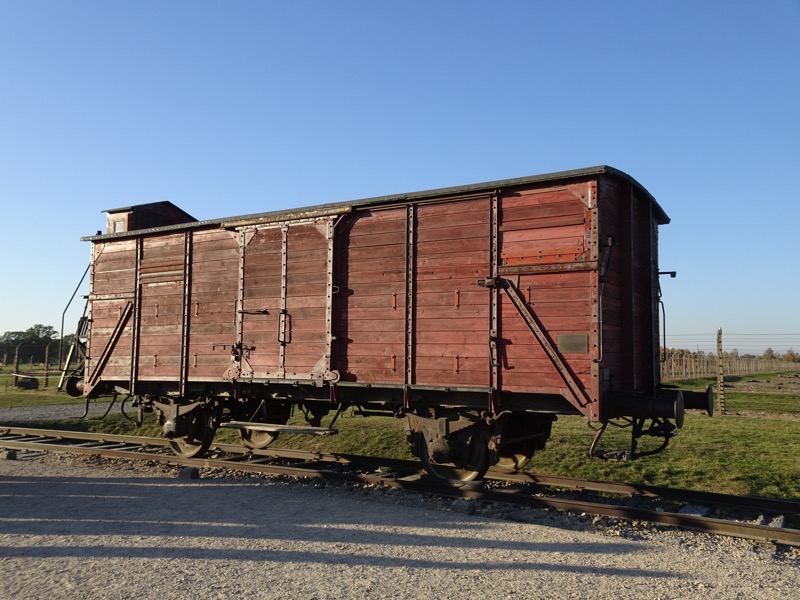 The further into the camp we walked, the size of the camp became more and more apparent.
The further into the camp we walked, the size of the camp became more and more apparent.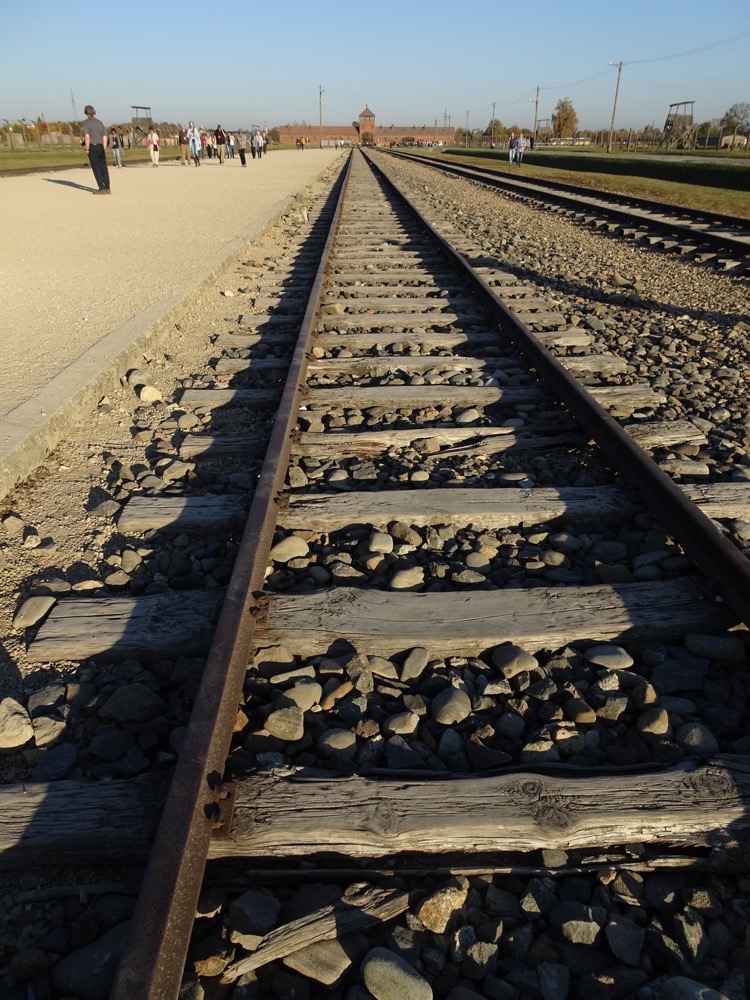
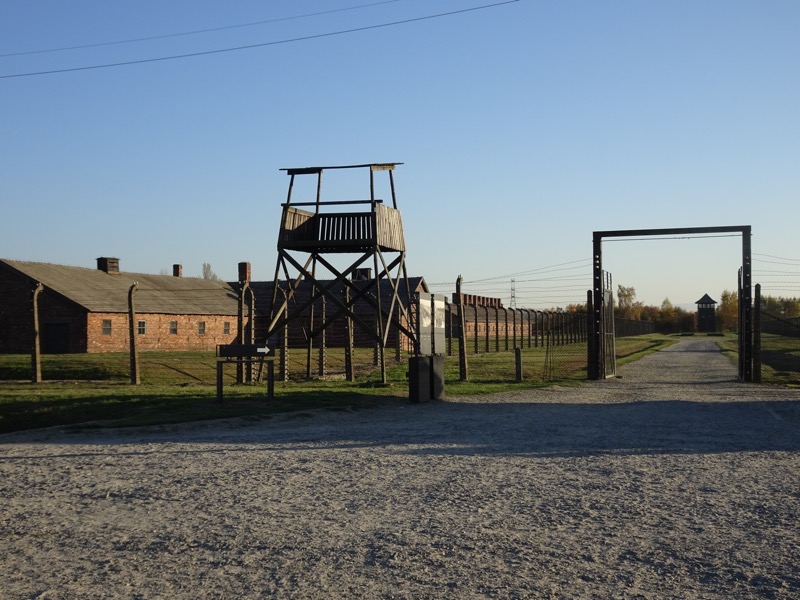
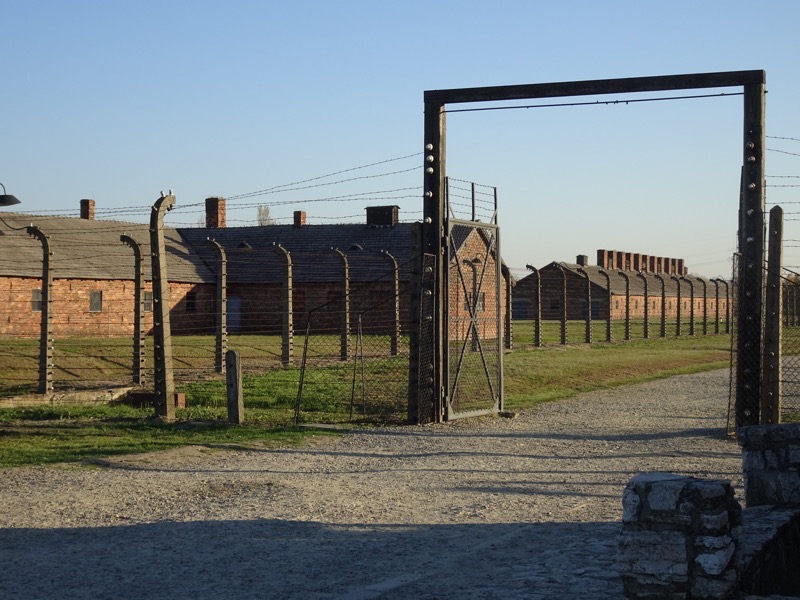 At the ramps at the end of the train tracks where the selection processes were carried out. Behind us is the massive L shaped gas chamber and industrial creamatoria complex.
At the ramps at the end of the train tracks where the selection processes were carried out. Behind us is the massive L shaped gas chamber and industrial creamatoria complex. The underground undressing chamber. Destroyed by departing Nazis as the end of the war became a certainty.
The underground undressing chamber. Destroyed by departing Nazis as the end of the war became a certainty.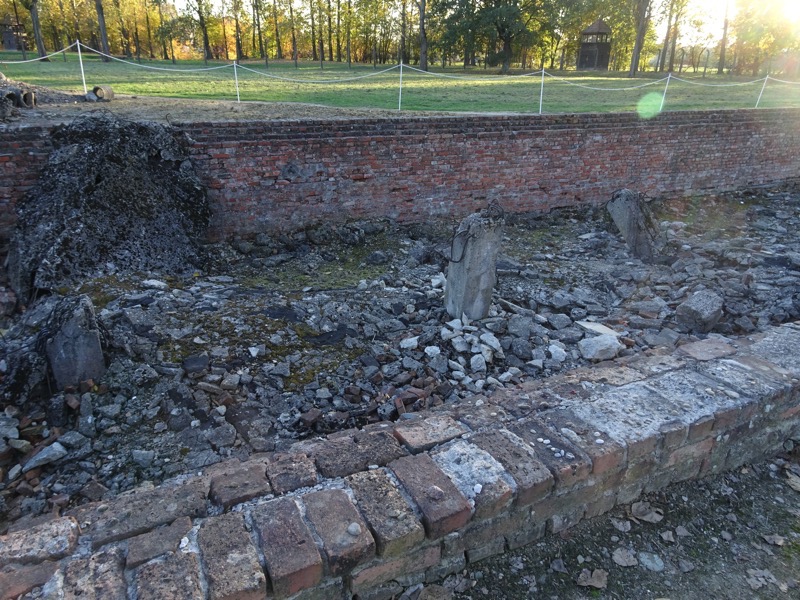 The collapsed roof of the gas chambers:
The collapsed roof of the gas chambers: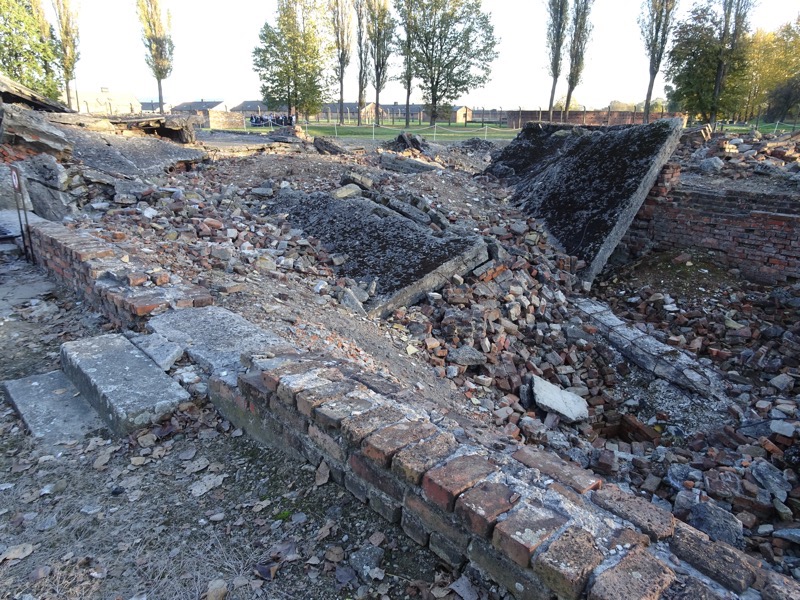
 The ruins of the cremation ovens:
The ruins of the cremation ovens: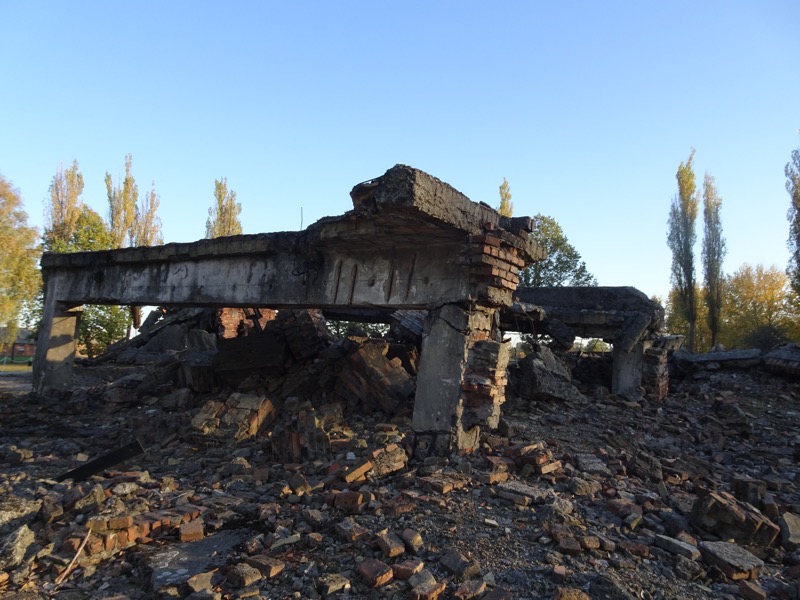 Much of the terrible work carried out in the mass extermination of the Jewish population was Sonderkommandos. The Sonderkommandos were a work detail made up of prisoners from the death camp. They were not civilian workers but were prisoners – usually Jewish – who were forced to work and aid in the management of victims, the looting of the bodies, and the disposal of the corpses in the gas chambers during the Holocaust. They were forced to complete this gruesome work or be killed themselves.
Much of the terrible work carried out in the mass extermination of the Jewish population was Sonderkommandos. The Sonderkommandos were a work detail made up of prisoners from the death camp. They were not civilian workers but were prisoners – usually Jewish – who were forced to work and aid in the management of victims, the looting of the bodies, and the disposal of the corpses in the gas chambers during the Holocaust. They were forced to complete this gruesome work or be killed themselves. 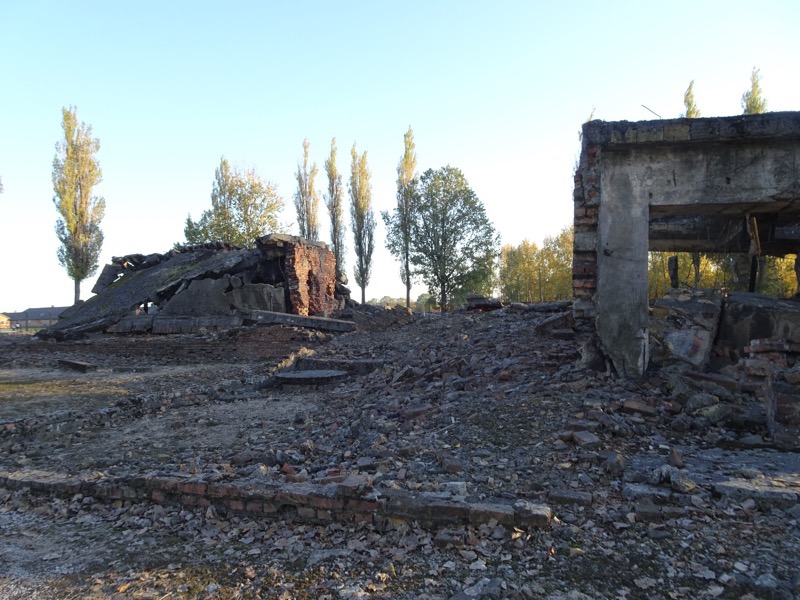
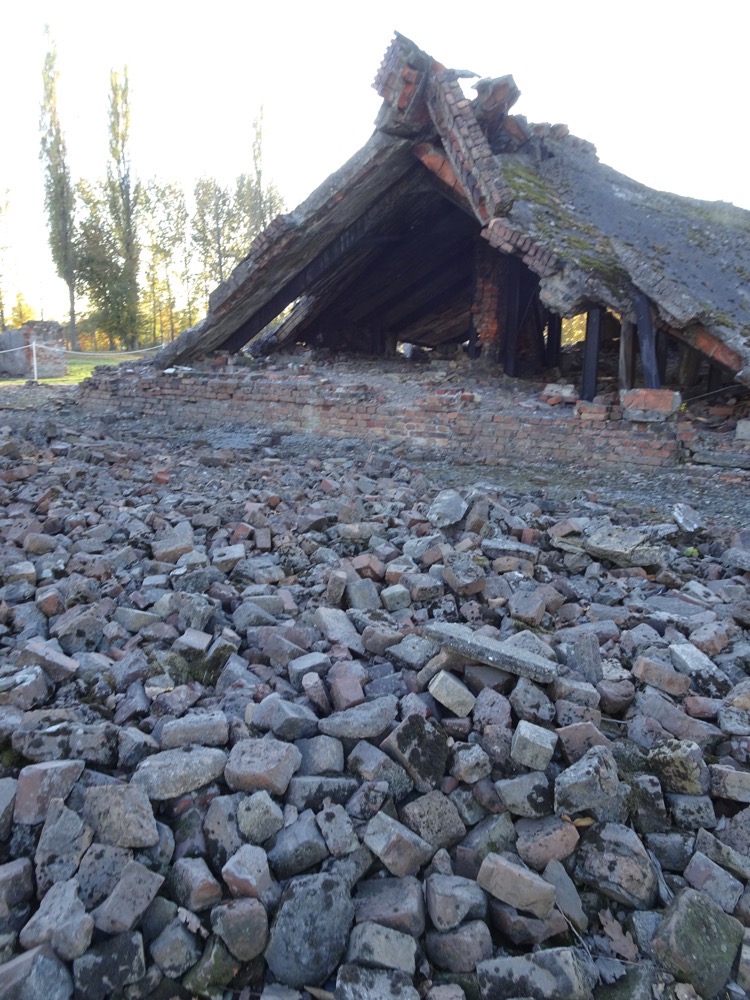


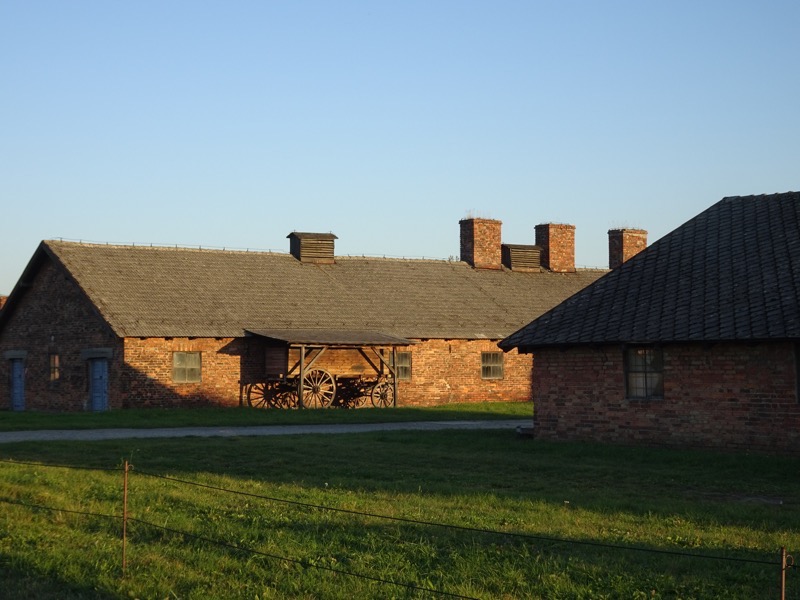
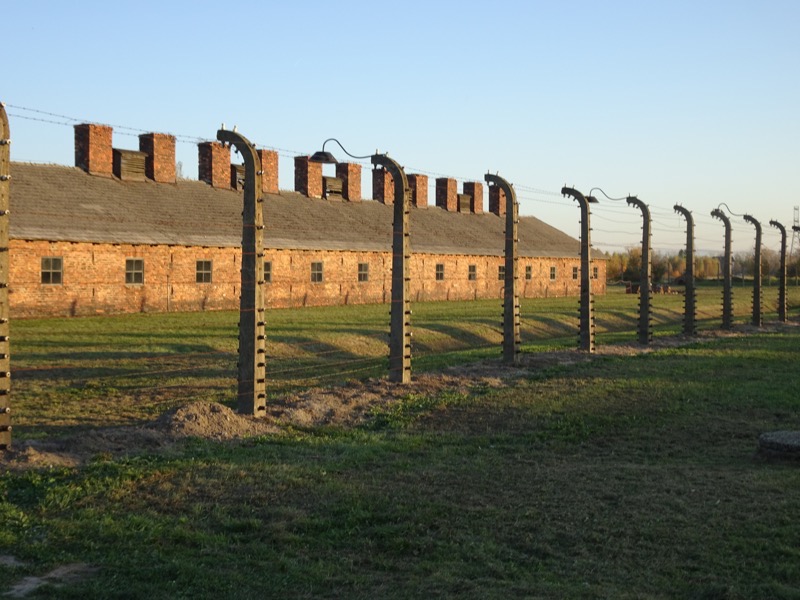 Inside Barracks 16A. ‘Beds’, such as they were, were three stories high and housed four to five people in each space. Necessary for warmth in winter but swelteringly uncomfortable and unsanitary in summer.
Inside Barracks 16A. ‘Beds’, such as they were, were three stories high and housed four to five people in each space. Necessary for warmth in winter but swelteringly uncomfortable and unsanitary in summer. There were no washing facilities in the buildings. Any bathing had to occur outside.
There were no washing facilities in the buildings. Any bathing had to occur outside.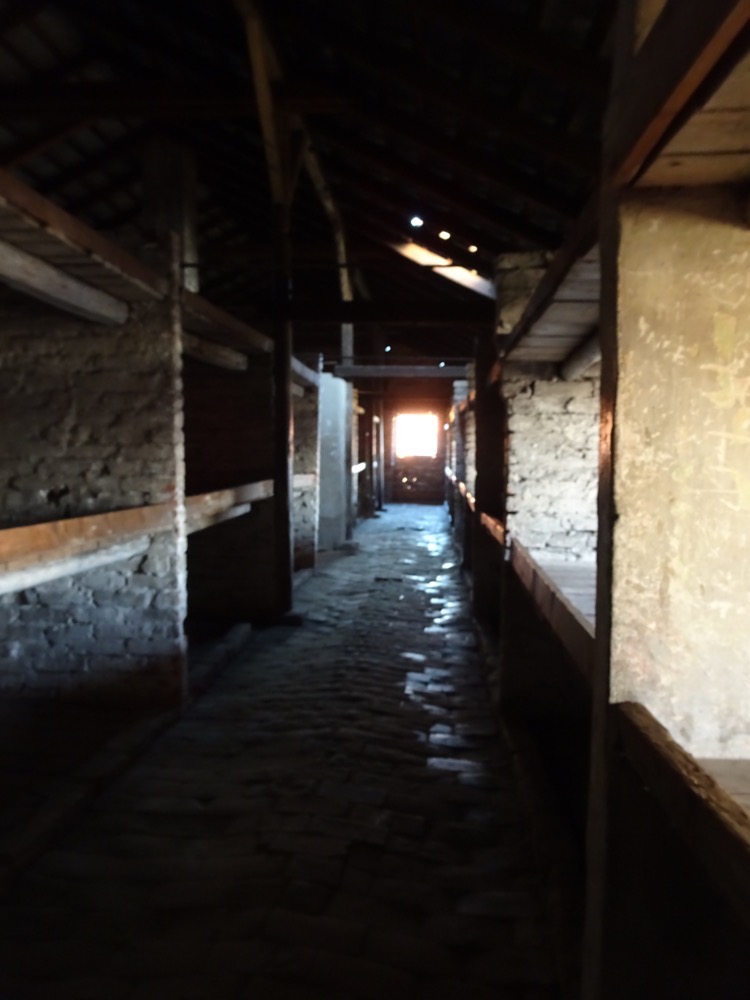
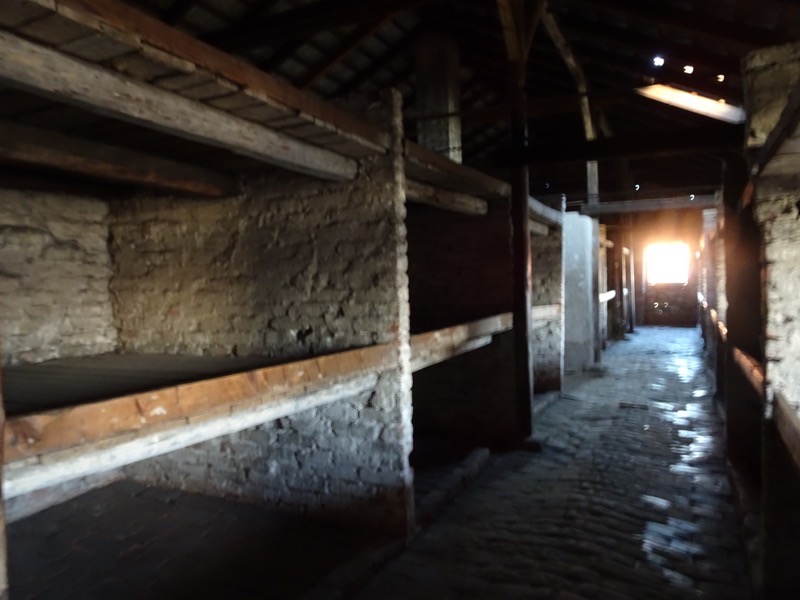
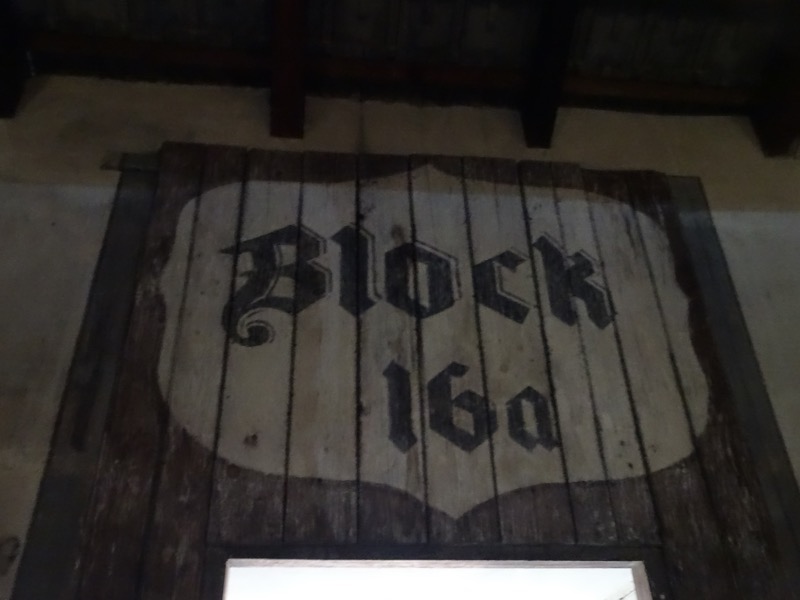 There is much more that could be said about Auschwitz-Birkenau, and there are incalculable books on the topic that adequately demonstrate that. But there is little that captures the feeling of being here and physically taking in this history in person.
There is much more that could be said about Auschwitz-Birkenau, and there are incalculable books on the topic that adequately demonstrate that. But there is little that captures the feeling of being here and physically taking in this history in person.
 As I was saying to Marta, I don’t remember a time in my life where I learned about the atrocities committed by the Nazis during WWI. I don’t remember gleaning this knowledge for the first time and being shocked and appalled by the inhumanity of it. I grew up seemingly always aware of Hitler, of Nazism, of the concentration camps almost by osmosis. The knowledge I always had merely grown in depth and detail as I got older… but having said this, I feel much like I didn’t really understand the extent of the horrors committed here until today. The scale of the brutality is unimaginable until you are faced with it.
As I was saying to Marta, I don’t remember a time in my life where I learned about the atrocities committed by the Nazis during WWI. I don’t remember gleaning this knowledge for the first time and being shocked and appalled by the inhumanity of it. I grew up seemingly always aware of Hitler, of Nazism, of the concentration camps almost by osmosis. The knowledge I always had merely grown in depth and detail as I got older… but having said this, I feel much like I didn’t really understand the extent of the horrors committed here until today. The scale of the brutality is unimaginable until you are faced with it. “The last thing to die is hope…”
“The last thing to die is hope…”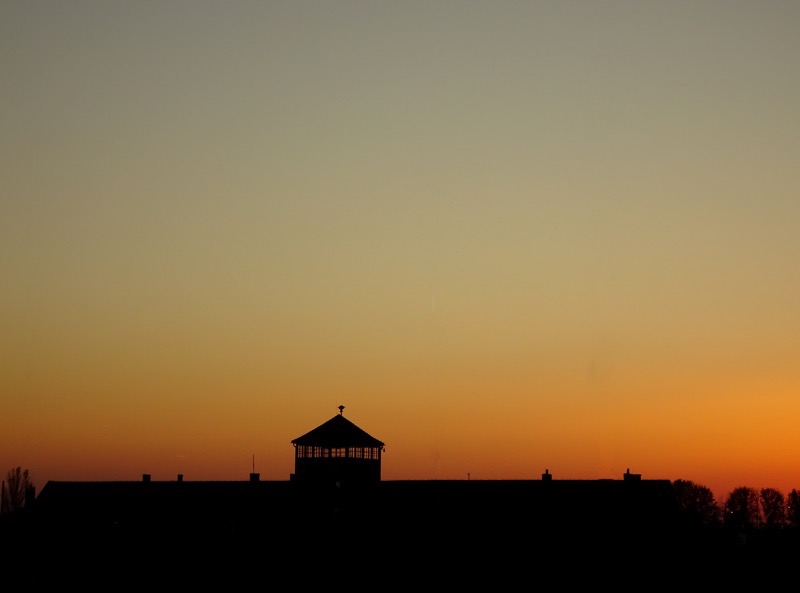
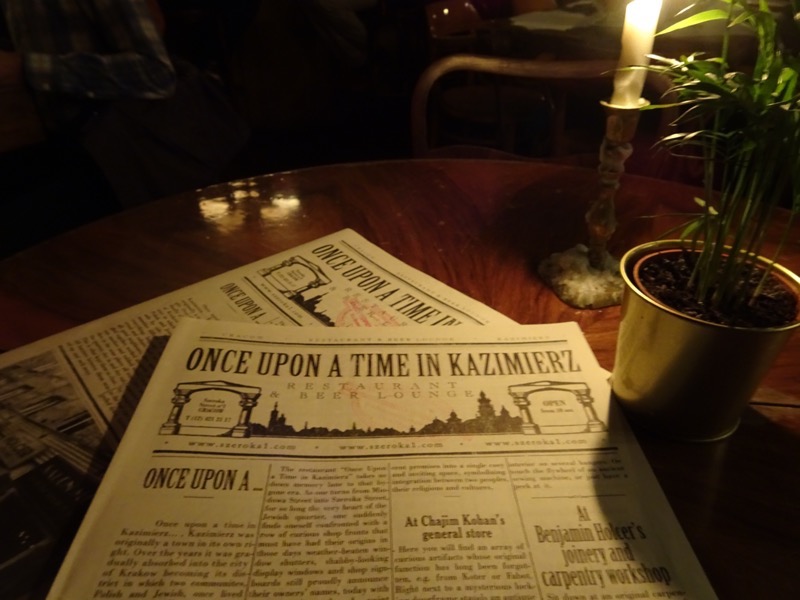 Weird and wonderful decor – one couple found themselves seated at a table that was actually an old treadle sewing machine.
Weird and wonderful decor – one couple found themselves seated at a table that was actually an old treadle sewing machine. Jewish Caviar – chopped chicken livers with eggs in truffle aroma, served with rye bread and whipped butter.
Jewish Caviar – chopped chicken livers with eggs in truffle aroma, served with rye bread and whipped butter. Beef and thyme pierogi, half and half (friend and boiled).
Beef and thyme pierogi, half and half (friend and boiled). Fillet of trout with vegetables in orange butter sauce (zucchini, leek and carrot).
Fillet of trout with vegetables in orange butter sauce (zucchini, leek and carrot). Jerusalem mix – chicken breast, liver, hearts in oriental spices and onion. Delicious!
Jerusalem mix – chicken breast, liver, hearts in oriental spices and onion. Delicious! We were the last to leave the restaurant after a couple more ciders!
We were the last to leave the restaurant after a couple more ciders!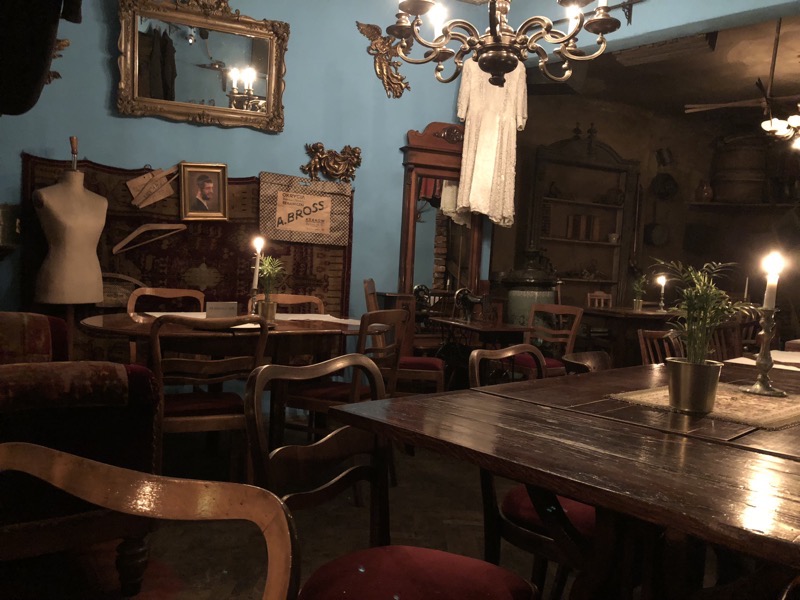 Dessert for yale: Pecan pie with vanilla ice cream:
Dessert for yale: Pecan pie with vanilla ice cream: And for me – steaming mead.
And for me – steaming mead.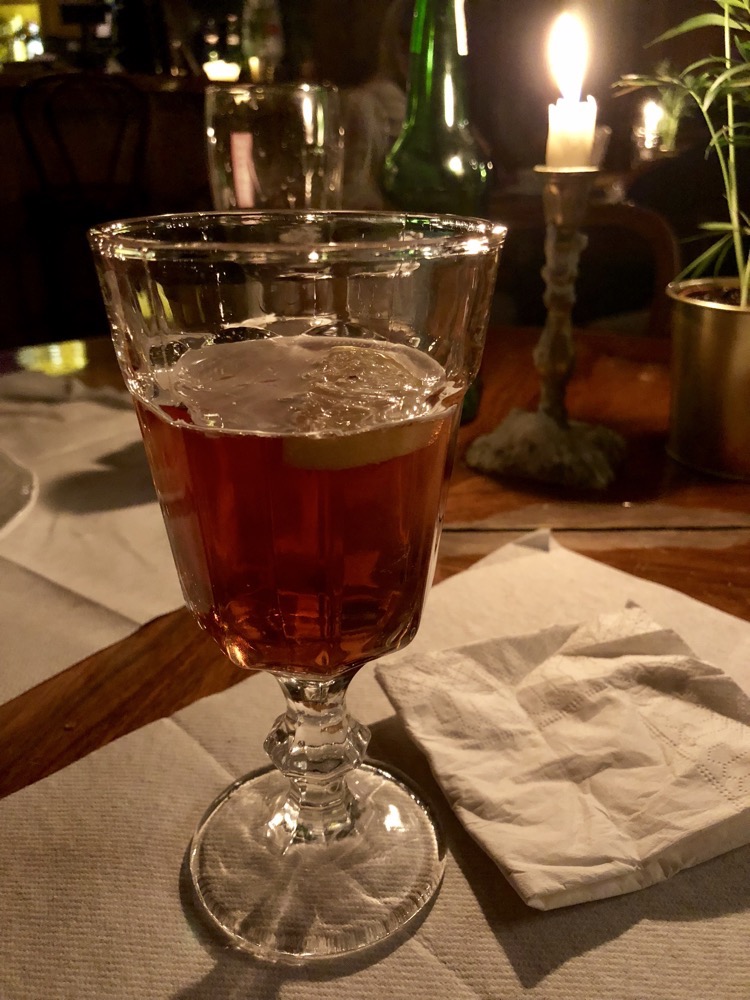 Long day. Need good sleep. Thankfully my, “can I speak to the manager” chat with the night conceirge guy has yielded a different room in the hotel with a better bed. Fingers crossed!
Long day. Need good sleep. Thankfully my, “can I speak to the manager” chat with the night conceirge guy has yielded a different room in the hotel with a better bed. Fingers crossed!